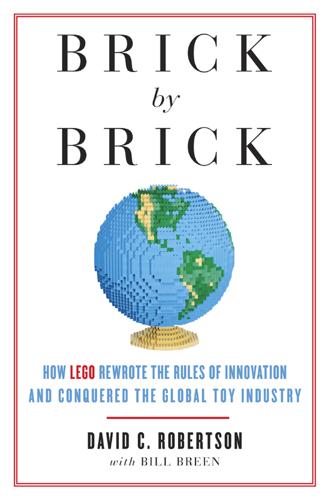
Brick by Brick: How LEGO Rewrote the Rules of Innovation and Conquered the Global Toy Industry
by
David Robertson
and
Bill Breen
Published 24 Jun 2013
“We were told from the top that the minifig wasn’t considered cool.” The Jack Stone “minifigure” (right) and a classic LEGO minifigure. Unlike the classic minifigure, the Jack Stone figure could not be disassembled. Practice disruptive innovation. In his book The Innovator’s Dilemma, Harvard Business School professor Clayton Christensen introduced his theory of disruptive innovation, which he defined as a less pricey product or service, initially designed for less-demanding customers, which catches on and captures its market, displacing the incumbents.10 Christensen saw how low-quality, low-cost technologies were ramping up faster than ever before.
…
To build new growth drivers, LEGO would once again seek out untapped, blue-ocean markets. (We will trace that effort in the next chapter.) And it would attempt to unleash a disruptive innovation—a low-end, low-quality product that improves over time and eventually upends the industry incumbents. In a New Yorker profile, Clayton Christensen cited the pint-size transistor radio as a prototypical example of a big, disruptive innovation. Launched by Sony in the late 1950s, the tinny, tiny radios, using the then-new technology of the transistor, had nowhere near the same sound quality as the big vacuum-tube RCA and Zenith consoles found in many middle-class homes.
…
Only then, after exploring the full spectrum of innovation and opening up its development process to outside contributors, did LEGO take on the more out-there strategies of launching a disruptive innovation with Universe and seeking out an untapped market with Games. Universe, of course, was a failure. But LEGO hasn’t given up. Some of the same strategies that work for a blue-ocean effort—adopt a start-up mentality, shield the team from the demands of other business units, realize that “good enough” is sometimes better than perfection—readily suit a disruptive effort. Having learned from its success with the blue-ocean strategy that was Games, LEGO can readily apply those lessons to its next attempt at a disruptive innovation, whatever it might be. As with any innovation effort, seizing on the truths of innovation requires a certain sequence and cadence.
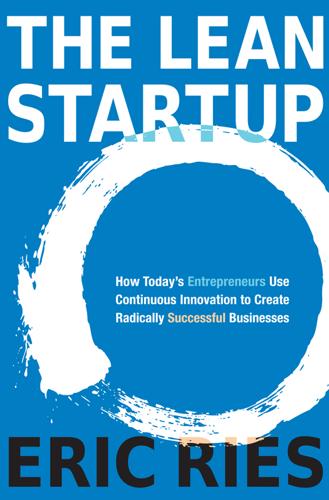
The Lean Startup: How Today’s Entrepreneurs Use Continuous Innovation to Create Radically Successful Businesses
by
Eric Ries
Published 13 Sep 2011
In Chapter 12, we’ll come full circle. As startups grow into established companies, they face the same pressures that make it necessary for today’s enterprises to find new ways to invest in disruptive innovation. In fact, we’ll see that an advantage of a successful startup’s rapid growth is that the company can keep its entrepreneurial DNA even as it matures. Today’s companies must learn to master a management portfolio of sustainable and disruptive innovation. It is an obsolete view that sees startups as going through discrete phases that leave earlier kinds of work—such as innovation—behind. Rather, modern companies must excel at doing multiple kinds of work in parallel.
…
The second problem is that after seeing traditional management fail to solve this problem, some entrepreneurs and investors have thrown up their hands and adopted the “Just Do It” school of startups. This school believes that if management is the problem, chaos is the answer. Unfortunately, as I can attest firsthand, this doesn’t work either. It may seem counterintuitive to think that something as disruptive, innovative, and chaotic as a startup can be managed or, to be accurate, must be managed. Most people think of process and management as boring and dull, whereas startups are dynamic and exciting. But what is actually exciting is to see startups succeed and change the world. The passion, energy, and vision that people bring to these new ventures are resources too precious to waste.
…
Usually, companies like Intuit fall into the trap described in Clayton Christensten’s The Innovator’s Dilemma: they are very good at creating incremental improvements to existing products and serving existing customers, which Christensen called sustaining innovation, but struggle to create breakthrough new products—disruptive innovation—that can create new sustainable sources of growth. One remarkable part of the SnapTax story is what the team leaders said when I asked them to account for their unlikely success. Did they hire superstar entrepreneurs from outside the company? No, they assembled a team from within Intuit. Did they face constant meddling from senior management, which is the bane of innovation teams in many companies?

Exponential Organizations: Why New Organizations Are Ten Times Better, Faster, and Cheaper Than Yours (And What to Do About It)
by
Salim Ismail
and
Yuri van Geest
Published 17 Oct 2014
That said, there is one notable departure for Coca-Cola relative to the ExO philosophy: the transparency of its disruptive innovation. It is our thesis that disruptive innovation efforts work best when they operate in stealth mode, divorced from the rest of the company, so as to avoid triggering an organizational immune system response. Instead, Coca-Cola, taking the long view, has created transparent disruption innovation teams with the avowed goal of openly changing the culture of the larger company. The company has even publicly taken a strategic stance to integrate disruptive innovations into its very core. It is an audacious experiment and we’re watching keenly to see how it pans out.
…
Remember the Iridium mobile phones case? The Navteq–Waze case? In addition, consider the well-known NASA motto: “Failure is not an option.” Although noble and inspiring, it was ultimately a death knell for exploration. When failure is not an option, you end up with safe, incremental innovation, with no radical breakthroughs or disruptive innovations. By integrating experimentation as a core value and adopting approaches like Lean Startup, enterprise failures—while still accepted as an inevitable part of risk—can be quick, relatively painless and insightful. Google, for example, is particularly good at experimentation: If a product is not meeting its goals, and resources could be better leveraged elsewhere, the product is shut down.
…
Note that today there is a whole category of the media industry—named for the underlying physical media it’s been trying to sell—which is actually made up of information businesses that have now been digitized. We believe the television industry will be the next to fall to the information ax. 3. Disruption is the New Norm In his influential bestseller The Innovator’s Dilemma, Clayton Christensen points out that disruptive innovation rarely comes from the status quo. That is, established industry players are rarely structured or prepared to counter disruption when eventually it appears. The newspaper industry is a perfect example: it sat by for a decade as Craigslist systematically disrupted the classified advertising model.

Humans as a Service: The Promise and Perils of Work in the Gig Economy
by
Jeremias Prassl
Published 7 May 2018
Beijing passengers were quick to take to social media and complain of a near doubling of the cost of rides, as discount codes and other subsidies were swiftly withdrawn.28 * * * Keeping Regulators at Bay 39 Disruptive Innovation? In any event, some proponents of the sharing economy argue, society still reaps major benefits from growth driven by platforms’ innovative disruption of existing business models. Picking up a few stones and hurtling them along in a little sling is, after all, a much less capital-intensive way of going about the business of slaying your enemies than heavy armour and swords, regardless of how many foot soldiers are at it. Not quite, replies the Harvard Business School guru behind the theory of disruptive innovation. In December 2015, Clayton M.
…
L. 176 Chen, Keith 122 Davies, Paul 174 Cherry 38 Davies, Rob 151 Cherry, Miriam 97, 99, 132, 173, 174, 184 Day, Iris 177 chess robots 1, 6 Deakin, Simon 36, 112, 130, 131, 152, 172, China 12, 38, 153 174, 177, 178, 184, 185 Chowdhry, Amit 181 deductions from pay 15, 19, 60, 63, 67 Christenson, Clayton M. 39 Deep Blue 1 ‘churn’/worker turnover 68 Deliveroo 2, 11, 12, 13, 115 Clark, Shelby 46 collective action by drivers 113 classificatory schemes 13, 28–9, 147 contractual prohibitions 66–7 misclassification 95, 96–100 employment litigation 99 Clement, Barrie 162 internal guidelines 43–4 Clover, Charles 153 safety and liability 122–3 Coase, Ronald 19, 94, 101, 172 wage rates 65 Coase’s theory 19, 20 delivery apps 2 Codagnone, Cristiano 150 demand fluctuations 78 Cohen, Molly 36, 37, 152, 157 Denmark 36 ‘collaborative consumption’ 42 deregulation 37, 40 (see also regulation) collective action 113–15 Dholakia, Utpal 150 collective bargaining rights 48, 65, 82 Didi 2, 12, 38 commission deductions 15, 19, 60, 63, 67 differential wage rates 109–11 commodification of work 76, 77, 110 digital disruption 49, 50 competition 88 ‘digital feudalism’ 83 consumer demand 17–18 digital innovation see innovation consumer protection 10, 112, 121, 128–9 digital market manipulation 123 safety and liability 122–3, 128–9 digital payment systems 5 * * * Index 193 digital work intermediation 5, 11, 13–16 borderline cases 100 disability discrimination 62, 121 identifying the employer 100 discriminatory practices 62, 94, 113, easy cases 102–3 121, 180 functional concept of the disputes 66 employer 101–2, 104 disruptive innovation 39–40, 49, 50, 95 genuine entrepreneurs 103 dockyards 78, 79–80 harder cases 103–4 ‘doublespeak’ 31–50, 71, 95, 97–8, 133 multiple employers 103 Doug H 160, 163 platforms as employers 102–3 down-time 60, 65, 76, 77 ‘independent worker’ 48 Downs, Julie 180 misclassification 95, 96–100 Drake, Barbara 168 ‘personal scope question’ 93 drink driving 133, 184–5 employment taxes 125–7 Dzieza, Josh 163 Engels, Friedrich 81, 168 ‘entrepreneur-coordinator’ 101 economic crises 145 entrepreneurship 6, 8, 21, 32, 42, 43, economic drivers 7, 18–24 45–6, 50, 52 (see also micro- Edwards, Jim 146 entrepreneurs) efficiency 7 autonomy 53–5 Elejalde-Ruiz, Alexia 175 algorithmic control and 55–8 ‘elite worker’ status 61, 67 sanctions and 61–3 ‘emperor’s new clothes’ 71 wages and 58–61 empirical studies 28–9 freedom 8, 14, 27, 29, 47, 49, 51, 52, employer responsibility 104 53, 55, 65–8, 69, 85, 96, 108, 110, employment contracts 94 112, 113 bilateral relationships 100 on-demand trap and 68–70 employment law 4, 9, 10, 38, 84 risk and 86 (see also regulation) genuine entrepreneurs 102, 103 continuing importance 139–40 misclassification 96–7, 98, 101 control/protection trade-off 93–4, 95 ‘personal scope question’ 93 European Union 107, 111, 112, 178 self-determination 63–5 flexibility and environmental impacts 21, 26 innovation and 90 Estlund, Cynthia 137, 185 measuring working time 105–7 Estonia 127 mutuality of obligation 174 Estrada, David 41 new proposals 46–9 euphemisms 44–5 rebalancing the scales 107–8 European Union law 107, 111, 112, 178 collective action 113–15 exploitation 26–7 portable ratings 111–13 Ezrachi, Ariel 150 surge pricing 108–11 ‘risk function’ 131, 132 Facebook 35, 57 workers’ rights 105 FairCrowdWork 114, 179 rights vs flexibility 115–17 Farrell, Sean 164 employment litigation FedEx 97 FedEx 97, 173 feedback 5, 15–16 France 99 Feeney, Matthew 35, 151 Uber 45, 48, 54–5, 98, 99, 106, 115 Field, Frank 26 UK 45, 48, 98–9, 106, 115 financial losses 22–3 US 54–5, 97, 98, 99 ‘financially strapped’ 29 employment status 21, 45, 47 Finkin, Matthew 74, 84, 166, 169 * * * 194 Index Fiverr 12, 13, 24, 78 historical precedents and CEO 17 problems 72, 73–85 Fleischer, Victor 20, 147 rebranding work 4–6, 32 flexibility 8, 10, 12, 107, 108 labour as a technology 5–6 vs rights 115–17 market entrants 88 food-delivery apps 12 matching 13, 14, 18–20 Foodora 2, 12 monopoly power 23–4, 28 Foucault, Michel 55, 159 network effects 23–4 founding myths 34–5 overview 2–3 Fox, Justin 182 perils 6, 26–8, 31 fragmented labour markets 83, 84, 86, platform paradox 5 90, 113 platforms as a service 7–8 France 78 consumer protection 10 employment litigation 99 potential 6, 7, 12, 24–6, 31 Labour Code 114, 176, 179 regulation 9–10 (see also regulation) regulatory battles 36 real cost of on-demand services 119, tax liability 126 121–2 (see also structural ‘free agents’ 28–9 imbalances) Freedland, Mark 174, 175 regulation see regulation Freedman, Judith 111, 178 regulatory arbitrage 20–2 freedom 8, 14, 27, 29, 47, 49, 51, 52, 53, size of the phenomenon 16–17, 145–6 55, 65–8, 69, 85, 96, 108, 110, work on demand 11–29 112, 113 gigwork 13 on-demand trap and 68–70 Giliker, Paula 183 risk and 86 global economic crises 145 Frey, Carl 136, 185 Goodley, Simon 173 Fried, Ina 183 GPS 5, 57 Greenhouse, Steven 66, 164 Gardner-Selby, W. 185 Griswold, Alison 164, 181 gender parity 144 (see also Grossman, Nick 46 discriminatory practices) Gumtree 20 Germany Gurley, Bill 161 regulatory battles 36 Guyoncourt, Sally 178 workers’ rights 114 gift vouchers 105 Hacker, Jacob 86, 170 gig economy Hall, Jonathan 60, 162, 165 business models 12–13, 44, 100 Hammond, Philip 126, 182 cash burn 22–3 Hancock, Matthew 46, 166 clash of narratives 8 Handy 18 classification 13, 28–9 Hardy, Tess 176 critics 2, 3, 8 Harman, Greg 163 digital work intermediation 5, 11, Harris, Seth 48, 49, 105, 157, 175 13–16 Hatton, Erin 82, 169 economic drivers 7, 18–24 Heap, Lisa 177 empirical studies 28–9 Helpling 2 employment law and see employment Hemel, Daniel 147, 170 law Hesketh, Scott 181 enthusiasts 3, 4, 8 hiring practices: historical gigwork vs crowdwork 13 perspective 78, 79 growth 17–18 historical perspective 72, 73–85 ‘humans as a service’ 3–6 Hitch 38 * * * Index 195 Hitlin, Paul 162 Internet Holtgrewe, Ursula 169 collective action 113 HomeJoy 132 Third Wave 73 Hook, Leslie 153 Irani, Lilly 6, 114, 142, 162, 179 Horan, Hubert 22, 148 Isaac, Mike 170, 171 Horowith, Sara 144 Issa, Darrell 41 hostile takeovers 111–12 Howe, Jeff 7, 11, 142 jargon 42–5 Huet, Ellen 153 Jensen, Vernon 167, 168, 170 Human Intelligence Tasks (HITs) 60, 93 Jobs, Steve 35 ‘humans as a service’ 3–6 joint and several liability 104 historical precedents and problems 72, Justia Trademarks 143 73–85 rebranding work 4–6, 32, 40–50 Kalanick, Travis 43, 86 Hunter, Rachel 106, 176 Kalman, Frank 16, 144 Huws, Ursula 27, 141, 150 Kaminska, Izabella 22–3, 44, 90, 148, 156, 169, 171, 172 ‘idle’ time 60, 65, 76, 77 Kaplow, Louis 184 illegal practices 57 Kasparov, Garry 1 immigrant workers 77 Katz, Lawrence 16 incentive structures 67–8 Katz, Vanessa 116, 179 independent contractors 21 Kaufman, Micha 17, 145, 149 Independent Workers Union of Great Kempelen, Wolfgang von 1 Britain (IWGB) 113, 179 Kennedy, John F. 135, 185 industrialization 75 Kenya 36 industry narratives 32–3, 49–50 Kessler, Sarah 151 information asymmetries 32, 54, 87, 131 Keynes, John Maynard 135, 185 innovation 3, 6, 8, 9, 10, 31, 32, 42, 45–6, King, Tom, Lord King of Bridgwater 71 110 cheap labour and 89 Kirk, David 133, 184 disruptive innovation 39–40, 49, 95 Kitchell, Susan 166 historical precedents and problems 72, Klemperer, Paul 165 73–85 Krueger, Alan 16, 48, 49, 60, 105, 106, incentives 86–90 157, 162, 165, 175 myths 72, 83 Krugman, Paul 170 obstacles to 88–90 Kucera, David 186 paradox 72, 87 problematic aspects 85–90 labour law see employment law productivity and 87 Lagarde, Christine 86, 170 shifting risk 85–6 Leimeister, Jan Marco 13 workers’ interests and 89–90 Leonard, Andrew 33, 151 innovation law perspective 36 Lewis, Mervyn 168 ‘Innovation Paradox’ 9 Liepman, Lindsay 184 insecure work 9, 10, 12, 27, 42, 107 Lloyd-Jones, Roger 168 historical perspective 80, 81 loan facilities 68 insurance 123 lobbying groups 32, 47, 48 intermediaries 83 (see also digital work Lobel, Orly 11, 37–8 intermediation) low-paid work 9, 26–7, 40–2, historical perspective 79–80 59, 61 International Labour Organization low-skilled work 76, 77, 82 (ILO) 4, 83, 97, 169, 173 automation and 138 * * * 196 Index Lukes, Steven 159 Murgia, Madhumita 182 Lyft 2, 12, 13, 38, 41, 42, 76 mutuality of obligation 174 algorithmic control mechanisms 56 network effects 23–4 regulatory battles 35 Newcomer, Eric 148, 165 Uber’s competitive strategies 88 Newton, Casey 164 Nowag, Julian 183 McAfee, Andrew 137, 138, 185 Machiavelli, Niccolo 93, 172 O’Connor, Sarah 43, 155 machine learning 136, 137 ODesk 60 McCurry, Justin 186 O’Donovan, Caroline 144, 164, 181 Malone, Tom 73 Oei, Shu-Yi 124, 125, 132, 147, 182, 184 Mamertino, Mariano 161, 163 Ola 2, 12 market entrants 88 on-demand trap 68–70 market manipulation 123 on-demand work 11– 29 Markowitz, Harry 184 real cost of on-demand services 119, Marsh, Grace 182 121–2 (see also structural Marshall, Aarian 186 imbalances) Martens, Bertin 150 Orwell, George 31, 151 Marvit, Moshe 142 Osborne, Hilary 164 Marx, Patricia 119–20, 180 Osborne, Michael 136, 185 matching 13, 14, 18–20 outsourcing Maugham, Jolyon 182 agencies 40 Mayhew, Henry 77, 78, 79, 167 ‘web services’ 2 Mechanical Turk 1, 2, 6 outwork industry 74–5, 76–7, 79, 80, 89 mental harm 57–8 Owen, Jonathan 178 Meyer, Jared 149 ‘micro-entrepreneurs’ 8, 21, 46, 49, Padget, Marty 186 52–3, 63 Pannick, David, Lord Pannick 110 ‘micro-wages’ 27 Pasquale, Frank 8, 40, 154 middlemen 80 Peck, Jessica Lynn 26 minimum wage levels 3, 9, 21, 26, 27, 59, peer-to-peer collaboration 42, 43 94, 104, 105 Peers.org 32–3 minimum working hour guarantees 108 performance standard probations 61 misidentification 95, 96–100 personal data 112, 178 mobile payment mechanisms 5 ‘personal scope question’ 93 monopoly power 23–4, 28 Pissarides, Christopher 19, 147 Morris, David Z. 171 platform paradox 5 Morris, Gillian 174 platform responsibility 122–3, 128 MTurk 2, 3, 4, 11, 12, 24–5, 76, 139, platforms as a service 7–8 161–2, 163 consumer protection 10 algorithmic control mechanisms 56 regulation 9–10 (see also regulation) business model 100, 101, 103, 104 Plouffe, David 154 commission deductions 63 Poe, Edgar Allen 1 digital work intermediation 14, 15 Polanyi’s paradox 138–9 matching 19 political activism 114 payment in gift vouchers 105 portable ratings 111–13 quality control 120 Porter, Eduardo 171 TurkOpticon 114 ‘postindustrial corporations’ 20 wage rates 59, 60, 61 Postmates 57, 63, 121 * * * Index 197 Poyntz, Juliet Stuart 168 structural imbalances 130, 131 Prassl, Jeremias 174, 175, 176, 177, robots 136–7 178, 183 Mechanical Turk 1, 6 precarious work 9, 10, 12, 27, 42, 107 Rodgers, Joan 177 historical perspective 80, 81 Rodriguez, Joe Fitzgerald 181 price quotes 121–2 Rönnmar, Mia 175 surge pricing 58, 108–11, 122 Roosevelt, Franklin D. 133, 185 Primack, Dan 148 Rosenblat, Alex 54, 56, 65, 123, 131, 159, productivity 87 160, 163, 164, 182, 184 public discourse 69 Rosenblat, Joel 165 public health implications 27 Rubery, Jill 84, 169 punishment 57 (see also sanctions) Ryall, Jenny 181 quality control 5, 80, 120 safe harbours 47, 49 safety and liability 122–3, 128–9 rating mechanisms 5, 15–16, 53–4 sanctions 61–3 (see also punishment) algorithms 54, 55, 87–8 Sandbu, Martin 87, 170 discrimination 62, 113 Scheiber, Noam 164 portable ratings 111–13 Schmiechen, James 167, 168, 169 sanctions and 61–3 Schumpeter, Joseph 133 rebranding work 4–6, 32, 40–50 self-dealing 123 regulation 9–10 (see also employment law) self-determination 36–7, 47, 63–5 industry narratives 32–3, 49–50 (see also autonomy) new proposals 31, 46–9, 50 self-driving cars 89, 137 opponents 31, 33–4 sexual assaults 121, 180–1 Disruptive Davids 34–7 sexual discrimination 62, 144, 180 disruptive innovation theory ‘sham self-employment’ 97 39–40, 49 sharing economy 7, 20, 51 New Goliaths 37–40 critics 32–3 regulatory battles 35–7, 47–9 disruptive innovation 39, 49 safe harbours 47, 49 enthusiasts 61 self-regulation 36–7, 47 Sharing Economy UK 33, 37 shaping 32–3, 45–9 sharing platforms 116 regulatory arbitrage 20 –2, 147 Shavell, Steven 184 regulatory experimentation 36 Shleifer, Andrei 111, 178 Reich, Robert 108, 176 Shontell, Alyson 161 Relay Rides 46 Silberman, Six 61, 114, 162, 163, 179 ‘reluctants’ 29 Silver, James 156, 158 reputation algorithms 54 Singer, Natasha 43, 155, 156 ride-sharing/ridesharing 2, 21, 38, 41 Slee, Tom 32, 53, 142, 151, 155, 158, 159 (see also taxi apps) Smith, Adam 73 algorithmic control mechanisms 55–6 Smith, Jennifer 170 business model 102–3 Smith, Yves 148 discriminatory practices 62, 121 social media 114 maltreatment of passengers 121 social partners 10, 94 ride-sharing laws 47 social security contributions 21, 125–7 Ries, Brian 181 social security provision 3, 48, 131 Ring, Diane 124, 125, 132, 147, 182, 184 sociological critique 27–8 Risak, Martin 102, 175 specialization 75 risk shift 85–6 Spera 51, 158 * * * 198 Index Sports Direct 40–1 taxi regulation 21, 36, 37, 38, 114 Standage, Tom 141 vetting procedures 121 standardized tasks 76 tech:NYC 33 Stark, Luke 54, 56, 65, 159, 160, 163, 164 technological exceptionalism 6, 128 start-up loans 68 technological innovation see innovation Stefano, Valerio De 84, 169 technology 5–6, 27 Stigler, George 32, 151 unemployment and 135, 137, 140 Stone, Katherine 67, 165 terminology 42–5 structural imbalances time pressure 57 business model 130–2 Titova, Jurate 183 digital market manipulation 123 TNC, see transportation network levelling the playing field 127–32 company platform responsibility 122–3, 128 Tolentino, Jia 166 real cost of on-demand services 119, Tomassetti, Julia 20, 147, 156, 171 121–2 Tomlinson, Daniel 163 safety and liability 128–9 trade unions 65, 113, 114, 178, 179 sustainability 132–3 transaction cost 19 tax obligations 123–4, 129, 131, 132 transport network company (TNC) employment taxes and social regulation 47–8 security contributions 125–7 Truck arrangements 105 VAT 124–5, 129 Tsotsis, Alex 151 Stucke, Maurice 150 TurkOpticon 114, 162, 163, 179 Sullivan, Mike 180 Summers, Lawrence 111, 131, 178, 184 Uber 2, 11, 12, 43 Sundararajan, Arun 36, 37, 41, 73, 74, 75, algorithmic control mechanisms 56, 151, 152, 157, 166, 167 57, 58 Supiot, Alain 130–1, 177, 184 arbitration 165 surge pricing 58, 108–11, 122 autonomous vehicles and 89 survey responses 120 ‘churn’/worker turnover 68 Swalwell, Eric 41, 154 commission deductions 63 competitive strategies 88 takeovers 111–12 consumer demand 18 ‘task economies’ 76, 77, 79 control mechanisms 54 Task Rabbit 2, 12, 13, 46, 143–4, 163 creation of new job business model 100, 101, 160 opportunities 77–8 company law 56 digital work intermediation 14, 15 contractual prohibitions 66 disruptive innovation 39 digital work intermediation 14, 15–16 driver income projections 51 financial losses 22 Driver-Partner Stories 25, 149 founding myth 34–5 driver-rating system 158, 160 regulatory arbitrage 20 employment litigation terms of service 44, 53, 122, 158, 181 France 99 wage rates 64 UK 45, 48, 98, 106, 115 working conditions 57 US 54–5, 99 Taylor, Frederick 52–3, 72, 158 financial losses 22, 23 tax laws 84 ‘Greyball’ 88, 170 tax obligations 123–4, 129, 131, 132 ‘Hell’ 88, 170 employment taxes and social security loss-making tactics and market share 64 contributions 125–7 monopoly power 23 VAT 124–5, 129 positive externality claims 132–3 taxi apps 12, 20 regulatory arbitrage 20 * * * Index 199 regulatory battles 35, 36 Vaidhyanathan, Siva 40, 154 resistance to unionization 65, 178 value creation 18–19, 20 risk shift 86 van de Casteele, Mounia 182 safety and liability 122–3, 180–1 VAT 124–5, 129 sale of Chinese operation 38 Verhage, Julie 147 surge pricing 58, 122 vicarious liability 128 tax liability 125, 126, 127 unexpected benefits 26 wage rates 58–61, 64, 65 wage rates 58, 59, 60–1, 64, 65, 127 Wakabayashi, Daisuke 171 working conditions 113, 178 Warne, Dan 115 UberLUX 14 Warner, Mark 16 UberX 14, 51, 60 Warren, Elizabeth 127, 183 UK Webb, Beatrice and Sidney 80, 168 collective action 113 Weil, David 83, 169 employment litigation 45, 48, 98–9, 106 welfare state 130, 131 tax liability 124–5, 126 Wilkinson, Frank 84, 130, 131, 169, unemployment 135, 137, 140, 145 172, 184, 185 Union Square Ventures 46 Wong, Julia Carrie 170 unionization 10, 65, 113, 114, 178, 179 work on demand 11–29 ‘unpooling’ 147 worker classification 28–9, 147 Unterschutz, Joanna 178 misclassification 95, 96–100 Upwork 12, 76, 144 workers’ rights 105 algorithmic control mechanisms 56 vs flexibility 115–17 business model 100, 160 working conditions 57, 68–9 commission deductions 63, 67 historical perspective 77, 81 US Uber 113, 178 discriminatory practices 121 working time 105–7 employment litigation 54–5, 97, 98, 99 Wosskow, Debbie 157 regulatory battles 36, 47 Wujczyk, Marcin 178 tax liabilities 126–7 taxi regulation 36, 114 Yates, Joanne 73 transport network company (TNC) YouTube 58 regulation 47–8 user ratings 5, 15–16, 53–4, 55 Zaleski, Olivia 165 portable ratings 111–13 zero-hours contracts 40, 41, 107 sanctions and 61–3 Zuckerberg, Mark 35 * * * Document Outline Cover Humans as a Service: The Promise and Perils of Work in the Gig Economy Copyright Dedication Contents Introduction Welcome to the Gig Economy Humans as a Service Rebranding Work The Platform Paradox Labour as a Technology Making the Gig Economy Work Platforms as a Service Exploring the Gig Economy Charting Solutions A Broader Perspective 1.
…
From the Coasian perspective, Uber does not write the epitaph of the firm.’32 Platforms, she argues, speak the language of markets—but they operate like old- fashioned employers, relying on technology to exercise tight control over their workforce. Tomassetti doesn’t deny that gig-economy platforms have dramatically lowered transaction cost in comparison with established competitors. Lowering transaction cost alone, however, cannot account for platforms’ phenomenal valuations and claims to disruptive innovation: there is, despite all claims to the contrary, little that is genuinely novel as far as platforms’ production pro- cesses are concerned. Uber follows the basic lines of a traditional taxi firm; TaskRabbit, those of a labour-outsourcing agency. The key to understanding the business model, Tomassetti points out, is a different one: platforms are but the latest example of ‘postindustrial corporations’.33 They seek ‘to maxi- mize profit, but not necessarily through productive enterprise.

The Success Equation: Untangling Skill and Luck in Business, Sports, and Investing
by
Michael J. Mauboussin
Published 14 Jul 2012
By adding battlefields to the game, Leach diluted the advantage of the stronger teams.7 Colonel Blotto also has parallels to business. One illustration is the theory of disruptive innovation developed by Clayton Christensen at Harvard Business School. Christensen studies why great companies with smart managements and substantial resources consistently lose to companies with simpler, cheaper, and inferior products. He calls these upstarts “disruptors” and distinguishes between what he calls sustaining and disruptive innovation.8 Sustaining innovation involves steadily improving a product that already exists. Those improvements can be substantial, but the key is that they build on the existing business model.
…
And because products tend to improve over time, the disruptors eventually use their superior business model to make enough money to beat the incumbents at their own game.10 One of the strengths of the theory of disruptive innovation is that it allows us to make predictions. In his book The Innovator's Manifesto, Michael Raynor shares the story of a young lawyer named Thomas Thurston who was steeped in the theory of disruptive innovation. Thurston had the unique opportunity to review forty-eight of the business proposals that Intel's New Business Initiatives group considered over the ten years ending in 2007. Without knowing how each business fared, he used this theory to predict which ones would succeed or fail.
…
Thurston created a simple decision tree. If the innovation was sustaining and launched by an incumbent, he predicted it would succeed. If it was sustaining and launched by a new company, he predicted it would fail. If it was a disruptive innovation but was part of the parent company's structure rather than being in an autonomous unit, he predicted it would fail. Only a disruptive innovation that was autonomous had a chance of success. When he compared his predictions with what actually happened, he found that he had been right for about forty-five of the forty-eight business proposals. His predictions were 94 percent accurate.

Tesla: Inventor of the Electrical Age
by
W. Bernard Carlson
Published 11 May 2013
On one hand, there are the creative responses of entrepreneurs and inventors who introduce new products, processes, and services and in so doing dramatically change everyday life and reorder the industrial world; as Clayton Christensen has suggested, these can be called disruptive innovations.15 On the other hand, there are the adaptive responses of managers and engineers who undertake the steady and incremental work of establishing the corporate structures, manufacturing procedures, and marketing plans that allow products and services to be produced and consumed. Clearly the success of any economy depends on getting the right mix of disruptive and adaptive innovations. Tesla introduced two disruptive innovations that changed the American economy at the end of the nineteenth and the start of the twentieth century.
…
In engineering and business schools, students are taught how to objectively analyze the performance of machines and systems, estimate consumer demand, and create new devices on the basis of what they measure—to create what Schumpeter called adaptive innovations. In contrast, what do we actually know—as historians, entrepreneurs, or policymakers—about the other of kind innovation, Schumpeter’s creative innovation or Christensen’s disruptive innovation? Where do these innovations come from? Are disruptive innovations simply caused by mysterious, unknowable forces like genius and luck? How does one harness disruptive technology so that it has a positive impact on a company, the economy, and society at large? These are the questions that Tesla’s story answers. Tesla’s great strength was that he was willing to think like a maverick.
…
As Chapter 1 will reveal, Tesla’s father and uncles were all priests in the Serbian Orthodox Church and Tesla absorbed something of that faith’s beliefs that through the Son of God, the Word or Logos, everything in Creation is endowed with an underlying principle.18 In this sense, Tesla was much like the great British scientist Michael Faraday, whose research in electricity and chemistry was strongly influenced by his religious beliefs; Faraday was a member of the Sandemanian Church, a Christian sect founded in 1730 that gave Faraday a strong sense of the unity of God and nature.19 In taking an idealist approach to invention, Tesla was exhibiting what the economist Joseph Schumpeter called subjective, as opposed to objective, rationality (see Chapter 2). For Schumpeter, engineers and managers come up with incremental innovations by going out and assessing existing needs whereas entrepreneurs and inventors introduce radical and disruptive innovations by responding to ideas that come from within.20 With objective rationality, the individual shapes ideas in response to the outside world (the market) whereas with subjective rationality, the individual reshapes the outside world to conform to his or her internal ideas. With both the rotating magnetic field and electromagnetic resonance, we will see that the ideals came from within and Tesla struggled to reorder the social world in order to make his inventions a reality.

Innovation and Its Enemies
by
Calestous Juma
Published 20 Mar 2017
Using his classic reference case, he said: “Railroads have not emerged because any consumers took the initiative in displaying an effective demand for their service in preference to the services of mail coaches.”24 He added other examples: “Nor did the consumers display any such initiative wish to have electric lamps or rayon stockings, or to travel by motorcar or airplane, or to listen to radio, or to chew gum.”25 In fact, “The great majority of changes in commodities consumed have been forced by producers on consumers who, more often than not, have resisted the change and have had to be educated up by elaborate psychotechnics of advertising.”26 One of the key features of the concept of creative destruction is technological discontinuity. A popular derivative of the thinking is the concept of “disruptive innovation.”27 As noted by Christensen in his original formulation of the theory, disruptive innovation is distinguished from sustaining technologies that “improve the performance of established products, along the dimensions that mainstream customers in major markets have traditionally valued.”28 Disruptive technologies, however, may start off underperforming relative to established technologies.
…
Four system domains must be effective if inclusive innovation is to succeed: the product, its retailing and support, the micro-enterprises that provide these demand-side services, and the wider context.”51 It is not sufficient that policies are inclusive; their formulation and the design of new technologies also need to include potential beneficiaries.52 In the final analysis, policymakers will have to invest in managing change, especially where investments in new technologies are needed. Policymakers seeking to support radical technologies must appreciate the challenges of getting support from project managers. In many cases, “Managers with restrictive mental models will adopt up to five disruptive innovation rejection strategies: rewarding incrementalism; ignoring the positive aspects of disruptive innovation; focusing on historical perceptions of success; creating perceptions of success with high effort; and holding beliefs in the face of disconfirming information.”53 Addressing these sources of reluctance to allocate resources to disruptive technologies requires a more holistic understanding of the innovation process, including lessons from discontinued or unsupported technological opportunities that became the foundation for new businesses elsewhere.54 Playing Catch-Up: Institutional Adaptation Laws are among the most explicit expressions of social institutions.
…
Schumpeter, Business Cycles: A Theoretical, Historical and Statistical Analysis of the Capitalist Process, vol. 1 (New York: McGraw Hill, 1939), 73. 25. Schumpeter, Business Cycles, 73. 26. Schumpeter, Business Cycles, 73. 27. Dan Yu and Chang Chieh Hang, “A Reflective Review of Disruptive Innovation Theory,” International Journal of Management Reviews 12 (2010): 435–452. 28. Clayton M. Christensen, The Innovator’s Dilemma: When New Technologies Cause Great Firms to Fail (New York: HarperCollins, 2010), xv. 29. Christensen, The Innovator’s Dilemma, xv. 30. Constantinos Markides, “Disruptive Innovation: In Need of Better Theory,” Journal of Product Innovation Management 23 (2006): 19–25. 31. Gerard J. Tellis, “Disruptive Technology or Visionary Leadership?
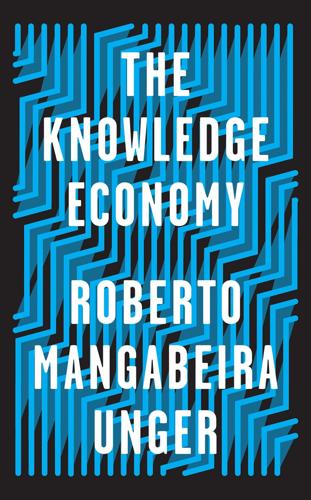
The Knowledge Economy
by
Roberto Mangabeira Unger
Published 19 Mar 2019
In such an economic order, which is every existing or past example of a market economy, there is no institutional equivalent to Henry Ford’s impossible contract: that he would pay his workers so well that they would be able to buy his cars. Disruptive innovation represents in this sense an adaptation of the insurgent, opportunistic, and innovative firm to the lack of an economy-wide solution to the problem that this section addresses: the absence of a growth-promoting solution to the problem of the reciprocal adjustment of supply and demand. Contrary to the established way of thinking, no such solution results spontaneously from the workings of a variant of the present form of the market economy that has been expunged of failures of competition. Reinterpreted along these lines, disruptive innovation is a way for the disruptive firm to profit at the micro level, in its own world, from the absence of the solution to the problem of the lack of upward growth and reciprocal adjustment between supply and demand at the macro level, in the economy as a whole.
…
The firm creates its own demand, given that the economy will not do so for it. It is a micro approach to a macro problem: the disruptive innovators profit, but the deep sources of expansion of the economy on both the supply and the demand sides—the institutional arrangements of the economy, the way in which people are educated, and the organization of the state and of the contest over governmental power—lie beyond their reach and their concerns. We cannot make up for this limitation by simply doing whatever we can to encourage the emergence and development of more such disruptive firms. For one thing, disruptive innovation by the firm is no guarantee of success; most who have attempted it have failed in their competition with nondisruptive businesses, those that remain content to pursue efficiency-enhancing, capital-sparing innovations.
…
Its innovations aim to increase the efficiency and diminish the costs with which established goods and services are produced: they result in a better version of a familiar product, with a higher return on capital. Such innovations are efficiency-enhancing and capital-sparing. They do not revolutionize production; they progress by the accumulation of many small improvements. At a fifth level, the firm practices what Christensen has called disruptive innovation: it combines new technologies and business models to produce a variant of an existing product at a much lower price, thus making it available to a broader mass of consumers, or to produce something new, for which it creates the market, finds the consumers, and arouses their desires. Such innovations are transformative: they create new assets in new ways and help make markets—and even wants—that did not exist before.
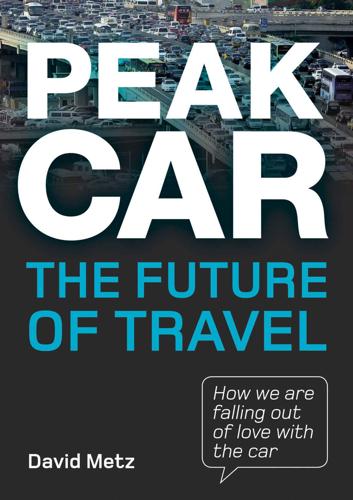
Peak Car: The Future of Travel
by
David Metz
Published 21 Jan 2014
This is good for authors and readers, but for printers, bookshops, libraries and publishers, the e‑book is a ‘disruptive innovation’ that is undermining existing ways of doing business. At present we have examples of digital technologies improving journeys with Satnav and smartcard ticketing, and of allowing travel substitution, as when we work at home with access to the full range of information and contacts that we would have in our workplace. But these are not radical innovations. Are there disruptive innovations on the horizon for the transport sector? Consider the driverless cars that are being developed by some manufacturers as well as by Google.
…
My expectation is that driverless cars, to the extent they penetrate the market, will amount to an incremental improvement, not a disruptive innovation—best regarded as robot chauffeurs. One possible application of this technology would be to taxis, if lower fares increased their attraction to passengers (in which case the innovation would be disruptive to taxi drivers). Driverless trains are already with us—for instance on London’s Docklands Light Railway—safe and practical because access to the system is controlled. Clayton Christensen, originator of the concept of disruptive innovation, argued that the electric car might be such a technology. Possibly the electric car will displace vehicles powered by conventional internal combustion engines.
…
Car manufacturers who do not have access to this technology would lose market share, but the battery manufacturers who might make the technological breakthrough would be keen to supply all users. However, from the viewpoint of drivers and those responsible for the road system, changing the power source is an incremental improvement, not a disruptive innovation (although electric vehicles would be disruptive for the oil industry). The key question for this chapter is whether advances in technology will allow us to travel significantly faster or very differently, whether through innovations that lead to new kinds of vehicle or new digital applications that provide trip information.
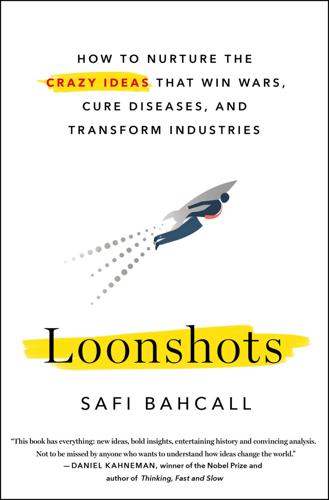
Loonshots: How to Nurture the Crazy Ideas That Win Wars, Cure Diseases, and Transform Industries
by
Safi Bahcall
Published 19 Mar 2019
So what do these stories, and the stories from earlier in the book, tell us? USE “DISRUPTIVE INNOVATION” TO ANALYZE HISTORY; NURTURE LOONSHOTS TO TEST BELIEFS In an article addressing recent controversy about the notion of disruptive innovation, Christensen explains why Uber is not disruptive, by his definition, and why the iPhone also began as a sustaining innovation. In chapter 3, we saw that American Airlines—a large incumbent, not a new entrant—led the airline industry after deregulation with many brilliant “sustaining” innovations targeted to high-end customers. Hundreds of low-cost, specialty airline startups, “disruptive innovators,” failed. If the transistor, Google, the iPhone, Uber, Walmart, IKEA, and American Airlines’ Big Data and other industry-transforming ideas were all initially sustaining innovations, and hundreds of “disruptive innovators” fail, perhaps the distinction between sustaining vs. disruptive, while interesting academically or in hindsight, is less critical for steering businesses in real time than other notions.
…
Disruption This afterword is mostly for business-theory or innovation-theory junkies who may have heard of, or even occasionally make use of, the term disruptive or the term (which causes me even more stomach pain) disruptive innovation. First, to get something out of the way quickly: the two types of loonshots described in chapter 3 are unrelated to what Louis Galambos in 1992 called “adaptive” vs. “formative” innovations, and Clayton Christensen in 1997 called “sustaining” vs. “disruptive” innovations. The two loonshots distinguish between a new strategy (S-type) and a new product or technology (P-type). Galambos and Christensen distinguish between improvements to existing products (sustaining) and technologies that eventually significantly alter some market (disruptive).
…
ONLINE SEARCH To fast-forward a few decades: could Google, when it began, say that it had developed a disruptive innovation? Larry Page and Sergey Brin’s improved algorithm for prioritizing internet search results, PageRank, was incrementally more helpful to users than results from the many other existing search engines. It was a “sustaining” innovation, by the definitions above. WALMART When Sam Walton opened stores in rural areas, far from big cities, was he thinking it might be a strategic, disruptive innovation? “Man, I was all set to become a big-city department store owner,” he wrote about opening his first store.

The Power of Pull: How Small Moves, Smartly Made, Can Set Big Things in Motion
by
John Hagel Iii
and
John Seely Brown
Published 12 Apr 2010
Clayton Christensen and Michael Raynor have painted a very compelling picture of the potential to pursue disruptive innovation strategies.9 These strategies can generate enormous wealth for the innovator but, in general, they are different from the strategies we are discussing on two important dimensions. First, they often involve a single company making significant commitments to a disruptive innovation in technology or business design, rather than an individual or group bringing together very large numbers of companies to make complementary investments. Think of the iconic examples of disruptive innovators such as Nucor or Southwest Airlines. These companies bet big, but they largely bet alone.
…
On one hand, for those who win in pursuing disruptive innovations, the prize is very large because it does not have to be shared with anyone else. On the other hand, there is little opportunity to manage risk by sharing investment across large numbers of players. These shapers often literally bet the company and live or die based on the outcome of the bet. The second key difference in disruptive innovation strategies is that these strategies motivate others to invest and move based on negative incentives. The basic proposition is that, if others do not invest to adopt the disruptive innovations, they will die. Imminent death does focus the mind.
…
In past technology revolutions, a new technology or cluster of technologies emerged in a burst of innovation, experienced rapid performance improvement for a short period of time, and then quickly began to experience a flattening of the performance-improvement curve. This pattern enabled a process of stabilization to follow the initial disruptive innovation. As the performance curve of the technology began to flatten, it provided an opportunity for infrastructure to stabilize once innovators discovered the best way to organize the infrastructure to deliver the distinctive capabilities of the new technology. Similarly, as the infrastructure stabilized, it helped the rest of society to stabilize as well—once it discovered a new set of practices to harness the potential of the new infrastructure.
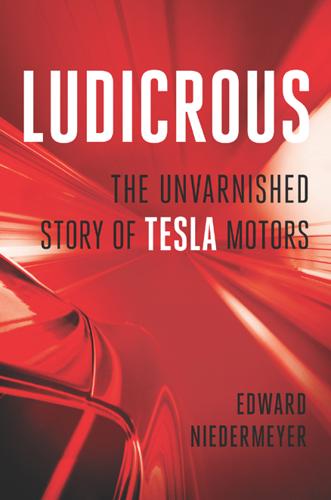
Ludicrous: The Unvarnished Story of Tesla Motors
by
Edward Niedermeyer
Published 14 Sep 2019
This pattern repeats itself so regularly because almost every innovation in the automotive space is what is known as a “sustaining innovation” rather than a “disruptive innovation.” Clayton Christensen, the Harvard Business School professor who coined these terms, defines sustaining innovations as “innovations that make a product or service perform better in ways that customers in the mainstream market already value,” which indeed describes the evolution of the auto industry. “Disruptive innovations,” on the other hand, “create an entirely new market through the introduction of a new kind of product or service,” which are out of step with the values of both established consumer markets and industry leaders.
…
This makes electric drive no more “disruptive” than any of the technologies that have steadily improved the efficiency and emissions of internal combustion vehicles over the last century, most of which have been widely diffused across the industry without leaving a single automaker with a sustainable technological advantage. One of the great ironies of Tesla is that it is so widely seen as being a disruptive innovator when in fact it just barely missed the opportunity to fully capitalize on what is likely to be the first truly disruptive innovation to hit the auto industry in a century: shared autonomous vehicles. By enabling an access model instead of an ownership model, in which privately owned cars are replaced by on-demand access to fleets of self-driving mobility pods, autonomous drive has the clear potential to disrupt both consumption patterns and the fundamentals of the business.
…
Twitter, October 25, 2018. https://twitter.com/TeslaCharts/status/1055420713253982208 Chapter 17 225a projected capacitive touchscreen: Andrew Rassweiler, Mark Boyadjis, and Stephanie Brinley. “Tesla Motors: A case study in disruptive innovation.” IHS Markit, October 7, 2014. https://ihsmarkit.com/research-analysis/q14-tesla-motors-a-case-study-in-disruptive-innovation.html 228a dashboard can reach: Hussain H. Al-Kayiem. “Study on the Thermal Accumulation and Distribution Inside a Parked Car Cabin.” American Journal of Applied Sciences, January 2010. https://www.researchgate.net/publication/46179184_Study_on_the_Thermal_Accumulation_and_Distribution_Inside_a_Parked_Car_Cabin 228even without help from: Cristian Sorin Popescu.
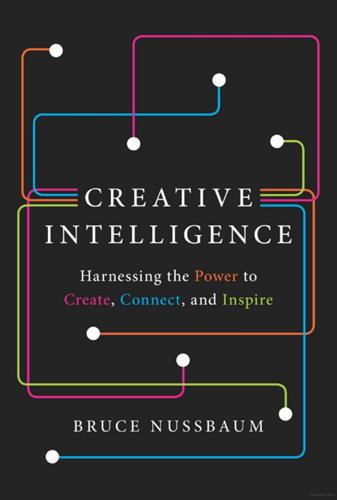
Creative Intelligence: Harnessing the Power to Create, Connect, and Inspire
by
Bruce Nussbaum
Published 5 Mar 2013
Their success had nothing to do with the number of patents or the amount spent on R&D, and so it was impossible to measure these companies using the same metrics of more established organizations. That made it clear that something else was happening, something else was responsible for these big disruptive innovations, something that we hadn’t yet discovered how to quantify. Frustrated, I began asking around, starting with my contacts at a number of consultancies whose job it was to help existing companies become more creative. They were reluctant to talk about it at first, but eventually they began to share the same surprising truth: They had an incredibly low success rate when it came to helping companies usher in the kind of transformative innovation they were seeking.
…
Years after I initially began these conversations, the heads of two top innovation firms would tell me that of the hundreds of projects they worked on each year, only a handful actually worked. After spending most of my career covering innovation, developing tools to help companies and investors measure it, and believing that companies really could become more innovative, I was shocked. And every bit as frustrated. What was this all about? Why were all the hugely disruptive innovations coming out of left field? Why were companies that were spending money and time on all the right things failing to come up with the same kinds of life-altering products and services that some twentysomethings could do with zero budget? How could the millions spent on metrics and measuring by big organizations generate far less innovation than some talented computer programmers and their buddies?
…
But truly creative people don’t stop at the idea; they make the pivot into creation. By moving beyond the creative idea in order to create new products and businesses, Pivoting is a way of reprising creativity’s crucial role in capitalism as a driver of innovation and growth. But how? Most disruptive innovations come from individuals who are leading a cause and who’ve inspired a loyal following to get involved in that community. And yet our investments into innovation don’t always reflect that. Most of our efforts to promote creativity go to older, established corporations, where incremental innovation is, at best, the result.

Think Like an Engineer: Use Systematic Thinking to Solve Everyday Challenges & Unlock the Inherent Values in Them
by
Mushtak Al-Atabi
Published 26 Aug 2014
Taking the smartphone market as an example, there was a time when the iPhone represented the high end of the market with other imitators satisfying the lower end of the market, selling cheaper but with a lower brand and performance offering. Currently the differentiation between various brands is becoming more difficult, and smartphones are almost becoming a commodity. Disruptive Innovation (Source: Innovator’s Dilemma, Clayton Christensen) Clayton Christensen in his book ‘The Innovator’s Dilemma’ presented an interesting theory of what he calls “disruptive innovation.” He explains how a new product, service, or company may drive existing prominent market players out of the market and conquer their market share. This happens by addressing market segments that are below the existing lower end of the market.
…
43 3.2 Emotional Intelligence 45 3.2.1 Self Awareness 46 3.2.2 Self-Management 48 3.2.3 Social Awareness 53 3.2.4 Relationship Management 58 Chapter 4 67 Conceive 4.1 Preparing to Conceive 69 4.2 Ideation: The Art of Idea Generation 71 4.2.1 Brainstorming 71 4.2.2 Random Entry 74 4.2.3 Trimming 77 4.2.4 Blue Ocean Strategy 78 4.2.5 Trend Recognition 82 4.2.6 Biomimicry and Learning from Nature 89 4.3 Concept Evaluation and Selection 89 Chapter 5 93 Design 5.1 Function and Form 93 5.2 Design Process 94 5.2.1 System Architecture 95 5.2.2 Configuration Design 97 5.2.3 Integrated Design 98 5.2.4 Detailed Design 98 5.3 Design Optimisation and Trade Offs 99 5.4 Other Design Considerations 100 Chapter 6 104 Implement 6.1 Hardware Manufacturing Process 104 6.2 Software Implementing Process 105 6.3 Hardware Software Integration 106 6.4 Testing, Verification, Validation, and Certification 106 Chapter 7 110 Operate 7.1 Sustainable and Safe Operations 110 7.2 Operations Management 110 7.3 Training and Operations 111 7.4 The Birth of the Checklist 111 7.5 Preventive Maintenance 115 7.6 System Improvement and Evolution 115 7.7 End of Life Issues 115 7.8 CDIO Case Studies 115 7.8.1 Taylor’s Racing Team 116 7.8.2 Women in Engineering 121 7.8.3 CDIO Beyond Engineering 124 Chapter 8 126 Ergonomics: Human Centred Design 8.1 Design for Ease of Use and Operation 127 8.1.1 Affordance, Visibility and Feedback 128 8.1.2 Constraints 130 8.1.3 Mapping 131 8.2 Anthropometric Measurements 132 8.3 Work Musculo-Skeletal Disorders (WMSDs) 133 8.4 Cognitive Ergonomics 133 8.4.1 Nudges 134 8.4.2 Framing 134 8.4.3 Anchoring 136 Chapter 9 137 Communication and Teamwork 9.1 Communication Strategies 137 9.2 Process Documentation 145 9.2.1 Logbooks 145 9.2.2 Minutes of Meetings 146 9.2.3 Technical Reports 146 9.2.4 Communication via Email 148 9.2.5 Operation Manuals 149 9.3 Teamwork 150 9.3.1 Selecting the Team Members 150 9.3.2 Core Competency 151 9.3.3 Organisation Chart 152 9.3.4 Team Evolution 153 9.3.5 Team Building Exercises 156 9.4 Connections and Networking 156 Chapter 10 159 Managing Projects for Success 10.1 Project Initiating 160 10.2 Project Planning 162 10.2.1 Cost and Resources Estimation 163 10.2.2 Time Estimation 163 10.2.3 Risk Management 168 10.3 Project Executing 169 10.4 Project Monitoring and Controlling 169 10.5 Project Closing 169 10.6 Project Stakeholders Management 170 Chapter 11 173 Entrepreneurship and Innovation 11.1 Philosophy of Entrepreneurship 174 11.2 Business Value 176 11.2.1 Customer Value (Value Proposition) 176 11.2.2 Shareholder Value 177 11.2.3 Employee Value 178 11.2.4 Suppliers and Partners Value 178 11.2.5 Society Value 178 11.3 Business Model (Entrepreneurial Ecosystem) 178 11.3.1 Customer 180 11.3.2 Channels 180 11.3.3 Revenue and Cost 180 11.3.4 Resources 181 11.3.5 Business Activities 181 11.3.6 Partnerships 181 11.3.7 Competitors 182 11.3.8 Business Environment 182 11.4 Business Plan 182 11.5 CDIO for the Market 184 11.5.1 Market Lifecycle of Products and Services 184 11.5.2 Market Evolution and Disruptive Innovation 186 11.5.3 Market Penetration 187 11.5.4 Customers Power in a Digital World 189 11.6 Lean Entrepreneurship 191 11.7 Funding Entrepreneurship 193 Chapter 12 198 Return on Failure 12.1 Learning and Failure 200 12.2 Failing Smart 203 12.3 Failure, Risk and Uncertainty 204 12.4 Education and Encouraging Failure 205 Chapter 13 209 Structured P Solving 13.1 Challenge Identification and Formulation 209 13.2 Root Cause Analysis 210 13.2.1 The 5 Whys 210 13.2.2 The 4 M Method 211 13.2.3 Fishbone Diagram 213 13.3 Estimation and Quantitative Analysis 214 13.4 Final Steps 215 Chapter 14 216 Engineering Holistic Education 14.1 Holistic Education 218 14.2 Learning Beyond the School 220 14.3 Mission Zero: A Vision for Higher Education 224 14.3.1 Zero Tuition Fees 224 14.3.2 Zero Impact on the Job Market 226 14.4 Engineering a Culture Change: Happiness Index 226 Epilogue 228 An Invitation Foreword Whether you are a professional engineer, an aspiring engineer, an enthusiast of engineering or someone interested in ideas, this book has something to offer.
…
Product Adoption Lifecycle (Source: “Crossing the Chasm” by Geoffrey Moore) To cross the chasm, a product needs to impress the innovators enough for them to be excited about it and talk about it to their friends and networks. If the innovators become the ambassadors for a product, they can produce enough momentum, together with the early adopters, to cross the chasm. 11.5.2 Market Evolution and Disruptive Innovation A product starts its life with a certain performance level. As times goes by, often the performance improves. As more providers for similar products come into existence, a market range normally develops with high-end and low-end offerings. With time, the difference between the high-end and the low-end diminishes; that is when the product becomes an undifferentiated commodity.

A More Beautiful Question: The Power of Inquiry to Spark Breakthrough Ideas
by
Warren Berger
Published 4 Mar 2014
In an increasingly technical marketplace, if you could take a product that was expensive, complex, and exclusive and make it affordable and accessible, you could open up a mass market and change the game—toppling the established leaders. But why were only the newcomers seizing this opportunity? Why weren’t the established leaders, with all their know-how and resources, able to dominate the low end of the market as well as the high end? Christensen came to see this as a dilemma: To pursue disruptive innovation at the low end, companies would have to move away from all they had worked so hard to build. As Christensen puts it, they faced this deceptively tricky question: Should we make better products that we can sell for higher profits to our best customers—or make worse products that none of our customers would buy, and that would ruin our margins?
…
As Christensen puts it, they faced this deceptively tricky question: Should we make better products that we can sell for higher profits to our best customers—or make worse products that none of our customers would buy, and that would ruin our margins? If you were a smart business leader, you naturally opted for the former. And in making that seemingly logical choice, you sealed your company’s fate. After Christensen published his theory in the bestselling book The Innovator’s Dilemma, the idea of focusing on “disruptive innovation” at the low end of markets became standard business practice, particularly in Silicon Valley, where Christensen’s book was, for a time, a kind of innovator’s bible. While it’s a testament to Christensen’s keen questioning ability that he was able to find and pursue the Whys and What Ifs that led to his discovery, nevertheless one can’t help wondering: Why didn’t others—particularly the smart people running those companies he studied—see the “innovator’s dilemma” themselves?
…
It showed “questioning” to be one of five key characteristics (and in some ways the most important) associated with being a successful, creative business leader. The results appeared initially in the Harvard Business Review in December 2009 and later in Dyer, Gregersen, and Christensen’s The Innovator’s DNA: Mastering the Five Skills of Disruptive Innovators (Cambridge, MA: Harvard Business Review Press, 2011). 8 The neurologist John Kounios observes . . . From my interview with Kounios, November 2012. 9 “We’ve transitioned into always transitioning” . . . The general principle of constant transitioning was discussed in my interview with Brown, March 4, 2013.

The Content Trap: A Strategist's Guide to Digital Change
by
Bharat Anand
Published 17 Oct 2016
“Movie Rental Business: Blockbuster, Netflix, and Redbox.” HBS No. KEL616. Kellogg School of Management, rev. March 2, 2016. Christensen, Clayton M. Disrupting Class: How Disruptive Innovation Will Change the Way the World Learns. Expanded ed. New York: McGraw-Hill, 2011. ———. The Innovator’s Dilemma: When New Technologies Cause Great Firms to Fail. Boston: Harvard Business Publishing, 1997, 2000. Christensen, Clayton M., Michael E. Raynor, and Rory McDonald. “What Is Disruptive Innovation?” Harvard Business Review, December 2015. Chung, Kevin Y. C., Timothy P. Derdenger, and Kannan Srinivasan. “Economic Value of Celebrity Endorsements: Tiger Woods’ Impact on Sales of Nike Golf Balls.”
…
Christensen, The Innovator’s Dilemma: When New Technologies Cause Great Firms to Fail (Boston: Harvard Business Publishing, 1997, 2000). far outdistanced Christensen’s definition Clayton M. Christensen, Michael E. Raynor, and Rory McDonald, “What Is Disruptive Innovation?,” Harvard Business Review , December 2015. a law of nature See also Joshua Gans, The Disruption Dilemma (Cambridge, MA: MIT Press, 2016); Joshua Gans, “The Other Disruption,” Harvard Business Review, March 2016; Andrew King and Baljir Baatarogtokh, “How Useful Is the Theory of Disruptive Innovation?,” MIT Sloan Management Review, Fall 2015. “I’m so excited to be starting” Layla Siraj, email message to author, June 2014; Siraj kindly agreed to allow me to reproduce her email here.
…
And although these connections bestow success, they are also hard to unravel and change easily. These reasons for organizational failure have been understood for a while. As we proceeded with our efforts, we were acutely aware of them. But, over the past decade, one idea had risen above all others in popular discourse: Clay Christensen’s theory of disruptive innovation, generally regarded as one of the most influential ideas in management during the last decade. Christensen himself had predicted the disruption of K–12 education ten years earlier in his book Disrupting Class . By now, analysts, entrepreneurs, and investors were warning about the impending disruption to higher education as well.

The Future of the Internet: And How to Stop It
by
Jonathan Zittrain
Published 27 May 2009
In it, market leaders tended to be very good at quickly and successfully adopting some technological advancements, yet were entirely left behind by upstarts. To explain the discrepancy, he created a taxonomy of “sustaining” and “disruptive” innovations. When technological innovations are consistent with the performance trajectory of established market leaders—that is, when they are a more efficient way of doing what they already do—alert leaders will be quick to develop and utilize such “sustaining” innovations. It is with disruptive innovations that the market leaders will lag behind. These innovations are not in the path of what the company is already doing well. Indeed, Christensen found that the innovations which market leaders were the worst at exploiting were “technologically straightforward, consisting of off-the-shelf components put together in a product architecture that was often simpler than prior approaches.
…
They offered a different package of attributes valued only in emerging markets remote from, and unimportant to, the mainstream.”25 It is not the case, Christensen argues, that these large companies lack the technological competence to deploy a new technology, but rather that their managements choose to focus on their largest and most profitable customers, resulting in an unwillingness to show “downwardvision and mobility.”26 Subsequent authors have built on this theory, arguing that a failure to innovate disruptively is not simply an issue of management, but the organizational inability of large firms to respond to changes in consumer preferences caused by such disruptive innovations. Established firms are structurally reluctant to investigate whether an innovative product would be marketable to a sector outside what they perceive to be their traditional market.27 They want to ride a wave, and they fail to establish alternatives or plumb new markets even as competitors begin to do so.
…
Echoing Christensen and others, he points out that firms too often think that their own internal marketing and R&D departments know best, and that users cannot easily improve on what they manufacture. Von Hippel then goes further, offering a model that integrates user innovation with manufacturer innovation (Figure 4.3). Von Hippel’s analysis says that users can play a critical role in adapting technologies to entirely new purposes—a source of disruptive innovation. They come up with ideas before there is widespread demand, and they vindicate their ideas sufficiently to get others interested. When interest gets big enough, companies can then step in to smooth out the rough edges and fully commercialize the innovation. Von Hippel has compiled an extensive catalog of user innovation.
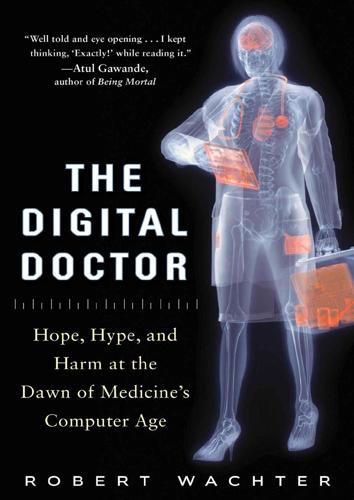
The Digital Doctor: Hope, Hype, and Harm at the Dawn of Medicine’s Computer Age
by
Robert Wachter
Published 7 Apr 2015
It is a must read for everyone—patients, clinicians, technology designers, and policy makers.” —Maureen Bisognano President and CEO, Institute for Healthcare Improvement (IHI) “An engaging, accessible, and terribly important book by one of our finest medical writers. The electronic health record not only is the most disruptive innovation in the history of healthcare, but will also prove to be transformative. In his inimitable mix of conversation, reporting, and insightful analysis, Bob Wachter explains to you why. A must read for healthcare professionals and the public alike.” —Lucian Leape, MD Professor, Harvard School of Public Health and Chair, Lucian Leape Institute of the National Patient Safety Foundation “The Digital Doctor truly defines today’s epoch of technological transformation in healthcare.
…
Patients are now in the loop—many of them get to see their laboratory and pathology results before their physician does; some are even reading their doctor’s notes—yet they remain woefully unprepared to handle their hard-fought empowerment. While someday the computerization of medicine will surely be that long-awaited “disruptive innovation,” today it’s often just plain disruptive: of the doctor-patient relationship, of clinicians’ professional interactions and work flow, and of the way we measure and try to improve things. I’d never heard the term unanticipated consequences in my professional world until a few years ago, and now we use it all the time, since we— yes, even the insiders—are constantly astounded by the speed with which things are changing and the unpredictability of the results.
…
(This movement was fostered by the time zone differences, since these “nighthawk” radiologists could read after-hours films during their local daytimes.) Hundreds of hospitals now use nighthawks, and everybody seems happy about it, including the domestic radiologists, who are sleeping soundly while the overnight images are read half a world away. But one wonders whether this is the start of so-called disruptive innovation, the concept made famous by Harvard’s Clay Christensen. Disruption often begins with a fat and happy incumbent content to preserve its existing enviable position in a market. In industries ranging from commercial aviation to steel manufacturing, an upstart comes in and grabs an unattractive part of the market (in this case, nights and weekends).
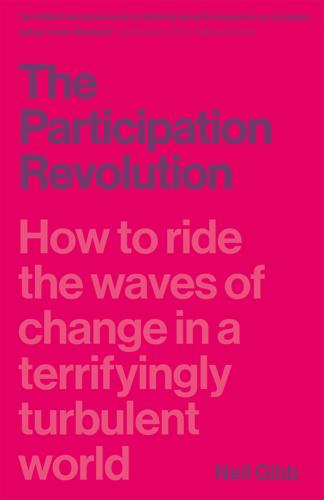
The Participation Revolution: How to Ride the Waves of Change in a Terrifyingly Turbulent World
by
Neil Gibb
Published 15 Feb 2018
It was an extractive process, designed to make the merchants who were trading the coffee rich. In 1995, Clayton Christensen, a professor at the Harvard Business School, introduced the term “disruptive innovation” in his book The Innovator’s Dilemma. As the twin forces of digital technology and globalisation have shaken up and disrupted just about every aspect of our lives in the 21st century, disruptive innovation has become the rallying cry of a generation. Disruption, we are told, is the source of breakthroughs, transformation, and spectacular success. But when I tracked back to the source of innovation of the so-called disruptive companies like GoPro, what I found had nothing to do with disruption.
…
In 1995, Clayton Christensen, a professor at the Harvard Business School, introduced the term “disruptive innovation” in his book The Innovator’s Dilemma. What Christensen was referring to in his book’s title was how, at certain points in history, the emergence of new and radical technologies has totally disrupted established business models and businesses – in some cases, completely sweeping them away. Exactly what happened to Kodak. As the twin forces of digital technology and globalisation have shaken up and disrupted just about every aspect of our lives in the 21st century, disruptive innovation has become the rallying cry of a generation.
…
As the twin forces of digital technology and globalisation have shaken up and disrupted just about every aspect of our lives in the 21st century, disruptive innovation has become the rallying cry of a generation. Everywhere you look, books and articles are trumpeting this new religion; disruption is the means to success, fame, and fortune. Emotive as it is as a concept, though, compelling speakers at conferences to thump the lectern and use big bold fonts, disruptive innovation is not what made Kevin Systrom and Mike Krieger so spectacularly successful with Instagram. In fact, it couldn’t be further from it. The subtitle of Christensen’s book – “When New Technologies Cause Great Firms to Fail” – points to why. What Christensen was shedding light on was not the source of the innovation, but its side effect: why great firms fail, not why these new innovations take off.

Artificial Unintelligence: How Computers Misunderstand the World
by
Meredith Broussard
Published 19 Apr 2018
Brown, “Nearly a Third of Millennials Have Used Venmo to Pay for Drugs.” 13. Newman, “Who’s Buying Drugs, Sex, and Booze on Venmo? This Site Will Tell You.” III Working Together 10 On the Startup Bus Technochauvinists love disruptive innovation. Popularized by Harvard Business School professor Clayton Christensen in his 1997 book The Innovator’s Dilemma, disruptive innovation is allegedly the technological tidal wave that sweeps away the competition and results in huge profits. Innovation—and disruption, come to think of it—is usually connected to young people. Ask an executive who he imagines as the ultimate innovator, and odds are he’ll paint a picture of a twenty-something computer genius in a hoodie who’s writing code to make the next billion-dollar startup.
…
What he means, or perhaps hopes, is that young people can come up with ideas so new, so fresh, so original, that they create an entirely new market: new products to sell, new desire from consumers, a new facet to an existing industry—or a new industry altogether. There’s a reason that the Economist called disruptive innovation “the most influential business idea of recent years.”1 Just think of all the dollars attached. This hypothetical business executive might also say something about the power of collaboration and how getting creative people together in a room with a whiteboard can create disruptive innovation. I wanted to see an innovation process from start to finish to find out how much truth there is to these kinds of assumptions. I had a choice: I could join a team in an office for months, helping a team of hackers and business strategists launch a new app or software product into the world—or I could watch the same cycle occur over the course of five days.
…
Hackathoners chat about tech-company valuations like regular people talk about sports statistics. Instacart was the Startup Bus success story: its founders met through the bus and eventually started a company together. Instacart had grown to the point where it was worth $2 billion, as at least a dozen people told me during the trip. Stories like this keep the disruptive innovation myth alive. By the time the bus arrived at our hotel in Nashville, my team was wrecked: too much junk food, not enough sleep. But our code worked, and we had a presentation written, and we were ready to see what would happen. On the morning of the qualifiers, all the teams piled onto the grimy New York bus to head to the competition location, Studio 615, a warehouse event space in northern Nashville.
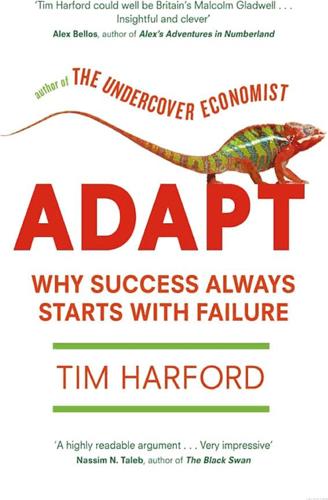
Adapt: Why Success Always Starts With Failure
by
Tim Harford
Published 1 Jun 2011
When the US Army faced the ‘disruptive innovation’ of guerrilla warfare in Vietnam, there was great reluctance to accept that it had changed the nature of the game, making obsolete the Army’s hard-won expertise in industrial warfare. As one senior officer said, ‘I’ll be damned if I permit the United States army, its institutions, its doctrine, and its traditions to be destroyed just to win this lousy war.’ That is exactly how senior executives must feel when their cutting-edge, market-leading business finds itself being disrupted by a foolish-looking new technology. A sufficiently disruptive innovation bypasses almost everybody who matters at a company: the Rolodex full of key customers becomes useless; the old skills are no longer called for; decades of industry experience count for nothing.
…
What is striking is the difficulty Microsoft had with this transition, even though it had bought the leading webmail service, Hotmail, quite early in the game, and even though webmail wasn’t a complicated technology for Microsoft software engineers to master. Yet Hotmail’s features were eclipsed by those of Google’s Gmail. Disruptive innovations are disruptive precisely because the new technology doesn’t appeal to the traditional customers: it is different and for their purposes, it’s inferior. But for a small niche of new customers the new disruptive product is exactly what is needed. They want smaller, cheaper hard drives, or cameras that produce digital files, or email that you can access on any computer – and they are willing to tolerate the fact that the new product is inferior to the old one along all the traditional dimensions.
…
Microsoft bought Hotmail, yes – but it was always going to be hard for Microsoft to pay more attention to Hotmail than to Outlook. Microsoft’s core corporate customers regarded webmail as an irrelevance. Google’s users did not. Google only made web applications, and Gmail was a natural fit. We already know one possible solution for corporations faced with a potentially disruptive innovation: a skunk works, a sort of corporate version of Lübeck, in which the regular culture and priorities and politics of the old corporation do not apply. Lockheed’s Skunk Works got its name (originally ‘skonk works’) because it began life inside a circus tent pitched next to a foul-smelling plastics factory.
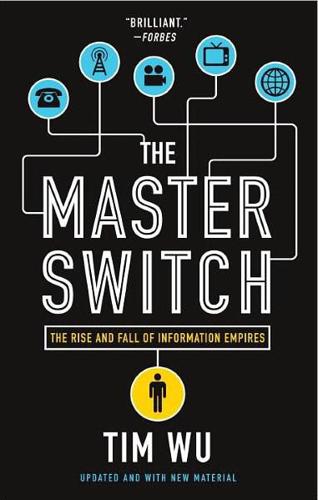
The Master Switch: The Rise and Fall of Information Empires
by
Tim Wu
Published 2 Nov 2010
To understand this point we need grasp the difference between two types of innovation: “sustaining” and “disruptive,” the distinction best described by innovation theorist Clayton Christensen. Sustaining innovations are improvements that make the product better, but do not threaten its market. The disruptive innovation, conversely, threatens to displace a product altogether. It is the difference between the electric typewriter, which improved on the typewriter, and the word processor, which supplanted it.5 Another advantage of the outside inventor is less a matter of the imagination than of his being a disinterested party.
…
In this sense, Bell’s alliance with Hubbard, a sworn enemy of Western Union, the dominant monopolist, was all-important. For it was Hubbard who made Bell’s invention into an effort to unseat Western Union. I am not saying, by any means, that invention is solely the province of loners and that everyone else’s inspiration is suppressed. But this isn’t a book about better mousetraps. The Cycle is powered by disruptive innovations that upend once thriving industries, bankrupt the dominant powers, and change the world. Such innovations are exceedingly rare, but they are what makes the Cycle go. Let’s return to Bell in his Boston laboratory. Doubtless he had some critical assets, including a knowledge of acoustics. His laboratory notebook, which can be read online, suggests a certain diligence.
…
Whatever technological reality we live with is the result of tooth-and-claw industrial combat. And the battles are more decisive than those in which the dominant power attempts to co-opt the technologies that could destroy it, Goliath attempting to seize the slingshot. Western Union, despite its great size and scale, was vulnerable to the same force as every other business: disruptive innovation. No sooner had the firm realized the potential of the Bell company’s technology to overthrow the telegraph monopoly than it went into Kronos mode, attempting to kill or devour Bell. It did not happen instantaneously. At the very beginning, in 1877, the Bell Company probably seemed more a source of comic relief than a threat to Western Union.
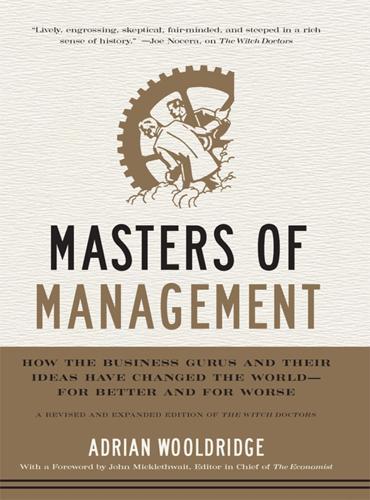
Masters of Management: How the Business Gurus and Their Ideas Have Changed the World—for Better and for Worse
by
Adrian Wooldridge
Published 29 Nov 2011
People who are armed with these facts will put constant pressure on public services to explain and improve. The second idea goes under the very ungentlemanly name of disruptive innovation. Clayton Christensen made his reputation looking at the way disruptive innovators have reconfigured markets and boosted productivity in the private sector. More recently, he has devoted a lot of his energy to the public sector, most provocatively to education. In Disrupting Class: How Disruptive Innovation Will Change the Way the World Learns, he argues that the education system was designed for a world where most students go on to do repetitive jobs and where teachers were confronted by large classes and confined by the technology of “chalk and talk.”6 But the information revolution is about to disrupt this model: the arrival of ever cheaper and ever more powerful computers is making it possible to customize courses for the needs of individual students.
…
These days the third world is known as the emerging markets, the Che Guevara T-shirts are made in China, and the wretched of the earth are enjoying growth rates that are the envy of the former colonial powers. Moreover, these emerging markets are likely to shake things up not only in their own backyards but in rich countries, too. Clayton Christensen has coined the term “disruptive innovation” for new products that slash prices and new processes that radically change the way they are made and delivered. Today, many of the most disruptive innovations hail from emerging markets. They will make a bigger difference to life in the West than lean production, the previous great disruptive management innovation from the East. There are four reasons why things will move faster and further this time.
…
Japan invented lean production and almost destroyed the American car and electronics industries. Now the emerging markets are developing their own distinctive management ideas, and Western companies will increasingly find themselves learning from their rivals. People who used to think of the emerging world as a source of cheap labor must now recognize that it can be a source of disruptive innovation as well. The Charms of Frugal Innovation General Electric’s healthcare laboratory in Bangalore contains some of the company’s most sophisticated products—from giant body scanners that can accommodate the bulkiest American football players to state-of-the-art intensive-care units that can nurse the tiniest premature babies.

Frugal Innovation: How to Do Better With Less
by
Jaideep Prabhu Navi Radjou
Published 15 Feb 2015
To turn sceptical senior managers into sponsors, R&D teams must hone their business-development skills to quantify their invention’s market value and offer a profitable go-to-market strategy. For instance, the R&D teams at companies like Yahoo!, Google and Microsoft have all included microeconomists to help design business models, pricing strategies and alliances for disruptive innovations. And with the rise of emerging economies like India, China and Brazil, R&D solutions should be fine-tuned to meet the unique market conditions and customer needs in different regions. For instance, at PepsiCo, a multinational food and beverage corporation, the R&D team is deeply attuned to the business needs of its different geographical areas, having set up regionally focused R&D centres of excellence in China, Mexico and the US.
…
In the automotive sector, Renault-Nissan is using its Indian operations to learn about frugal engineering and applies the ideas across the firm’s chain of R&D operations including in France and Japan. In food and agribusiness, PepsiCo has located its Global Value Innovation Centre in India with the aim of spreading disruptive innovation around the world. In health care, GE is creating a whole new generation of affordable medical devices in its Indian and Chinese R&D centres for sale not just locally but in western markets too. Furthermore, GE Healthcare has changed its global structure. Previously managed in Europe, the US and Japan, with emerging economies as sub-regions, the firm now has six equal regions that include India and China, each with a CEO who reports to the global GE CEO.
…
When leaders cannot dictate, employees must be able to co-operate to get things done. Of course, the company can help by rewarding co-operation. “Blame is not for failure but for failing to help or ask for help,” notes Knudstorp. Another way to empower staff is to create an unstructured playground where creativity does not violate company rules. (Disruptive innovation, after all, requires people to be disruptive.) Henry Ford, founder of the eponymous motor company, was anything but playful – you would be hard-pressed to find a smiling photo of the man. He was most famous for standardising and automating manufacturing and creating hierarchical structures to achieve economies of scale by mass-producing cars.
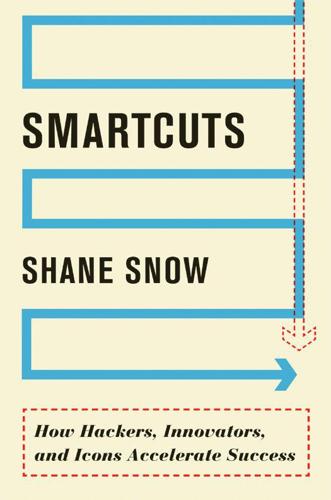
Smartcuts: How Hackers, Innovators, and Icons Accelerate Success
by
Shane Snow
Published 8 Sep 2014
Harvard management professor Clayton M. Christensen furthered this concept in the mid-’90s when he coined the term “disruptive innovation.” Disruptive innovation is when the introduction of a lower-cost product steals market share from existing players, like when e-mail usurped postal mail (how much would you spend a month if every e-mail cost the price of a postage stamp?) or when Craigslist replaced costly classified newspaper ads with free Internet listings. The key feature of disruptively innovative products is cost savings (either time or money). But the key ingredient behind the scenes of every disruptive product is simplification.
…
I’ve found used incubators on eBay and from hospitals ($1,000–4,000), but in limited supply. 158 “We started making a cheaper glass box”: Shrabonti Bagchi, “Saving Little Lives,” Times of India, September 19, 2011, http://epaper.timesofindia.com/Repository/ml.asp?Ref=VE9JQkcvMjAxMS8wOS8xOSNBcjAwNDAw (accessed February 17, 2014). 159 “We realized something was wrong”: Ibid. 161 the Latin innovare: “Innovate,” Merriam-Webster, http://www.merriam-webster.com/dictionary/innovate (accessed February 17, 2014). The classic book about disruptive innovation is, of course, Clayton M. Christensen, The Innovator’s Dilemma (HarperBusiness, 1997). I have drawn heavily from Christensen’s ideas in various parts of this book and in my business career. 162 Tech writer Brian Lam: David Carr’s 2012 profile of Blam will make you want to move to Hawaii, too: “Buffeted by the Web, but Now Riding It,” New York Times, December 16, 2012, http://www.nytimes.com/2012/12/17/business/media/buffeted-by-the-web-but-now-riding-it.html (accessed February 17, 2014). 162 Blam will simply tell you: Brian Lam’s TheWirecutter has since expanded to several writers (to spread the load and ensure enough surf time, naturally).
…
See superconnectors constraints, 164–66 constructionism, 89–90 constructive interference, 106–7 conventional wisdom application to rocket science, 173 breaking patterns to surpass, 4–5 hard work and luck lead to success, 121–22 Cuban Revolution, 123–31, 136–38 Daisy the Dinosaur (programming app), 89 Dan (app founder), 58 Dane, Erik, 108 da Vinci, Leonardo, 234n167 death is not failure, 71–75 decision-making, 80, 84–85, 108–10, 164, 224n108 Dell, Michael, 4 Dell Computers, 204n4 DeNisi, Angelo, 68 Denton, Nick, 162 depression, dealing with issues of, 50–51, 143–47, 229n145 “Design for Extreme Affordability” (Chen), 157, 164–65 destructive interference, 106–7 Devlin, Keith, 91 “DHH.” See Heinemeier Hansson, David DiFuria, Joan, 146–47 Digg (social news website), 136 disruptive innovation, 161 Doohan, James, 174 “Double Rainbow” (video), 141, 156, 229n141, 231n156 Doyle, Sir Arthur Conan, 163 Dr. Seuss (pen name), 15, 77, 94 & n, 139 Dr. Watson (fictional character), 163 dubstep (dance music), 118–22 Duckworth, Angela, 167 “Dunk in the Dark” (Twitter update), 148–50, 151–52, 155–56 Dyson, Freeman, 87–88, 90–91, 219n87 eBay, 4, 5 education American model, 87–88, 166 Finland success model, 86–87, 93–95, 166–67 improving platform, 98–99 leading children to STEM careers, 89–93 teaching lateral thinking, 95 10X thinking, 192–94, 198 Edwards, D’Wayne, 187–94, 198 Einstein, Albert, 93, 95 Eisenhower, Dwight D., 24–25, 29, 208n19 electronic dance music (EDM), 118–22 Elliott, Martin, 41–42, 45 Embrace (infant warmer), 159–61 emo (punk rock music), 102–4 Facebook, 116 failure dying while going down fighting is not, 71–75 getting feedback from, 66–71, 183–84 learning from lessons of, 57–61 patterns leading to, 61–65 practicing with fear of, 66–67 See also success Fallon, Jimmy, 33–37, 48–50, 141, 210n33, 214n49 Fast Company (magazine), 8 fast followers, 116–17 feedback achieving growth through, 70–71 exemplifying the process, 196 experimenting with the process, 72–75 learning from failure, 55–65 Internet speed and power, 53–55 turning failure into, 183–84 value of critique and interventions, 66–71 “Yes, and” vs.
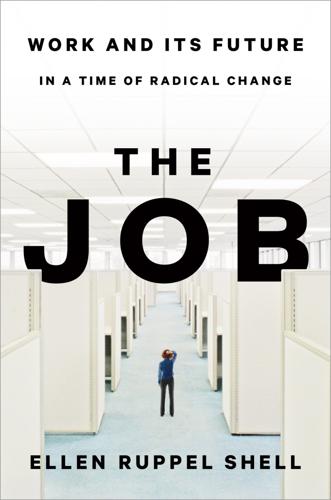
The Job: The Future of Work in the Modern Era
by
Ellen Ruppel Shell
Published 22 Oct 2018
This adjustment clearly correlates with top brass making more money (at this writing, Gabe Newell has a reported net worth of $5.5 billion), but its success at spawning innovation is less clear. “Flat hierarchies are supposed to result in disruptive innovation,” Ellsworth said. “But what happened at Valve wasn’t innovative. It was just disruptive.” The concept of “disruptive innovation,” popularized by Harvard Business School economist Clayton Christensen in his 1997 best seller The Innovator’s Dilemma, is all but de rigeur in business circles, particularly in the tech industry. Yet while it’s common for employers to encourage staff to be “disruptive,” what they actually mean by this is uncertain, even, one suspects, to the employers themselves.
…
This adjustment clearly correlates Adam Goldstein, “Revenge of the Managers: Labor Cost-Cutting and the Paradoxical Resurgence of Managerialism in the Shareholder Value Era, 1984 to 2001,” American Sociological Review 77, no. 2 (2012): 268–94, http://dx.doi.org/doi:10.1177/0003122412440093. The concept of “disruptive innovation” See, for example, the cartoon strip Dilbert, in which the dog Dogbert, working as a consultant, advises a client, “To survive, you must create disruptive innovations to redefine the market.” Scott Adams, Dilbert, February 16, 2004, http://dilbert.com/strip/2004-02-16. “an accusation rather than an irreplaceable” Rosalind H. Williams, The Triumph of Human Empire: Verne, Morris, and Stevenson at the End of the World (Chicago: University of Chicago Press, 2013), 193–94.
…
As we’ve seen, this “Do now, think later” strategy is not exclusive to IT, but has become pervasive even in fields like journalism and medicine, where increasingly workers are judged not by the depth of their thinking and the weight of their judgment, but by their productivity, as measured by “content” in the case of journalists, and by “caseload” in the case of medical professionals. Many of these “knowledge workers” are left to wonder what real value they offer beyond corralling customers in service to their employers. Some organizations try to maximize productivity and encourage “disruptive” innovation by gathering workers in teams. But among the Finnish group’s most striking conclusions is that our faith in the power of teamwork may be misplaced. Indeed, studies stretching back decades reveal that brainstorming rarely leads to novel solutions, and in fact can discourage innovative thinking.

The Only Game in Town: Central Banks, Instability, and Avoiding the Next Collapse
by
Mohamed A. El-Erian
Published 26 Jan 2016
We are living through an exciting transformational period, which, by encouraging a shift from narrow product orientations to more holistic solution mindsets, places an increasing premium on companies’ and governments’ ability to respond anytime and anywhere, and to do so in a manner that meets individuals’ expectations for more frequent and broader engagement. So far, quite a bit of the impact of such disruptive innovations has been limited to the spectacular emergence of certain new companies, the deployment of existing assets, and the disruption of specific sectors. But, as we will see in detail shortly, it is just a matter of time before the impact goes macro, fueling the transformation of the broader economic landscape.
…
This discomfort relates to the growing difficulties that both national economies and the global system face (and will face) in reconciling in a relatively stable manner five trends that I believe will become more pronounced in the period ahead—namely: • Multi-speed growth; • Multi-track central banking policies; • Growing pricing anomalies, from negative nominal interest rates to the unusual position of having “the U.S. yield curve…now shaped as much by foreign monetary policy as the Fed’s”;2 • Non-economic headwinds; and • The impact of certain disruptive innovations going macro. Together they suggest that, as opposed to the consensus view of a relatively stable low-growth world, we are looking at increasing economic and policy divergences among countries, which, together with prospects for national political and geopolitical disruptions, will make the belly of the distribution a lot less stable.
…
But should these influences wane, as they are bound to in the future, markets will have to play rapid catch-up with quite an uncertain and worrisome geopolitical configuration. It is not one that is easy to price in a linear and orderly fashion. CHAPTER 27 A WORLD OF GREATER DIVERGENCE (IV) DISRUPTIVE INNOVATION GOES MACRO “This gap between the potential of an innovation and its widespread adoption is one of those lessons that we learn and then we tend to forget, or we don’t learn it because of inattention to history and its lessons about human and organizational behavior.” —MICHAEL SPENCE We are in the midst of two massive technological transformations—one in the energy sector occasioned by shale, and the other due to a digital revolution that encompasses the innovations in Internet technologies, mobility, applications, and digitalization.
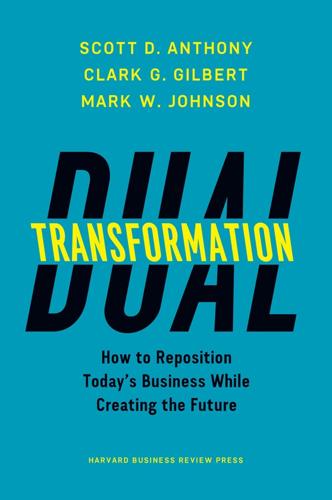
Dual Transformation: How to Reposition Today's Business While Creating the Future
by
Scott D. Anthony
and
Mark W. Johnson
Published 27 Mar 2017
The Focus Component Chapter 6 describes how leaders need the clarity to focus on the highest-potential opportunity areas. One of the paradoxes of dual transformation is that leaders need to become less focused as they go about developing winning strategies in those areas. After all, history shows us that sustainable strategies for disruptive innovations emerge from a process of trial-and-error experimentation. The Failure Component A strange idea that has blossomed over the past few years is that failure is generally good. Not so—failure is bad. Who wants to have something not work out? Many types of failure are bad and should be avoided.
…
“Come on, guys! Time to go home.” Preparing for the Crises of Dual Transformation By following the guidance described in this book, you should have a robust strategy and a compelling story for what you’re doing and why you’re doing it. The theories on which the guidance is built, particularly the disruptive innovation theory, helps make compelling predictions in the absence of complete data. You also should have underlying metrics that serve as early proof points of success. For Gilbert, that was the growth of his new businesses. Even though they were small, highlighting double-digit growth rates helped reaffirm that the media organization collectively was moving in the right direction.
…
Walgreens: Innosight, “A Roadmap for the Future Helps the Pharmacy Giant Widen its Health Care Mission,” http://www.innosight.com/impact-stories/walgreens-case-study.cfm. Sources of nonconsumption: Scott D. Anthony, Mark W. Johnson, Joseph V. Sinfield, and Elizabeth J. Altman, The Innovator’s Guide to Growth: Putting Disruptive Innovation to Work (Boston: Harvard Business School Press, 2008). Xerox’s transformation B strategy: Clark Gilbert, Matthew Eyring, and Richard N. Foster, “Two Routes to Resilience,” Harvard Business Review, December 2012. ChoiceMed example: Scott D. Anthony, The First Mile: A Launch Manual for Getting Great Ideas Into the Market (Boston: Harvard Business Review Press, 2014).
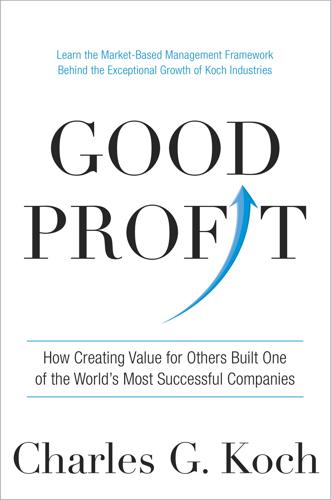
Good Profit: How Creating Value for Others Built One of the World's Most Successful Companies
by
Charles de Ganahl Koch
Published 14 Sep 2015
And it’s why we have developed MBM, with an aim to become a new type of organization that is the counterparty of choice for every customer, vendor, employee, and community. MBM teaches that we must continually drive constructive change in every aspect of our company or we will fail. As a result, we constantly pursue disruptive innovations and opportunities through internal and external development as well as acquisition. Similarly, we shed businesses and assets that are unprofitable or worth more to others. We believe we must drive creative destruction faster than our competitors; otherwise it will drive us out of business.
…
All organizations can do this by developing a vision based on understanding their capabilities, and being committed to rapidly improving their ability to create value for their customers. This requires a culture of creative destruction. Molex, for example, has products with a life span as short as two to three years. Disruptive innovation is a company’s lifeblood to which significant human and financial resources must be dedicated. Intel cofounder Gordon Moore correctly determined that the performance of semi-conductors would double about every eighteen months. This is creative destruction at its most terrifying extreme and it is responsible for the 90 percent failure rate of technology start-ups.
…
By bringing together engineering, physical sciences, and life sciences, the Koch Institute is poised to make significant breakthroughs in overcoming the terrible blight of cancer. Whether the goal is to cure cancer, build a smaller and faster smartphone, or develop a more efficient and environmentally friendly way of making nylon, disruptive innovation requires creating, acquiring, sharing, and applying knowledge. The methods used to do so are what we at Koch call knowledge processes. They include mechanisms to inform us immediately about developments everywhere in the world, and measures that give us feedback on how to improve our vision and mark our progress based on the best information and discoveries.

Intertwingled: Information Changes Everything
by
Peter Morville
Published 14 May 2014
Do we need any more evidence that a Lyft is not a taxi? Meanwhile, taxis aren’t standing still. They’re adopting e-hail apps that enable passengers to book regular taxis with their mobile device. In short, from lawsuits to competition, Uber has plenty of problems. This is to be expected. Disruptive innovation inevitably provokes a response. Or, in the words of John Gall, “the system always kicks back.” In Systemantics, a witty, irreverent book published in 1975, Gall uses the example of garbage collection to explain that when we create a system to accomplish a goal, a new entity comes into being: the system itself.
…
These include questions of collective bargaining with the garbage collectors’ union, rates and hours, collection on very cold or rainy days, purchase and maintenance of garbage trucks, millage and bond issues, voter apathy, regulations regarding the separation of garbage from trash…if the collectors bargain for more restrictive definitions of garbage, refusing to pick up twigs, trash, old lamps, and even leaving behind properly wrapped garbage if it is not placed within a regulation can, so that taxpayers resort to clandestine dumping along the highway, this exemplifies the Principle of Le Chatelier: the system tends to oppose its own proper function.vii This is why we need disruptive innovation within our society. Systems that have grown unresponsive must be shaken up. But, like garbage, change is messy. Disruptors such as Uber provoke counterattacks, and they build new systems that create new problems. All of this change results in unintended consequences that are hard to predict or control.
…
But it’s also an ugly status symbol, a driving distraction, and an environmental nightmare. Fitbit, Jawbone, and Pebble are fascinating fitness tracking devices, but do we even know whether they’re making us more healthy or less? I’m not sure how to manage this trickster, but I do know we must shift from self-justification to self-awareness to move ahead. The secular myth of disruptive innovation isn’t new, but it is effective. We’re so busy searching for dinosaurs, we forget to look where we’re going. In 2004 when Bruce Sterling first spoke of spime – speculative objects precisely located in space and time – the vision he painted was bright green. Transfigured from passive consumers into heroic wranglers, we would mash products, sensors, RFID, and GPS into sustainable spime to reduce, reuse, and recycle like never before.

The Future Is Faster Than You Think: How Converging Technologies Are Transforming Business, Industries, and Our Lives
by
Peter H. Diamandis
and
Steven Kotler
Published 28 Jan 2020
In other words, these waves are starting to overlap, stacking atop one another, producing tsunami-sized behemoths that threaten to wash away most everything in their path. When a new innovation creates a new market and washes away an existing one, we use the term “disruptive innovation” to describe it. When silicon chips replaced vacuum tubes at the beginning of the digital age, this was a disruptive innovation. Yet, as exponential technologies converge, their potential for disruption increases in scale. Solitary exponentials disrupt products, services, and markets—like when Netflix ate Blockbuster for lunch—while convergent exponentials wash away products, services, and markets, as well as the structures that support them.
…
“We’ve come to accept extreme congestion as part of our lives,” said Holden.1 “In the U.S., we have the honor of being home to ten of the world’s twenty-five most congested cities, costing us approximately $300 billion in lost income and productivity. Uber’s mission is to solve urban mobility.… Our goal is to introduce an entirely new form of transportation to the world, namely urban aviation, or what I prefer to call ‘aerial ridesharing.’ ” Aerial ridesharing might sound like sci-fi cliché, but Holden had a solid track record of disruptive innovation. In the late 1990s, he followed Jeff Bezos from New York to Seattle to become one of the earliest employees at Amazon. There, he was put in charge of implementing the then zany idea of free two-day shipping for a flat annual membership fee. It was an innovation that many thought would bankrupt the company.
…
Converging Technology Moore’s Law: See: https://www.intel.com/content/www/us/en/silicon-innovations/moores-law-technology.html. as a human brain: Ray Kurzweil, How to Create a Mind (Viking, 2012), pp. 179–198. “Law of Accelerating Returns”: Ray Kurzweil, “The Law of Accelerating Returns,” March 7, 2001. See: https://www.kurzweilai.net/the-law-of-accelerating-returns. we use the term “disruptive innovation”: Clayton Christensen, The Innovator’s Dilemma (HarperBusiness, 2000), pp. 15–19. Enter distributed electric propulsion, or DEP for short: Mark Moore, “Distributed Electric Propulsion Aircraft,” Nasa Langley Research Center. See: https://aero.larc.nasa.gov/files/2012/11/Distributed-Electric-Propulsion-Aircraft.pdf.
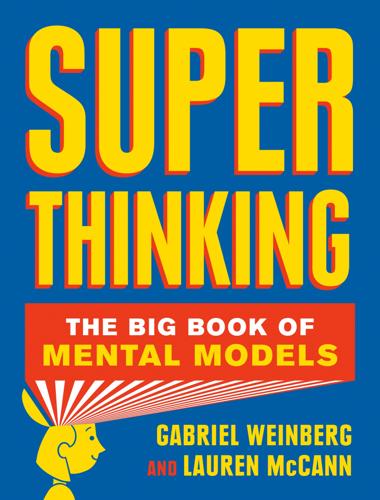
Super Thinking: The Big Book of Mental Models
by
Gabriel Weinberg
and
Lauren McCann
Published 17 Jun 2019
Smartphone, 2002-2016 In Clayton Christensen’s seminal work The Innovator’s Dilemma, he lays out the framework for how such disruptive innovations ripple through industries, ushering new industry entrants into power while leaving dead incumbents in their wake. The incumbent’s dilemma is whether to embrace the disruptive technology, usually at the great cost of the existing business. That’s what Intel did but Kodak didn’t do. If Kodak had more readily embraced digital camera technology, it would have directly cannibalized its outsized profits in analog film technology. Similarly, many companies are right now facing difficult decisions about whether to embrace new disruptive innovations like artificial intelligence, solar power, streaming video, driverless vehicles, and electric cars.
…
If you see disruption on the horizon in your field, you ought to prepare to respond sooner rather than later. Maybe that means investing in a new set of skills; maybe it means switching responsibilities; maybe it means pivoting to another field altogether. Unfortunately, truly embracing a disruptive innovation usually means major upheaval to the company or person itself: major losses of revenue in the short term, retraining from the ground up—a major pivot. There have been many instances where pivots have been advisable at the height of market dominance or earning potential. Unfortunately, market dominance can correspond with complacency.
…
If you can’t find any bright spots in what you’re doing after some time, critically evaluate your position and consider a pivot. Build a moat around yourself and your organization to create sustainable competitive advantage. Don’t get complacent; remember only the paranoid survive, and keep on the lookout for disruptive innovations, particularly those with a high probability of crossing the chasm. Conclusion AS WE SAID IN THE INTRODUCTION, this is the book we wish someone had given us when we were starting out in our careers. That’s because mental models unlock the ability to think at higher levels. We hope that you’ve enjoyed reading about them, and that our book has helped you in your super thinking journey.
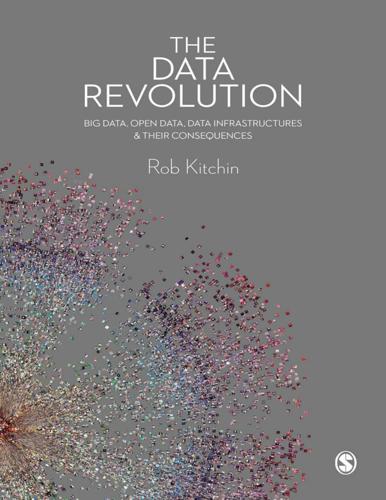
The Data Revolution: Big Data, Open Data, Data Infrastructures and Their Consequences
by
Rob Kitchin
Published 25 Aug 2014
Given their relative paucity, good-quality data were a valuable commodity, either jealously guarded or expensively traded. Recently, this state of affairs has started to change quite radically. Data have lost none of their value, but in other respects their production and nature is being transformed through a set of what Christensen (1997) terms disruptive innovations that challenge the status quo as to how data are produced, managed, analysed, stored and utilised. Rather than being scarce and limited in access, the production of data is increasingly becoming a deluge; a wide, deep torrent of timely, varied, resolute and relational data that are relatively low in cost and, outside of business, increasingly open and accessible.
…
Given the drive to digitise and scale traditional small data into digital infrastructures that are voluminous and varied (such as national archives, censuses and collections of cultural and social heritage; see Chapter 2) it is velocity and these additional characteristics that set big data apart and make them a disruptive innovation (Christensen’s 1997) one that radically changes the nature of data and what can be done with them (see Table 2.1). For example, a national household survey has large volume, strong resolution and relationality, but lacks velocity (once a year), variety (usually c.30 structured questions), exhaustivity (a sample of perhaps one in twenty households), and flexibility (the fields are fixed, typically across surveys, to enable time-seried analysis).
…
Conclusion There is little doubt that the data revolution offers the possibility to reframe the epistemology of science, social science and humanities, and such a reframing is already actively taking place. Big data and the scaling of small data into data infrastructures enable the implementation of new approaches to data generation and analyses that make it possible to ask and answer questions in new ways. This has led some to make bold claims that the data revolution is a disruptive innovation that is ushering in a paradigm shift in how research is conducted. It is certainly the case that the shift from a data desert to a data deluge and new data analytics will transform research praxis. However, care needs to be taken in making assertions about the reframing of research and about the best path forward in such a reframing.
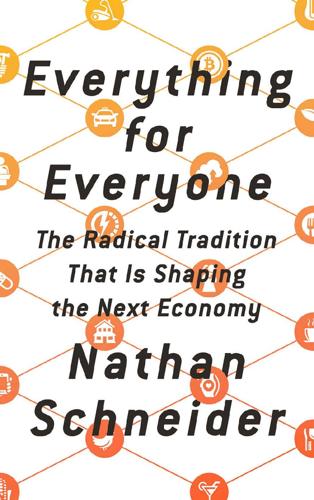
Everything for Everyone: The Radical Tradition That Is Shaping the Next Economy
by
Nathan Schneider
Published 10 Sep 2018
There, Jimmy Boggs saw disruption decades ago, when a brew of robots, racism, and imports from Asia shut down the city’s factories, and when what remained of the auto industry fled to the whiter suburbs—consigning that capital of black America into decline and collapse. The jargon of disruption derives from a more precise academic concept. Harvard Business School professor Clayton Christensen began honing what he came to call “disruptive innovation” in the mid-1990s and early 2000s, referring to how a simple development, often from an oblique end of a market, can refashion the rules of the market in which it operates.5 In this way, the cheaper, less-mighty cars from Japan took on Detroit’s Cadillacs. It’s how Kodak invented the first digital camera in the 1970s but, by clinging to film, collapsed into bankruptcy by the hand of its own invention.
…
Globalized markets let capital flow freely but stop the desperate migrants at the borders. The liberal-democratic consensus that some expected to spread everywhere has buckled as voters around the world elect autocrats. We’ve also been living through a disruption of networks. For Silicon Valley, the internet has created the favorite case in point of disruptive innovation. It wasn’t walking, talking, sci-fi robots that took the place of travel agents or Borders Books, it was apps—new points of connection that replaced incumbent intermediaries. These connections replace physical assets and “human resources” with creative arrangements of users and their data.
…
Christensen, “Disruptive Technologies: Catching the Wave,” Harvard Business Review (January–February 1995); Clayton M. Christensen, The Innovator’s Solution: Creating and Sustaining Successful Growth (Harvard Business Press, 2003). Between the former and the latter, he adjusted the term from “disruptive technology” to “disruptive innovation.” 6. James Manyika et al., Jobs Lost, Jobs Gained: Workforce Transitions in a Time of Automation (McKinsey Global Institute, 2017). 7. See Thomas I. Palley, Financialization: The Economics of Finance Capital Domination (Palgrave Macmillan, 2013). 8. Johnston Birchall, Resilience in a Downturn: The Power of Financial Cooperatives (International Labour Organization, 2013); Clifford Rosenthal, Credit Unions, Community Development Finance, and the Great Recession (Federal Reserve Bank of San Francisco, 2012). 9.

The End of Nice: How to Be Human in a World Run by Robots (Kindle Single)
by
Richard Newton
Published 11 Apr 2015
The program is run by a company called TechStars which is one of the three big names in “start-up accelerators” alongside Y-Combinator and 500 Start-Ups. Accelerators are entrepreneurial bootcamps which provide embryonic companies with a workspace, business expertise and access to money, press, partners, know-how and a giant corps d’esprit. After a typical three-month program, the start-up companies are released into the commercial world to disrupt, innovate and clean up! Or fail. In fact the name of the game is fail fast. It’s the antithesis of big business thinking. In the world of tech start-ups the approach is to test your best business idea as fast as possible to see how it fails in order to better know what might work, then fix it, improve it, then test again.
…
There’s a similarity here with the limitations of traditional business school thinking that Clayton Christensen has warned about in his book The Innovator’s Dilemma. If we rely solely on past data to inform our future direction, then we will be like the giant enterprises who didn’t realise that at the fringes of their world disruptive innovators were planning to revolutionise and consume their markets. As Larry Page said: “Lots of companies don’t succeed over time. What do they fundamentally do wrong? They usually miss the future.” As the unknown is deliberately managed away from us, then we become more predictable, less alert and thus more vulnerable to surprises.
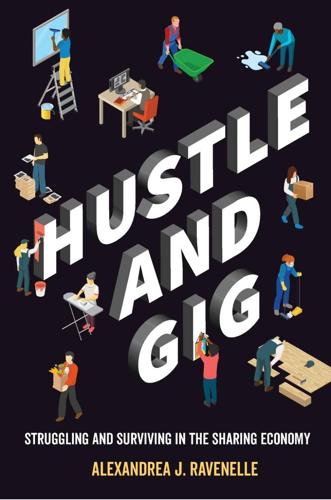
Hustle and Gig: Struggling and Surviving in the Sharing Economy
by
Alexandrea J. Ravenelle
Published 12 Mar 2019
In this view—and it is not insignificant—the idea of hacking comes from a position of arrogance.”99 Likewise, Silicon Valley’s favorite phrase, “let’s break shit,” is part of Schumpeter’s “creative destruction,” a theory of economic progress in which new business rises like a phoenix from the ashes of old business.100 Creative destruction has also been described as an early version of Clayton Christensen’s hypothesis of “disruptive innovation,” in which economies flourish when start-ups replace established firms.101 And of course, to disrupt the status quo of established industries is part of the goal of the sharing economy. When the term sharing economy first entered the public lexicon, the sharing economy itself looked like a step forward.
…
Under the guise of trust, workers undergo background checks, online reviews, and continual monitoring in an online panopticon of worker evaluation, even as they find themselves working for unknown individuals, outside standard workplace protections, and exposed to considerable risks. Another way to think of Christensen’s “disruptive innovation” is “the selling of a cheaper, poorer-quality product that . . . eventually takes over and devours an entire industry.”105 As sharing economy services have grown and proliferated, they’ve successfully subverted generations of financial gains and workplace protections. Workers have been returned to an early industrial age in which protections were nonexistent, their risks were great, and they were under the control of corporations and the elite.
…
Workers have been returned to an early industrial age in which protections were nonexistent, their risks were great, and they were under the control of corporations and the elite. As Jill Lepore puts it, innovation is “the idea of progress stripped of the aspirations of the Enlightenment, scrubbed clean of the horrors of the twentieth century, and relieved of its critics. Disruptive innovation goes further, holding out the hope of salvation against the very damnation it describes: disrupt, and you will be saved.”106 The sharing economy offers workers a way to “save themselves” through extra work, but the growth of the sharing economy may only continue to subvert workers’ rights and protections.
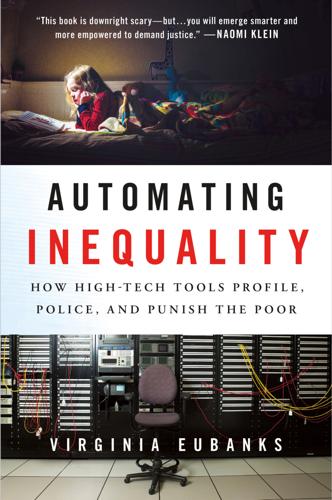
Automating Inequality
by
Virginia Eubanks
In my most pessimistic moments, I fear that we are winning the fight against mass incarceration at just the historical moment when the digital poorhouse makes the physical institution of the prison less necessary. Corporations already anticipate the immense cost savings of building a digital prison state without walls. A 2012 Deloitte Touche Tohmatsu report titled Public Sector, Disrupted, for example, sees “transforming criminal justice with electronic monitoring” as an “opportunity for disruptive innovation” in government services. A graphic brings their point home. On the left side is a stick figure behind prison bars. In the middle, there is an equal sign. On the right, there are five and a half stick figures wearing electronic ankle bracelets. The violence of the digital poorhouse is less direct than police brutality, its operation harder to see.
…
Conclusion: Dismantling the Digital Poorhouse Published Literature Alexander, Karl L., Doris R. Entwisle, and Linda Steffel Olson. The Long Shadow: Family Background, Disadvantaged Urban Youth, and the Transition to Adulthood. American Sociological Association, Rose Series in Sociology. New York: Russell Sage Foundation, 2014. Deloitte Touche. Public Sector, Disrupted: How Disruptive Innovation Can Help Government Achieve More for Less. 2012. https://www2.deloitte.com/content/dam/Deloitte/global/Documents/Public-Sector/dttl-ps-publicsectordisrupted-08082013.pdf. [Accessed Aug. 1, 2017.] Edin, Kathryn J., and H. Luke Shaefer. $2.00 a Day: Living on Almost Nothing in America. Boston: Houghton Mifflin Harcourt, 2015.
…
See automated decision making; predictive risk models digital poorhouse and class and criminalization and discrimination dismantling the and diversion from public resources effects of and equity eternality of and “fear of falling” as hard to understand intractability of National Welfare Rights Organization (NWRO) novel aspects of origins of and politics and prediction of future behavior scalability of and self-interest and values discretion of caseworkers in decision-making discrimination and child welfare and cultural denial and digital poorhouse and public assistance rational and reverse redlining and welfare reform disinvestment in neighborhoods in social service programs disproportionality in child welfare decisions disruptive innovation Dogon, General Dreyer, David driverless cars drug and alcohol abuse Drug and Alcohol Services drug and alcohol treatment drug testing Du Bois, W.E.B. due process Dunham, Calvin B. EBT. See electronic benefits transfer economic depression of 1819 of 1873 economic violence Edin, Kathryn J.

The End of Power: From Boardrooms to Battlefields and Churches to States, Why Being in Charge Isn’t What It Used to Be
by
Moises Naim
Published 5 Mar 2013
It is what capitalism consists in and what every capitalist concern has got to live in.”42 The shifts in power that we see all around us—which include and transcend the ascent and demise of business enterprises—are certainly consistent with Schumpeter’s expectations. They are also in line with the insights of Clayton Christensen, a Harvard Business School professor who coined the term disruptive innovation, meaning a change—in technology, service, or product—that creates a new market by relying on a completely new approach. The effects of a disruptive innovation eventually spill over to other related or similar markets and undermine them. The iPad is a good example. Using your cellphone to pay for groceries or to send money to your daughter in another continent are two other good examples.
…
Electoral campaigns now rely on more sophisticated methods of persuasion—and, of course, more people than ever are governed by a leader they have elected and not by a dictator. While welcome, these changes pale in comparison with the extraordinary transformations in communications, medicine, business, and war. In short, disruptive innovation has not arrived in politics, government, and political participation. But it will. We are on the verge of a revolutionary wave of positive political and institutional innovations. As this book has shown, power is changing in so many arenas that it will be impossible to avoid important transformations in the way humanity organizes itself to make the decisions it needs to survive and progress.
…
regional trends in democracy, 249–250(figs.), 251 waves of democratization, 83, 248 Democratic Party, 76, 95, 203 Demographics, 4, 54, 66, 69, 74 Denmark, 92, 149, 151 DeParle, Jason, 59 Depression period, 45, 55, 136 Derivatives, 160, 184 Desai, Raj, 210, 211 Deutsche Börse, 188 Developing countries, 7, 10, 55, 56, 57, 61, 63, 129, 146, 167, 172, 183, 185, 187, 254 Dhar, Sujoy, 70 Diamond, Larry, 85, 102–103 Diamond industry, 165 Dictators, 1, 5, 29, 53, 75, 78, 82, 83, 220, 247. See also Authoritarianism Dimon, Jamie, 161–162 di Pietro, Antonio, 98, 99 Diplomacy, 153–155 economic, 144–147, 149 Direct Edge, 188 Disease, 10, 73, 140, 210, 226 Disney, 179, 212 Disruptive Innovation, 71, 243 District of Columbia, 88 Divorce, 65, 66 DIY Drones group, 119 Dobbs, Richard, 61 Dolan, Kerry A., 181 Domhoff, G. William, 48 Dominica, 155 Doris Duke Foundation, 210 Dorset, 181 DoubleClick, 174–175 Dow Jones, 174, 212 Drones, 112, 118–119, 121 Drugs, 73, 110, 122, 125–126, 222 Dupont, 165 Durkheim, Émile, 231 East Timor, 81 Economic/financial crises, 15, 18, 57, 68, 91, 102, 132, 160, 164, 176, 183, 184, 218, 224, 228, 238.
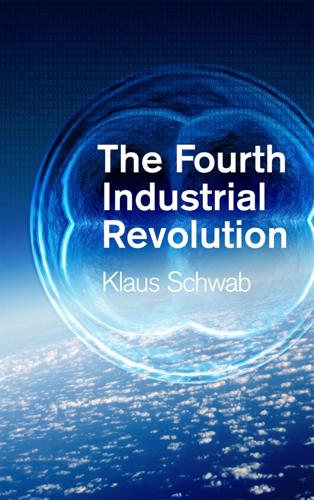
The Fourth Industrial Revolution
by
Klaus Schwab
Published 11 Jan 2016
World Economic Forum Agenda, Aug 9 https://agenda.weforum.org/2015/08/5-brain-technologies-future/ Fernandez A (2015). 10 neurotechnologies about to transform brain enhancement and brain health. SharpBrains, USA, Nov 10 http://sharpbrains.com/blog/2015/11/10/10-neurotechnologies-about-to-transform-brain-enhancement-and-brain-health/ Notes 1 The terms “disruption” and “disruptive innovation” have been much discussed in business and management strategy circles, most recently in Clayton M. Christensen, Michael E. Raynor, and Rory McDonald, What is Disruptive Innovation?, Harvard Business Review, December 2015. While respecting the concerns of Professor Christensen and his colleagues about definitions, I have employed the broader meanings in this book. 2 Erik Brynjolfsson and Andrew McAfee, The Second Machine Age: Work, Progress, and Prosperity in a Time of Brilliant Technologies, W.W.
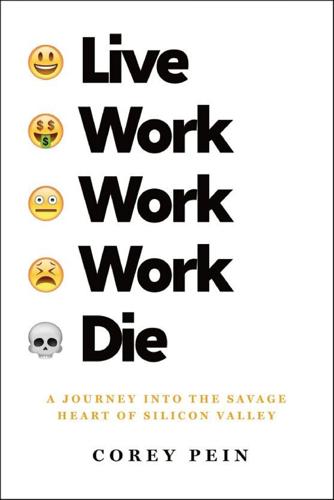
Live Work Work Work Die: A Journey Into the Savage Heart of Silicon Valley
by
Corey Pein
Published 23 Apr 2018
Today more people than ever are becoming billionaires—two thousand and counting have made the great leap upward, according to the “global wealth team” at Forbes. Virtually no aspect of the geopolitical arena, the natural environment, or the human experience escapes their influence. And America’s hottest billionaire factory happens to be located in the most hyped yet least understood swath of suburban sprawl in the world: Silicon Valley. Seat of disruptive innovation and home to the heroes of high tech, the Valley calls out like an alluring siren to ambitious, skilled, and forward-thinking people from all over. Its singular approach to wealth creation—let’s call it “the Silicon Valley way”—was endorsed by former president Barack Obama himself. In a State of the Union address, he pledged to support “every risk-taker and entrepreneur who aspires to become the next Steve Jobs.”
…
Unfortunately, subsequent discussions made clear that I had been haggling over the price of Magdalena for one night, not the price of her spare room for one month. * * * Lacking the financial stability required to secure a lease, much less a mortgage, my best hope upon leaving Hacker Condo was to find another “hacker house.” These were the products of disruptive innovation in urban real estate. The city was once riddled with small apartments and single-family homes that sheltered trifling handfuls of obsolete laborers and their unproductive children, often for decades at a stretch. But the tech boom let such so-called family homes reach their full potential as investment properties.
…
A “disruptive” company had the potential to take over an entire industry, as medieval scriptoria were disrupted by movable type, the infantry charge by the machine gun, knowledge by Google, and so on. The spurious notion that there was some discernible Law of Business Administration to be found within such miscellaneous instances of human behavioral change dated to 1997, when a Harvard Business School professor published his theory of “disruptive innovation.” Another Harvardite, Mark Zuckerberg, enshrined disruption as the operating principle of Facebook, commanding employees to “move fast and break things.” Later techie manifestos boiled the scholarly pretense down to its vulgar essence: “Break shit.” I needed to look like someone who was ready to break shit.

Stealing Fire: How Silicon Valley, the Navy SEALs, and Maverick Scientists Are Revolutionizing the Way We Live and Work
by
Steven Kotler
and
Jamie Wheal
Published 21 Feb 2017
At first, when breakthroughs happen, only those people willing to tolerate the risk and uncertainty of a novel technology get on board, a trade they’ll make for the benefits of being “early adopters.” Then there’s a gap, what Moore called “the chasm,” that any idea has to cross to attract a growing audience. It’s attracting that “early majority” on the far side of the chasm that he feels is the true mark of disruptive innovation. Up until now, we’ve focused primarily on the pioneers and early adopters—those most visibly driving the evolution of the four forces. Here we want to take a moment to catalog signs of broader applications, focusing on the places where the chasm has been crossed and a critical early majority are starting to incorporate state-changing tools and techniques into their everyday lives.
…
This ability to continually update and advance our own understanding, ahead of anyone else’s attempts to constrain or repurpose them may be the key to breaking the stalemate. Wu agrees. “The Cycle is powered by disruptive innovations49 that . . . bankrupt the dominant powers, and change the world. Such innovations are exceedingly rare, but they are what make the Cycle go.” An open-source approach to non-ordinary states makes Wu’s “disruptive innovations” a little less rare, and the ability to share and distribute them less susceptible to co-optation. And while the four forces don’t guarantee a bloodless revolution, they do ensure that more people get to decide for themselves. And that’s the ultimate paradox of these states: all that liberation comes with an unavoidable dose of responsibility.
…
“all the advantages of Christianity and alcohol; none of their defects”: Aldous Huxley, Brave New World (London: Chatto & Windus, 1932), p. 54. 47. “In Brave New World, they are controlled by inflicting”: Neil Postman, Amusing Ourselves to Death (New York: Penguin, 2005), p. viii. 48. all power that derives from the control of information: Tim Wu, The Master Switch (New York: Knopf, 2010), p. 310. 49. The Cycle is powered by disruptive innovations: Ibid., p. 20. Chapter Ten: Hedonic Engineering 1. Sasha Shulgin used to say:” Dirty Pictures. 2. First identified back in the 1930s, Jerusalem Syndrome: Yair Bar-El et al., “Jerusalem Syndrome,” British Journal of Psychiatry 176 (2000): 86–90. 3. It’s why Burning Man advises people: This essay is one the more frequently reposted and entertaining articles on “decompression” or coming back to regular life after the event, by “The Colonel” of Arctic Monkey Camp: “Do Not Divorce Your Parakeet Yet,” New York Burners Guide, original date and publishing location unknown.
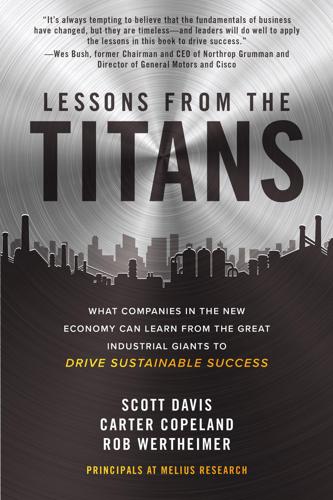
Lessons from the Titans: What Companies in the New Economy Can Learn from the Great Industrial Giants to Drive Sustainable Success
by
Scott Davis
,
Carter Copeland
and
Rob Wertheimer
Published 13 Jul 2020
Venture capital (VC) funding for industrial markets, under a billion dollars 10 years ago, exceeded $40 billion in 2018. Total R&D spent by all public industrial companies is now around $90 billion, so in a few short years VC investment has reached close to half that level. (See Figure 10.7.) Most of this influx of funding aims at disruptive innovations, while most standard R&D is incremental. Accordingly, the tech world is now outspending the industrial world on real disruption by a wide margin and with greater efficiency. Figure 10.7: VC funding has become much more important to the future of industrials. Source: Pitchbook That sort of shift creates the sense of urgency that Loree was experiencing in 2014 and 2015.
…
That option is a big deal on construction jobsites, as removing extension cords or noisy air compressors has clear benefits for productivity, safety, and quality of the work environment. Fueled by this initial success, which saw FlexVolt sales rising 10 times as fast as prior innovations, the company formalized disruptive innovation as part of its update and expansion of SFS. It set up several teams outside its core offices, near universities and other innovation hubs. One such breakthrough innovation center developed deep relationships with a German automaker. The automaker had an engineering challenge that wasn’t directly related to SBD’s product or expertise, but the teams knew each other, and the automaker knew of the new focus on outside-the-box thinking.
…
There is a huge opportunity to go electric in this space, at an even faster pace than with cars. The two-stroke engines of many lawn care products are inherently dirty, emitting pollution far out of proportion to their fuel use, because emissions equipment is too expensive on small engines. In 10 years, much of the lawn and garden tool products may be electric. Disruptive innovation teams are already working on the opportunity. POSTMORTEM Stanley Black & Decker took the flywheel of margin improvement and capital redeployment and added in a technology layer. The acquisition of the Craftsman brand exemplifies the synergistic opportunities that have been unlocked with SBD’s transformation.
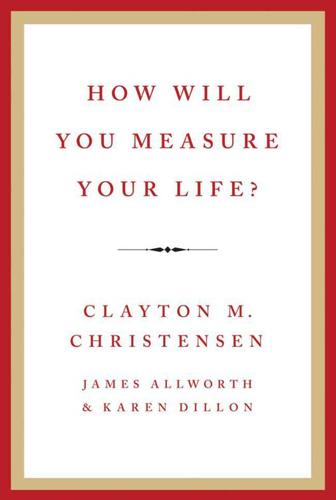
How Will You Measure Your Life?
by
Christensen, Clayton M.
,
Dillon, Karen
and
Allworth, James
Published 15 May 2012
But I can offer you tools that I’ll call theories in this book, which will help you make good choices, appropriate to the circumstances of your life. I learned about the power of this approach in 1997, before I published my first book, The Innovator’s Dilemma I got a call from Andy Grove, then the chairman of Intel. He had heard of one of my early academic papers about disruptive innovation, and asked me to come to Santa Clara to explain my research and tell him and his top team what it implied for Intel. A young professor, I excitedly flew to Silicon Valley and showed up at the appointed time, only to have Andy say, “Look, stuff has happened. We have only ten minutes for you.
…
Fast-paced careers, family responsibilities, and tangible rewards of success tend to swallow up time and perspective. They will just sail off from their time at school without a rudder and get buffeted in the very rough seas of life. In the long run, clarity about purpose will trump knowledge of activity-based costing, balanced scorecards, core competence, disruptive innovation, the four Ps, the five forces, and other key business theories we teach at Harvard. What’s true for them is true for you, too. If you take the time to figure out your purpose in life, I promise that you will look back on it as the most important thing you will have ever learned. I HAVE WRITTEN this book with my wonderful and capable coauthors to help you to be successful and happy in your career.

The End of Indexing: Six Structural Mega-Trends That Threaten Passive Investing
by
Niels Jensen
Published 25 Mar 2018
An early example of disruption would be digital camera innovators disrupting Eastman Kodak’s traditional camera business. That said, disrupters are not always successful. It is a misconception that entrants are disruptive by virtue of their success. Success is not built into the definition of disruption. Looking ahead, disruption can only intensify, and automation is only a subset of disruptive innovations coming our way. Yes, driverless cars are not that many years away, and robots will soon be able to do what humans have done for centuries; however, there is much more to disruption than advanced robotics. For example, think Amazon and think about the extensive damage it has done to retail businesses all over the world.
…
Gollin, Douglas (2002) Getting Income Shares Right, Journal of Political Economy. Vol.110, No.2 pp.458–474. Haldane, Andrew (2015) Drag and Drop, speech given by A. Haldane, Chief Economist of Bank of England at the BizClub in Rutland, March 2015. Harvard Business Review (2015) What Is Disruptive Innovation? Clayton M. Christensen, Michael E. Raynor and Rory McDonald. Haver Analytics, Bureau of Labor Statistics, Morgan Stanley Wealth Management Investment Resources (2017) Demographic Destiny: Are Millennials Spending Differently Than Baby Boomers? ©2017 Morgan Stanley Smith Barney LLC. IMF (2016) Regional Economic Outlook, Middle East and Central Asia Department.

Blockchain Chicken Farm: And Other Stories of Tech in China's Countryside
by
Xiaowei Wang
Published 12 Oct 2020
But in the 2000s, R&D shifted, spilling out into the private realm—highlighted by the success of early internet startups with private investment in China, such as Sohu and Baidu. At the same time, the economic success of Town and Village Enterprises showed how new institutional structures could catalyze innovation. And for many companies in China at the time, innovation wasn’t about creating entirely new products—“disruptive innovation”—but also about the ways existing processes could be optimized and streamlined, a form of “continuous innovation.” By the 2000s, foreign companies had entered China. These companies still dominate the majority of certain sectors in China, despite purportedly extensive intellectual property theft.
…
“I have American apps that I open once a month and eventually delete. But there are Chinese apps that I open multiple times a day. You’re so dependent on apps for daily life. There’s a saying about ‘China speed’—that tech in China is moving so fast that America can barely keep up.” For this analyst, these apps, their convenience, indicate that disruptive innovation is happening in China. A friend of mine, a VC who spends ample time traveling between the United States and China, remarks that the Silicon Valley hubris is real. He tells me that most of the time, you hear people say they’re starting the new Silicon Valley of somewhere, and it never happens, it fails.

System Error: Where Big Tech Went Wrong and How We Can Reboot
by
Rob Reich
,
Mehran Sahami
and
Jeremy M. Weinstein
Published 6 Sep 2021
Part I Decoding the Technologists In an age of advanced technology, inefficiency is the sin against the Holy Ghost. —Aldous Huxley, foreword to Brave New World, 1946 Chapter 1 The Imperfections of the Optimization Mindset Contrary to current popular opinion, for most of its storied existence the United States Postal Service has been a hub of disruptive innovation. In 1792, Benjamin Rush, a signer of the Declaration of Independence, ushered the Postal Service Act into law, giving the federal government control over various regional postal routes and declaring that the content of mail was private, even if delivered by a public carrier. It also provided for a novel cost structure: rather than charging on the basis of weight, the postal service would charge one rate for letters and another much less expensive rate for newspapers.
…
Over the past several decades, the drive toward efficiency and optimization has come to play an increasingly dominant role across spheres and industries, from business (e.g., streamlining supply chains) to sports (e.g., Moneyball-style tactics using big-data analytics to drive decisions) and even to our personal lives (e.g., online dating apps and fitness trackers). It’s no coincidence that the industry and skill set most ascendant over the same time period has been computer science. In the digital age, the disruptive innovators tend to be the efficiency-obsessed tribe of people called coders, or software engineers. They are the ones who invent and bring to market the host of new technologies that are driving efficiency gains across so many aspects of life. Should We Optimize Everything? Efficiency is not always the good thing it seems to be.
…
Computer hardware, processing power, big data, algorithms, artificial intelligence (AI), and network power are the most important currencies of our age. The quants and financial engineers have invaded the big banks, and it is the venture capitalists of Palo Alto, not fund managers on Wall Street, who finance disruptive innovation. Yet the worldview of the technologist is sometimes poorly understood by those outside the tech industry. Unlike economists in the twentieth century, engineers are generally not entering politics as advisers and decision makers. They tend instead to bypass politics altogether. In all the discussion of the political and societal problems brought about by new technology, what has been missing is an understanding of the small and anomalous group of human beings who create that technology and are constantly tweaking it, tuning it, optimizing it in response to their notions of how it ought to be better.

New Laws of Robotics: Defending Human Expertise in the Age of AI
by
Frank Pasquale
Published 14 May 2020
The bargain at the core of professionalism is to empower workers to have some say in the organization of production, while imposing duties upon them to advance the common good.10 By advancing research, whether in divisions of universities or in their own offices, professionals cultivate distributed expertise, alleviating classic tensions between technocracy and popular rule. We should not be dismantling or disabling professions, as all too many advocates of disruptive innovation aspire to do. Rather, humane automation will require the strengthening of existing communities of expertise and the creation of new ones. A good definition of professions is capacious, and it should include many unionized workers, particularly when they protect those they serve from unwise or dangerous technologies.
…
Other social science and humanities scholars have vital insights, advancing deep and nuanced accounts of the role of money in society, among many other dimensions of commerce. A renewed political economy of automation must be built upon these plural foundations, unafraid of enacting the substantive value judgments encoded in the new laws of robotics. FROM MORE AI TO BETTER AI Theorists of disruptive innovation have proposed to “cure” the cost disease by standardizing, automating, and even robotizing service-intensive sectors like health care, finance, and education. From massive open online courses to robotic companions for the elderly, these innovations aim to displace workers (or at least work) with mechanical imitations of human labor.
…
Christensen, Clayton Christensen, Curtis W. Johnson, and Michael B. Horn, Disrupting Class (New York: McGraw-Hill, 2008) and Clayton M. Christensen, Jerome Grossman, and Jason Hwang, The Innovator’s Prescription: A Disruptive Solution for Health Care (New York: McGraw-Hill, 2009), which examines disruptive innovations in health care. 79. Kenneth Scheve and David Stasavage, Taxing the Rich: A History of Fiscal Fairness in the United States and Europe (Princeton: Princeton University Press, 2016. 80. Alondra Nelson, “Society after Pandemic,” Items: Insights from the Social Sciences, April 23, 2020, at https://items.ssrc.org/covid-19-and-the-social-sciences/society-after-pandemic/.
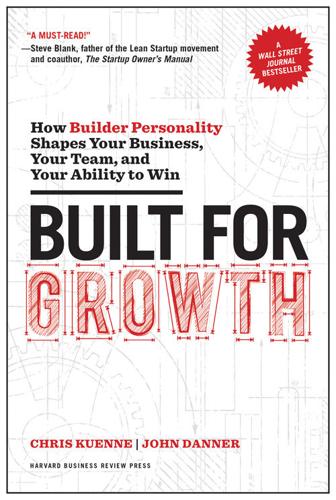
Built for Growth: How Builder Personality Shapes Your Business, Your Team, and Your Ability to Win
by
Chris Kuenne
and
John Danner
Published 5 Jun 2017
Captains are arguably the most fully developed leaders in terms of direct, honest, and consistent communication among the individuals and teams they manage. But their more consensus-based approach can lead to a form of incrementalism that may miss the necessity or opportunity for more dramatic, disruptive innovation in their markets. Which Builder Personality Is Most Similar to Yours? While the descriptions you read on the preceding pages are the simplest way to identify which Builder Personality Type you are most like, here we will show you a bit more about how our typing process works. The instrument appearing on the next page represents a simplified version of our Builder Personality Discovery™ (BPD) quiz.
…
At the same time, your predilection to allow context and consensus to frame the solution may come at the expense of genuine commercial breakthroughs. Your approach can result in more incremental solutions to more immediate problems. It is less likely to lead to a Steve Jobs–like or Henry Ford–caliber truly disruptive innovation. Other Builder Personality Types probably have a better shot at those kinds of leaps. The Team Dynamic: Galvanizing Individual Talent for Collaborative Impact If you’re a Captain, you are as much a team assembler as you are a catalyst. You are intent on creating a company culture around values and mutual accountability.
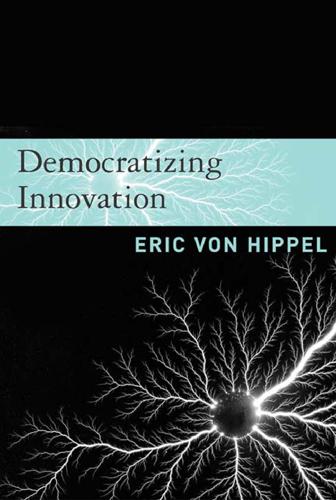
Democratizing innovation
by
Eric von Hippel
Published 1 Apr 2005
How do we square these findings with the arguments, put forth by Christensen (1997), by Slater and Narver (1998), and by others, that firms are likely to miss radical or disruptive innovations if they pay close attention to requests from their customers? Christensen (1997, p. 59, n. 21) writes: “The research of Eric von Hippel, frequently cited as evidence of the value of listening to customers, indicates that customers originate a large majority of new product ideas. . . . The [Christensen] value network framework would predict that the innovations toward which the customers in von Hippel’s study led their suppliers would have been sustaining innovations. We would expect disruptive innovations to have come from other sources.” Unfortunately, the above contains a basic misunderstanding of my research findings.
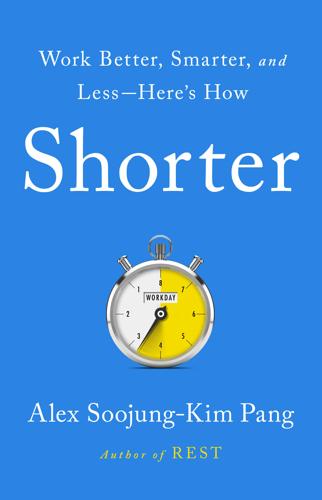
Shorter: Work Better, Smarter, and Less Here's How
by
Alex Soojung-Kim Pang
Published 10 Mar 2020
The percentage of workers employed in temporary work, gig-economy jobs, or zero-hours contracts has grown dramatically in the US, with other advanced economies following. Executives learned they could boost profits by shredding workforces, tapping global manufacturing and transportation networks, or using “disruptive innovation” to drive established companies out of business. The rise of Silicon Valley in the 1980s brought with it a new model of work and success that glamorized long hours, made workaholics into heroes, and turned overwork into a badge of honor. As a result, we now live in a fast-moving, unstable world in which overwork is a source of riches for some and a necessity for survival for the rest.
…
After ten years in advertising and “a lot of late nights, a lot of overnighters in some cases,” Michael Honey realized when he founded digital interactive agency Icelab that he “wanted to work a relaxed forty hours, rather than a frenetic fifty hours.” Interestingly, they don’t come from places like the University of Pennsylvania (where I studied) or Stanford University (where I taught)—the kinds of institutions that congratulate themselves on educating the world’s disruptive innovators and business visionaries. In Korea, where many corporate executives are drawn from elite universities like Seoul National and KAIST (Korea Advanced Institute of Science and Technology), Bong-Jin Kim studied graphic design. Yusaku Maezawa, Zozo’s colorful founder and CEO, dropped out of Waseda University.

Shadow Work: The Unpaid, Unseen Jobs That Fill Your Day
by
Craig Lambert
Published 30 Apr 2015
The product will probably not be as good as what a professional would produce, but it is good enough for many customers, and far less expensive. The shadow-working consumer simply customizes the template for her needs and goes ahead with it—planting the garden or going live with the new website. Such templates are examples of “disruptive innovation,” a term Harvard Business School professor Clayton Christensen coined in his landmark 1992 book The Innovator’s Dilemma. Disruptive innovation happens when a new company introduces a product that is cheaper, simpler, and/or faster than those on the market. Toyota and Honda, for example, disrupted Detroit’s Big Three automakers by bringing out cheaper, smaller, no-frills cars like the Corolla and Civic.

Reinventing Capitalism in the Age of Big Data
by
Viktor Mayer-Schönberger
and
Thomas Ramge
Published 27 Feb 2018
The banks’ bet is: if you get disrupted, you should at least own some of the players that take away your business. In 2015 alone, these fintechs attracted investments exceeding $19 billion worldwide. Some pundits have described the frantic activity as a fintech bubble. Although a number of fintechs focus on payment solutions, many of them focus squarely on offering disruptive innovation in two areas we’ll examine briefly: lending and investment planning. For decades, money lending has progressed from a matter of personal trust—think of a community bank manager deciding whether somebody gets a mortgage or not—to a decision driven by a single statistic: an individual’s credit score.
…
But more important than taking sides in this debate is understanding the significance of the UBI movement as well as its limitations. Perhaps it doesn’t come as a surprise that high-tech innovators are looking for creative ways to respond to the social challenges posed by data-driven markets and the reconfiguration of our economy. Ingrained thinking is something not even Silicon Valley can escape: if you believe in disruptive innovation, it may become your standard response to any problem. But it may not be all that innovative an idea. If data enables us to go beyond money, why does the social innovation designed to solve the problems caused by data-driven markets emphasize money? Why are we reintroducing, through a UBI, a simple, fixed monetary solution in situations that quite obviously require an assessment of needs beyond money?
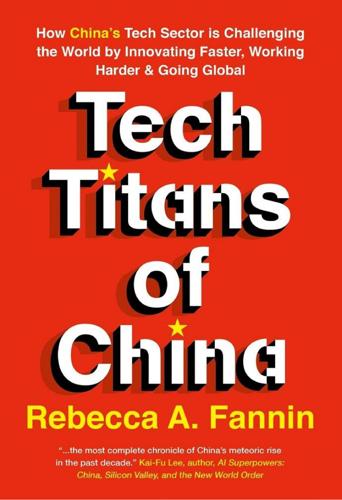
Tech Titans of China: How China's Tech Sector Is Challenging the World by Innovating Faster, Working Harder, and Going Global
by
Rebecca Fannin
Published 2 Sep 2019
—Jerry Haar and Ricardo Ernst, professors respectively at Florida International University and Georgetown, and co-authors of Innovation in Emerging Markets “Tech Titans of China gives us a very clear and concrete China innovation 101, and lays out how China tech giants are creating their own technology universe.” —Edith Yeung, Creator of China Internet Report, Partner at Proof of Capital and 500 Startups “If you care about the future of innovation, then this is an absolute must read book.” —Mike Grandinetti, Faculty Chairman: Rutgers “Leading Disruptive Innovation” Executive Program; Faculty Member: MIT Enterprise Forum Startup Founders Program; Global Professor: Entrepreneurship, Innovation & Marketing, Hult International Business School “Whatever the debate may be about Chinese government policies, no one should believe that China’s private companies aren’t innovative.
…
Leapfrogging to Copied from China In less than two decades, China tech innovation has evolved and gone through three phases of development: from copy to China, to invented in China, and now today, the biggest trend to watch is copied from China, meaning US companies duplicate Chinese innovations. China’s first-generation internet entrepreneurs unabashedly created copies of successful American startups Yahoo!, Amazon, Facebook, Google, and eBay. Intellectual property protections were scant. Now Chinese technocrats are breaking boundaries with their own disruptive innovations, taking them overseas and getting copied by Westerners. Chinese internet companies are no longer dismissed as mere copycats of Google, Facebook, YouTube, and Amazon—as they were when my Silicon Dragon book first was published in 2008. Now, made-in-China business models built for a mobile-first generation are advanced and widely used.

The Patient Will See You Now: The Future of Medicine Is in Your Hands
by
Eric Topol
Published 6 Jan 2015
DiSanzo, “Op/Ed: Hospital of the Future Will Be a Health Delivery Network,” US News & World Report, January 14, 2014, http://health.usnews.com/health-news/hospital-of-tomorrow/articles/2014/01/14/oped-hospital-of-the-future-will-be-a-health-delivery-network. 3. J. Comstock, “Revisiting How Christensen’s ‘Disruption Innovation’ in Healthcare Means Decentralization,” MobiHealthNews, March 26, 2014, http://mobihealthnews.com/31470/revisiting-how-christensens-disruption-innovation-in-healthcare-means-decentralization/. 4. E. Topol et al., “A Randomized Controlled Trial of Hospital Discharge Three Days After Myocardial Infarction in the Era of Reperfusion,” New England Journal of Medicine 318 (1988): 1083–1088. 5.
…
Levingston, “Practice Fusion Wants to Be Free,” Bloomberg Businessweek, February 6, 2014, http://www.businessweek.com/articles/2014-02-06/practice-fusions-medical-records-technology-is-free-for-doctors. 66. D. Hernandez, “How Medical Tech Promises to Save Lives,” USA Today, June 14, 2014, http://www.usatoday.com/story/news/nation/2014/06/14/medical-technology-va-healthcare-emr/10369071/. Chapter 8 1. U. E. Reinhardt, “The Disruptive Innovation of Price Transparency in Health Care,” Journal of the American Medical Association 310, no. 18 (2013): 1927–1928. 2. T. Rosenberg, “The Cure for the $1,000 Toothbrush,” New York Times, August 13, 2013, http://opinionator.blogs.nytimes.com/2013/08/13/the-cure-for-the-1000-toothbrush/. 3. S.

When McKinsey Comes to Town: The Hidden Influence of the World's Most Powerful Consulting Firm
by
Walt Bogdanich
and
Michael Forsythe
Published 3 Oct 2022
GO TO NOTE REFERENCE IN TEXT “Those who maintain that we”: Jacky Davis, John Lister, and David Wrigley, NHS for Sale: Myths, Lies, and Deception (London: Merlin Press, 2015), loc. 916, Kindle. GO TO NOTE REFERENCE IN TEXT The conference, put on by the right-wing think tank: Account drawn from conference program, “A Lot More for a Lot Less: Disruptive Innovation in Healthcare,” Reform conference sponsored by McKinsey. Henke and the McKinsey consultant Tom Kibasi wrote a brief article for the program titled “Disruptive Innovation.” GO TO NOTE REFERENCE IN TEXT “The wise and virtuous man”: Dominic Barton, “Capitalism for the Long Term,” Harvard Business Review, March 2011. GO TO NOTE REFERENCE IN TEXT It came as no surprise: Daniel Boffey, “NHS Reforms: American Consultancy McKinsey in Conflict of Interest Row,” Guardian, Nov. 5, 2011.
…
As if to drive home that point, on June 8, 2011, McKinsey was the corporate sponsor for a conference at the Royal College of Nursing, which had turned its stunning Georgian mansion on Cavendish Square into a venue available for corporate events. The conference, put on by the right-wing think tank Reform, was titled “A Lot More for a Lot Less: Disruptive Innovation in Healthcare.” “Disruptive” meant a wider berth for private companies. The group argued that “for-profit companies and not-for-profit organizations are delivering healthcare successfully around the world and doing so at greater value and with equal, if not better, quality.” The McKinsey senior partner Nicolaus Henke, the firm’s representative on the prime minister’s kitchen cabinet on health, took part in the one-day conference, joined by two other McKinsey consultants.
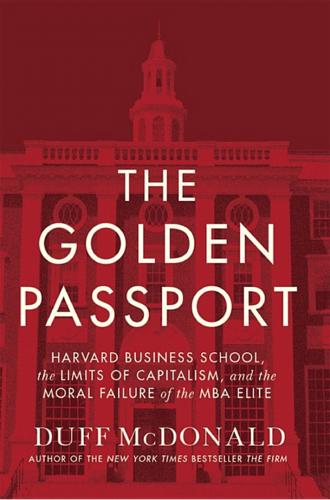
The Golden Passport: Harvard Business School, the Limits of Capitalism, and the Moral Failure of the MBA Elite
by
Duff McDonald
Published 24 Apr 2017
McGill’s Henry Mintzberg, asked for his two cents, also suggested that Christensen was seeing things that just weren’t there. “I think Clay is a fabulous guy, but he makes one fundamental error, which is that he couldn’t have predicted any of these disruptive innovations any more than anybody else,” said Mintzberg. “[So] for him to say that this is going to be a disruptive innovation, I think, is questionable.”8 As far as Nohria is concerned, the fact that five years before the launch of CORe he declared that HBS would never deign to launch something like HBX—that the HBS experience was too much about being at HBS itself to even consider an online alternative—shows that the dean is capable of changing his position on a matter of great significance to the School.
…
They get better. What do we do? Nothing.”12 Michael Porter represents the best and worst of HBS all at once. First and foremost, he broke new ground in the field of strategy. With the possible exception of his colleague Clayton Christensen, who can be credited with popularizing the concept of “disruptive innovation,” Porter’s work represents the high-water mark of intellectual influence at HBS, at least in terms of having some influence over the language that decision makers use as they go about their business. That his signature insight was as simple as the inversion of an already extant field of economic analysis doesn’t take away from the fact that he has achieved an astounding level of influence, both for himself and for HBS.
…
Porter created a template for all future HBS professors to aspire to, the one-man conglomerate around whom a consulting business, speaking engagements, and bestselling books revolve. The man who has come closest to replicating the Porter business model is Clayton Christensen, with his theory of disruptive innovation. He’s Porter’s Mini-Me. (To dedicate a chapter to Christensen would be duplicative. It’s the same story, with different names and different pseudotheories.) Indeed, Porter set the model that almost all business schools now aspire to, the cultivation of star professors, of branded ideas, and of ancillary revenue streams in publishing and elsewhere—Wharton’s Jeremy Siegel and Stanford’s Jeffrey Pfeffer being two obvious examples of such.
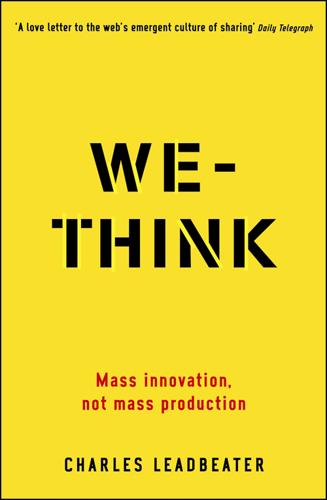
We-Think: Mass Innovation, Not Mass Production
by
Charles Leadbeater
Published 9 Dec 2010
Almost a decade after clunkers first hit mountain tracks, the commercial bike manufacturers finally followed suit. By 2004, in the US mountain bikes and related equipment accounted for 65 per cent of all bike sales. A category that had been invented by passionate users was worth $58 billion dollars. The biggest disruptive innovation in modern biking history came from consumer innovators. Something similar has happened in other extreme sports, such as windsurfing and snowboarding. One study suggests that in active sports about 57 per cent of significant innovations have come from consumers. Where technology has many possible applications, the users rather than the producers often work out what it is really for.
…
Where technology has many possible applications, the users rather than the producers often work out what it is really for. Mobile-phone companies failed to predict that SMS messaging would become one of the main forms of communication among teenagers. Only when the technology fell into the hands of users did the full range of its application begin to emerge. Consumer innovators are often also critical to disruptive innovations that upset an entire market. Mainstream companies working in mass markets often have powerful incentives not to innovate: they tend to reinforce past success and overlook small, emerging markets where there is little money to be made. In those marginal markets, passionate users, who are not interested in making a big profit, often carry innovation forward.

Matchmakers: The New Economics of Multisided Platforms
by
David S. Evans
and
Richard Schmalensee
Published 23 May 2016
Not coincidentally, there has been a steady and substantial increase in the relative importance of warehouse clubs and other supercenters since around 2000.16 Innovation has also given retailers better ways to sell. But that doesn’t make it easy for many of them to figure out what to do. The Three Waves of Retail Disruption Turbocharged multisided platforms are behind three waves of disruptive innovation that have changed how people shop and buy. This is well beyond the simple “sexy matchmaker kills boring single-sided business” story, though. The first wave of disruption came from the expansion of fixed broadband providers. These businesses connected American households and Internet content providers.
…
With its huge scale and knowledge of its many regular customers, Blockbuster might well have been able to make the shift. Of course, it faced the problems all incumbents have. It may have lacked the technical and business skills that enabled Netflix and others to succeed. Or, like many successful firms facing disruptive innovation, it may just have been too wedded to the approach that had made it successful.21 Video streaming of movies and television shows is a capital-intensive national business requiring significant scale. Smaller video rental stores couldn’t have pivoted to operating streaming video services. Instead, some have tried to diversify into selling coffee or party supplies.22 Others have stayed the course, perhaps simply unwilling to accept that there’s a gale set to knock their shops down.
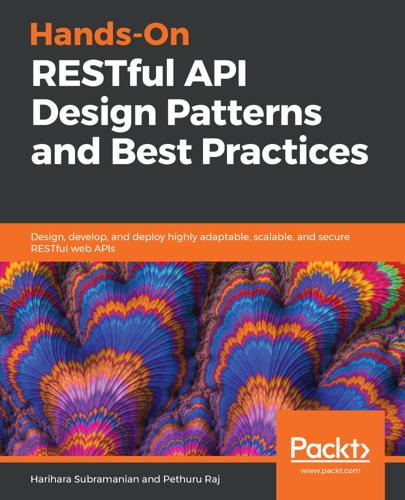
Hands-On RESTful API Design Patterns and Best Practices
by
Harihara Subramanian
Published 31 Jan 2019
The well-known edge technologies include disappearing sensors, actuators, multifaceted micro- and nano-scale electronics, miniaturized stickers, pads, tags, barcodes, chips, controllers, specks, beacons, and LEDs. The seamless combination of digital and edge technologies enables the mandated disruption, innovation, and transformation to dynamically and dexterously tend toward the IT vision, which is all about creating smarter homes, hotels, and hospitals. The emergence of the microservices architecture (MSA) is being touted as the most interesting and inspiring thing for business and IT organizations across the globe.
…
The faster maturity and stability of enterprise service bus (ESB) products has expedited the setting up and sustenance of service-oriented, integrated, and insight-driven enterprises. The API-driven integration of disengaged services for producing integrated systems is attracting a lot of attention. In short, worldwide enterprises are embracing APIs as a strategic path to achieve the much-touted digital disruption, innovation, and transformation. External APIs opens the way for clients' developers to implement and involve the exposed APIs to connect and collaborate with the software application. The remote monitoring, measuring, and managing of applications is being made possible by means of externally exposed APIs.

The Thinking Machine: Jensen Huang, Nvidia, and the World's Most Coveted Microchip
by
Stephen Witt
Published 8 Apr 2025
Huang’s best-loved business book was The Innovator’s Dilemma, by the Harvard Business School professor Clayton Christensen. First published in 1997, the book popularized the term disruptive innovation to describe how incumbent firms lose out to start-up competitors. Although the word disruption has since grown meaningless through overuse, the source material is worth revisiting. In Christensen’s model, small firms can chisel away at large ones by serving niche, marginally profitable customers that the market leaders have dismissed. Christensen’s disruptive innovators weren’t necessarily high-tech—they included scrap-metal recyclers and manufacturers of hydraulic shovels.
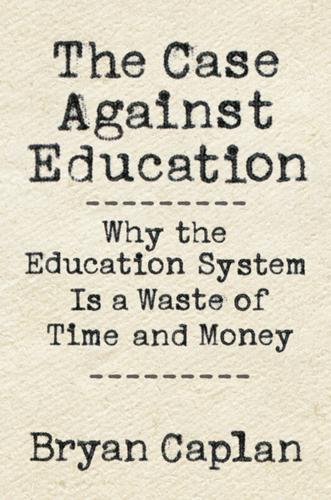
The Case Against Education: Why the Education System Is a Waste of Time and Money
by
Bryan Caplan
Published 16 Jan 2018
Online competition has already crushed traditional record companies, newspapers, and retailers. Brick-and-mortar schools are next in line. If the technophiles are right, squabbling about education spending is pretty pointless. Taxpayers are wasting billions on obsolete business models, but why fight over a sinking ship? Government cannot stop the power of disruptive innovation. If you want to make a difference, forget about education policy. Found an online education startup, and become the change you wish to see in the world. When I explain the centrality of signaling, audiences often think I’m endorsing the technophiles’ story. This utterly misunderstands me.
…
Once online education dominates the market, students at traditional schools will be stigmatized as “nonconformists.” BRYAN: Alas, there’s a catch-22. Online education won’t escape the nonconformist stigma until it dominates the market, but it won’t dominate the market until it escapes the nonconformists stigma. GILLIAN: You’re kidding yourself, professor. No industry is immune to the power of disruptive innovation. Including your own. BRYAN: “Immune” is a strong word. But schools have weathered such storms for centuries. Conformity signaling elegantly explains their resilience. I wish you were right about the future, but you’re the one who’s kidding herself. CYNTHIA: You keep insisting that school “signals conformity.”
…
“Does Education Raise Productivity, or Just Reflect It?” Economic Journal 114 (499): F499–F517. Chi, Michelene, and Kurt VanLehn. 2012. “Seeing Deep Structure from the Interactions of Surface Features.” Educational Psychologist 47 (3): 177–88. Christensen, Clayton, Michael Horn, Louis Caldera, and Louis Soares. 2011. Disrupting College: How Disruptive Innovation Can Deliver Quality and Affordability to Postsecondary Education. Washington DC: Center for American Progress. https://cdn.americanprogress.org/wp-content/uploads/issues/2011/02/pdf/disrupting_college.pdf. Chua, Amy. 2011. Battle Hymn of the Tiger Mother. London: Bloomsbury. Ciccone, Antonio, and Giovanni Peri. 2006.

The End of College: Creating the Future of Learning and the University of Everywhere
by
Kevin Carey
Published 3 Mar 2015
The receptionist brought us to a conference room with typically spare and modern décor: glossy brown conference table, white leather and stainless steel chairs, and modern art. In the middle of the desk was, incongruously, a six-inch-high toy model of Godzilla with pieces of candy stuck in his teeth and claws. Mike told us he is a big fan of Harvard Business School professor Clayton M. Christensen’s work, which was not surprising. Christensen’s theory of “disruptive innovation” holds that change comes when start-up companies use technology to sell low-value products and services to the fringes of a given market. The dominant players in the market ignore this, because they’re fat and happy selling highly profitable products to the richest customers. A favorite example is Toyota selling cheap cars in the 1960s while Ford and General Motors built Lincolns and Cadillacs.
…
Like nearly everyone thinking seriously about the future of higher education from inside a hybrid university, Lue proposes a win-win scenario: Professors take advantage of the new world of free online resources to do a much better job teaching. But there are some with a gloomier view. Clay Christensen, the Harvard business school professor and the high priest of the disruptive innovation theory that is treated like holy scripture in Silicon Valley, had recently characterized so-called blended courses—professors combined with computers—as analogous to steamboats with sails. The first steam-powered boats to cross the oceans were fitted with sails as a precaution while the steam technology became more powerful and reliable, and because it’s hard to go from one way of working to another way overnight.
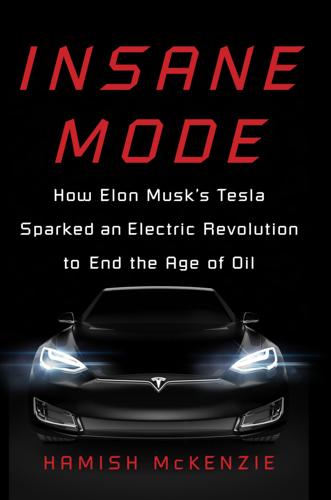
Insane Mode: How Elon Musk's Tesla Sparked an Electric Revolution to End the Age of Oil
by
Hamish McKenzie
Published 30 Sep 2017
But I don’t think that we should just disrupt things, unless that disruption is going to result in something fundamentally better for society.” The business world had come to fear the word disruption because of The Innovator’s Dilemma, a 1997 book by Harvard Business School professor Clayton Christensen that introduced the concept of “disruptive innovation.” The Innovator’s Dilemma, lauded by The Economist as one of the most important books about business ever written, lays out how market-leading companies can miss out on new waves of innovation by focusing on the needs of their existing customers to maximize profits while overlooking new and cheaper technologies or business models that customers didn’t realize they wanted.
…
“And this gives an opportunity for innovation for new companies and new entrants to play on a bit more of a level playing field than there ever was in the past.” Tesla, however, is not a disrupter by Clayton Christensen’s original definition of the theory. In a December 2015 article published by the Harvard Business Review, Christensen and his coauthors, Michael Raynor and Rory McDonald, said Tesla didn’t fit the disruptive innovation model because its foothold was in the high-end segment of the auto market. Far from representing a marginal technology, Tesla’s entry to the market had elicited significant attention and investment from established competitors. “If disruption theory is correct,” Christensen concluded, “Tesla’s future holds either acquisition by a much larger incumbent or a years-long and hard-fought battle for market significance.”

The Corruption of Capitalism: Why Rentiers Thrive and Work Does Not Pay
by
Guy Standing
Published 13 Jul 2016
In a seminal book, The Innovator’s Dilemma, Clayton Christensen argued that innovation was ‘disruptive’ if it had the potential to generate new products or services or to deliver them in radically new ways.3 He and colleagues later claimed that the provision of services through digital platforms did not meet two criteria for disruptive innovation – that the innovation must target the low end of an existing market and mainly draw in non-consumers of existing options.4 But digital platforms surely qualify as disruptive on both counts. Uber, for example, has expanded the market for taxi services by offering cheap rides, drawing in users previously put off by high prices and lack of flexibility of traditional taxi services.
…
Dobbs, Connecting Talent with Opportunity in the Digital Age (New York: McKinsey Global Institute, June 2015). 3 C. Christensen, The Innovator’s Dilemma: The Revolutionary Book That Will Change the Way You Do Business (Boston: Harvard Business Review Press, 1997). 4 C. Christensen, M. Raynor and R. McDonald, ‘What is disruptive innovation?’, Harvard Business Review, 2015. 5 M. Harris, ‘Uber: Why the world’s biggest ride-sharing company has no drivers’, The Guardian, 16 November 2015. 6 S. Jackman, ‘Crowdsourcing may hold key to unlocking Japan’s working potential’, Japan News, 2 January 2015. 7 Cited in S. O’Connor, ‘The human cloud: A new world of work’, Financial Times, 8 October 2015. 8 Associated Press, ‘US companies increasingly turning to temporary workers to fill positions’, Fox News, 8 July 2013. 9 Cited in The Economist, 13 June 2015, p. 57. 10 B.
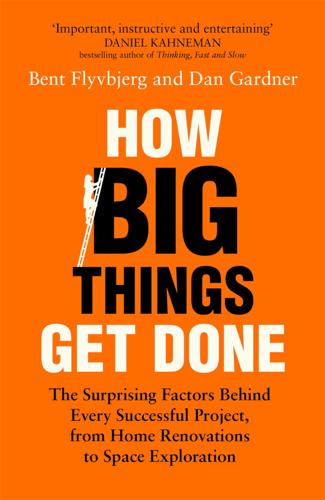
How Big Things Get Done: The Surprising Factors Behind Every Successful Project, From Home Renovations to Space Exploration
by
Bent Flyvbjerg
and
Dan Gardner
Published 16 Feb 2023
It Bombed,” Wired, July 24, 2020, https://www.wired.com/story/20-years-ago-steve-jobs-built-the-coolest-computer-ever-it-bombed/. 11. Colin Bryar and Bill Carr, Working Backwards: Insights, Stories, and Secrets from Inside Amazon (New York: St. Martin’s Press, 2021), 98–105; Charles O’Reilly and Andrew J. M. Binns, “The Three Stages of Disruptive Innovation: Idea Generation, Incubation, and Scaling,” California Management Review 61, no. 3 (May 2019): 49–71. 12. Author interview with Ian McAllister, November 12, 2020. 13. Bryar and Carr, Working Backwards, 106–9. 14. Ibid., 158–60. 15. Brad Stone, Amazon Unbound: Jeff Bezos and the Invention of a Global Empire (New York: Simon & Schuster, 2021), 40–41. 16.
…
Contemporary Physics 46 (5): 323–51. New Zealand Treasury. 2018. Better Business Cases: Guide to Developing a Detailed Business Case. Wellington, NZ: Crown. Nouvel, Jean. 2009. “Interview About DR-Byen.” Weekendavisen, Copenhagen, January 16. O’Reilly, Charles, and Andrew J. M. Binns. 2019. “The Three Stages of Disruptive Innovation: Idea Generation, Incubation, and Scaling.” California Management Review 61 (3): 49–71. Orr, Ryan J., and W. Richard Scott. 2008. “Institutional Exceptions on Global Projects: A Process Model.” Journal of International Business Studies 39 (4): 562–88. Ørsted. 2020. “Making Green Energy Affordable: How the Offshore Wind Energy Industry Matured—and What We Can Learn from It.” https://orsted.com/en/about-us/whitepapers/making-green-energy-affordable.

The Alliance: Managing Talent in the Networked Age
by
Reid Hoffman
,
Ben Casnocha
and
Chris Yeh
Published 15 Jan 2014
Getting Value from Entrepreneurial Talent We three authors come from a business environment where the employment alliance has already taken root—the high-tech start-up community of Silicon Valley. It’s the best place in the world for adaptation and innovation, as demonstrated by its economic growth over the past decade. If you want your organization to be able to survive and thrive in an environment where change is rapid and disruptive innovation rampant, you need to develop the adaptability that is the hallmark of this ecosystem. Obviously, not every industry works like Silicon Valley, nor should many established companies attempt wholesale adoption of start-up strategies. The question is which lessons from Silicon Valley are generally applicable.
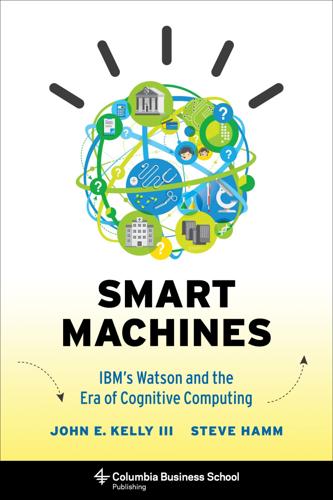
Smart Machines: IBM's Watson and the Era of Cognitive Computing (Columbia Business School Publishing)
by
John E. Kelly Iii
Published 23 Sep 2013
With its superior navigation and abundance of easy-to-use applications, this breakthrough product spawned a burst of smartphone innovation, which combined with the social-networking phenomenon to produce a revolutionary shift in global human behavior. Yet, technologically, the iPhone was built on top of many smartphone advances that preceded it. New waves of progress, however, require majorly disruptive innovations—things like the transistor, the microchip, and the first programmable computers. These are the advances that fundamentally change our world. Today, many of the core technologies that provide the basic functions for traditional computers are mature; they have been in use for decades. In some cases, each wave of improvements is less profound than the wave that preceded it.

Rise of the Robots: Technology and the Threat of a Jobless Future
by
Martin Ford
Published 4 May 2015
It seems impossible to imagine that such an immeasurable increase in our overall computing capacity won’t eventually have dramatic consequences in a variety of scientific and technical fields. Nonetheless, the primary determinant of the positions of the technology S-curves we’ll need to reach in order to have truly disruptive innovation is still the applicable laws of nature. Computational capability can’t change that reality, but it may well help researchers to bridge some of the gaps. The economists who believe we have hit a technological plateau typically have deep faith in the relationship between the pace of innovation and the realization of broad-based prosperity; the implication is that if we can just jump-start technological progress on a broad front, median incomes will once again begin increasing in real terms.
…
Imagine a future where college students can attend free online courses taught by Harvard or Stanford professors and subsequently receive a credential that would be acceptable to employers or graduate schools. Who, then, would be willing to go into debt in order to pay the tuition at a third- or fourth-tier institution? Clayton Christensen, a professor at Harvard Business School and an expert in disruptive innovation within industries, has predicted that the answer to that question will result in a grim future for thousands of institutions. In a 2013 interview, Christensen said that “15 years from now, half of US universities may be in bankruptcy.”22 Even if most institutions remain solvent, it is easy to imagine dramatically declining enrollments and revenues coupled with massive layoffs of both administrators and faculty.

Aerotropolis
by
John D. Kasarda
and
Greg Lindsay
Published 2 Jan 2009
Even during the chaos following Kenya’s disputed 2008 elections—a terrifying spasm of ethnic strife—Oserian’s five thousand employees reported for work dutifully each morning, more afraid of losing their monthly salaries of $80 (plus benefits) than they were of any mobs. The London tabloids pleaded with Britons to buy Kenyan roses for Valentine’s Day to help the victims. Like other disruptive innovations, Kenyan roses entered the market at the bottom, with a reputation for being cheap instead of good. Compared to light- and climate-controlled Dutch greenhouses, Kenyan farms (or Colombian, for that matter) are decidedly low-tech, low-cost affairs. Their flowers take shelter under plastic sheets, or are left to grow in the ground and open air.
…
His flagship clinic in Bangalore has six times as many beds as the average U.S. hospital, and his army of cardiac surgeons perform twice as many surgeries as their American colleagues. The question isn’t why is surgery in India or Thailand so cheap; it’s why is surgery in America so expensive. For someone like Toral, the hypertrophied medical-industrial complex is just begging for a dose of disruptive innovation. He calls his vision the “Toyota-ization of health care”—just as Japan’s automakers went from being cheaper to better than their American counterparts, so too will Asian surgeons. In his view, medical tourism as we know it is giving way to “globalized health care.” Hospital chains at home will buy, partner with, or even sell out to foreign rivals like Bumrungrad, creating world-wide aerial networks of patients who will hopscotch across continents chasing the best care and costs.
…
In a single year, netbooks captured 7 percent of the world’s entire laptop market; the next year they doubled that, as laptops outsold desktops for the first time ever. In Europe, wireless carriers began giving them away for free to lure new customers. Without meaning to, netbooks had paved the way for the PC’s extinction. ASUSTeK didn’t take it upon itself to invent just a new product; they invented a new category. It’s a classic example of the disruptive innovations Clayton Christensen describes in The Innovator’s Dilemma—a cheap, seemingly inferior imitator appears to gut the incumbents’ business models. In this case, their only response was to hire the insurgents to slap their names on the same models. Suddenly, the Taiwanese firms and their mainland factories were dictating terms to the rest of the industry.

Human Frontiers: The Future of Big Ideas in an Age of Small Thinking
by
Michael Bhaskar
Published 2 Nov 2021
Rather than deploy an over-rigid scheme, I am interested in identifying an overtly flexible framework; a wide-angle lens, rather than a tight taxonomic grid. For the most part, we recognise big breakthrough ideas. They cause crises in normal science; they punctuate disciplinary equilibria; they are disruptive innovations, new genres of cultural production, moments of outstanding genius. Not only do they allow us to calculate volume; as we will see, they confirm the germ theory of disease, enable heavier-than-air flight and redefine the nature of music. They are landmarks of enquiry: Newton's Principia, Harvey's Motion, Lavoisier's Chemistry, Lyell's Geology, Smith's Wealth of Nations, Darwin's Origin of Species, Freud's Interpretation of Dreams.
…
Yet in the latter case, new media and stylistic forms can be seen as broadening the possibilities of experience in an analogous way, even if we should be alive to the various characters and imperatives of the many different frontiers. 2 Khan and Wiener (1967) 3 Greenspan and Wooldridge (2018), p. 35 4 Ibid. 5 Graeber (2016), p. 105 6 Douthat (2020) 1 HOW BIG IDEAS WORK 1 Mokyr (2018) 2 McCloskey (2017) 3 Ibid., p. xiii 4 See both Mokyr (2011; 2017), and Henrich (2020) for the deeper underlying psychological component behind this. 5 Howes (2017) 6 Jacobs (2014) 7 Mokyr (2017) 8 Many scholars come down on one side or another, but as the entire oeuvre of Joel Mokyr goes to show it's almost always more complicated than that. 9 I would like to thank DeepMind Research Engineer Daniel Slater in particular for his suggestions with regard to this phrasing. 10 See for example Rogers Hollingsworth (2007) for this model of ideas. 11 Kuhn (2012), p. xliii 12 Ibid., p. 174 13 Ibid., p. 85 14 Ibid., p. 207 15 Gould (2007), p. 3 16 Rather than a straight porting of the concept he was willing to explore ‘homologies’, but only in a limited set of circumstances. Ibid., p. 266 17 Mokyr (1999) 18 Christensen (2013); Perez (2002). On a more local level we might look to what Louis Galambos called ‘formative’ innovations and Clayton Christensen ‘disruptive’ innovations. 19 Bahcall (2019) 20 Thiel (2014) 21 Kelly et al (2020) 22 For an alternative methodology with technology see for example Packalen and Bhattacharya (2012) or Funk and Owens-Smith (2017). 23 See for example a paper like Bhattacharya and Packalen (2020) for means of categorising science. 24 See Jockers (2013) or Moretti (2013) 25 Henrich (2009) 26 Epstein (2019) 27 See Hargadon (2003) for the concept of ‘technology brokering’ more widely, or Ridley (2020) for more on recombinant innovation.

Tomorrow's Lawyers: An Introduction to Your Future
by
Richard Susskind
Published 10 Jan 2013
When I probe more deeply, it transpires that many GCs would prefer off-the-shelf answers developed by law firms. However, and this is something of a vicious circle, there is, as noted, little incentive for law firms themselves to support either the efficiency or the collaboration strategy. Why should law firms destabilize their current businesses with potentially disruptive innovations when clients often seem indifferent and competitors themselves are inactive? In-house lawyers must also remember that they are likely themselves to come under the microscope within their own organizations. It will not be plausible for them simply to complain ad infinitum about law firms’ unwillingness to change.
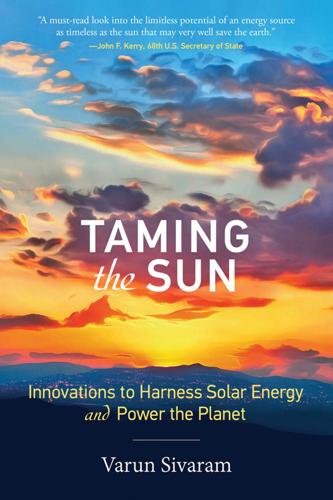
Taming the Sun: Innovations to Harness Solar Energy and Power the Planet
by
Varun Sivaram
Published 2 Mar 2018
At the time, silicon solar panels—in addition to their hefty weight, rigid shape, and ugly aesthetics—were expensive, making the cost of their electricity more than twice that from the grid.1 Silicon was a costly commodity, and the process for manufacturing solar cells was adapted from that for producing expensive microchips. Roscheisen, formerly an Internet entrepreneur, planned to apply Silicon Valley’s model of disruptive innovation to upend the lumbering solar industry. It was an exhilarating time to be in solar. Al Gore’s documentary An Inconvenient Truth had captivated the country. Investors were juiced at the prospect of red-hot market growth, running up the stock market valuations of early solar companies. At Nanosolar, the culture was infectiously optimistic.
…
But it is still the case that most of these firms’ R&D expenses remain targeted at incrementally improving existing silicon technology. Technology disruption is simply not the aspiration for most Chinese firms. Rather, their preferred route to a better market position has been vertical or horizontal consolidation.69 It’s clear, now that China and silicon have won the day, that the solar industry plans to steer clear of disruptive innovation. The industry has come of age. Yet, that dearth of innovation should be deeply worrying to anyone hoping for a solar-powered future. Notes 1. Kevin Bullis, “A Price Drop for Solar Panels,” MIT Technology Review, October 22, 2012, https://www.technologyreview.com/s/410064/a-price-drop-for-solar-panels. 2.
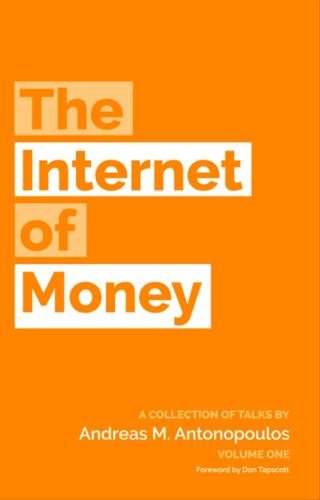
The Internet of Money
by
Andreas M. Antonopoulos
Published 28 Aug 2016
Bitcoin as a Mechanism to Opt In and Opt Out If you understand that bitcoin is a technology and not just a currency, you can truly grasp the importance it has. Again, it’s not about us. It is about the other 6 1/2 billion. It is about the ability to bring to the world a level of financial integration that the world has never seen before. From our perspective in the privileged world, it is a great technology. We can do some disruptive innovation. We can build some interesting services. But if you’re a Kenyan farmer who’s trying to raise money in order to buy seed, and now you can do decentralized peer-to-peer lending and reach out to lenders from all across the globe, this is not just a technology—this is truly life-changing. "Bitcoin is about the ability to bring to the world a level of financial integration that the world has never seen before."

Money, Real Quick: The Story of M-PESA
by
Tonny K. Omwansa
,
Nicholas P. Sullivan
and
The Guardian
Published 28 Feb 2012
For everyone, cash is the enemy—expensive to print, hard to store and move. Dematerializing money is good for people rich and poor, businesses, and governments. Mobile money, e-money, e-float, e-wallets, mobile banking, however you characterize it, is not just a cool app. It’s a killer app, the first for mobile phones in the developing world. It’s also a disruptive innovation that threatens incumbent businesses and is sparking new business formation and entrepreneurship. Nowhere is this mobile money phenomenon more prevalent and successful than in Kenya, an East African country of 40 million people. In five years, 19 ******ebook converter DEMO Watermarks******* million Kenyans, nearly 70% of the adult population, have signed up for mobile money services.

Escape From Rome: The Failure of Empire and the Road to Prosperity
by
Walter Scheidel
Published 14 Oct 2019
In turn, prioritization of maintenance and conservatism supported delegational localism that limited the state’s ability to penetrate society. In the case of China, the overall result was a sociopolitical order that helped secure peace and basic welfare for a large population but did not lend itself to disruptive innovation. It generated Smithian growth by promoting division of labor, market integration, and intensification of established techniques but could not lastingly overcome Malthusian constraints. The differences between these two schematic scenarios are relative, not absolute. Innovation did occur in China, and the societies of early modern Europe labored under the burden of inherited elite privilege and rampant corruption.
…
Mokyr thus plausibly contends that “had a single, centralized government been in charge of defending the intellectual status quo, many of the new ideas that eventually led to the Enlightenment would have been suppressed or possibly never even proposed.”11 But these networks effects also highlight the limits of fragmentation: although political pluralism was essential in ensuring free discourse, so was the relative ease of transnational intellectual communications. In the absence of some degree of underlying cultural unity, the costs of catering to a larger market of ideas would have been higher, limiting entry and competition and protecting incumbents from disruptive innovation. This cultural unity—manifest above all in the use of Latin and Christian norms—was a legacy of the Roman empire: later polycentrism was made more productive by a shared background of antecedent, if safely distant, hegemonic empire. I revisit this issue in the Epilogue. For now, suffice it to note that whereas the widespread use of Latin as an elite language undeniably served to maintain and reinforce connections beyond individual polities, persistence of its privileged position would have limited access to useful knowledge beyond refined circles.
…
The violent demise of Warring States pluralism discouraged “intellectual vigor and élan”: a key proponent of Confucian thought under the Western Han, Dong Zhonshu, called for the suppression of “perverse teachings” so as “to unify governing principles, to clarify laws and measures; and the people will know what to follow.”22 As already noted, serial imperial reconstitution gradually cemented the hegemony of neo-Confucianism over the course of the second millennium. Upholding an orthodoxy that valued stability and continuity above all else, it was structurally inimical to disruptive innovation. The fact that Confucian thought was primarily social, more interested in human relations than in nature, contributed to its utility as a means of preserving the established order but not to scientific curiosity.23 In late imperial China, the canonization of neo-Confucian compendia furthered a closing of the literati elite’s mind.

Chaos Monkeys: Obscene Fortune and Random Failure in Silicon Valley
by
Antonio Garcia Martinez
Published 27 Jun 2016
Or do they look like they got ingested by a blue whale and spent three days transiting its digestive system? Total commitment, like unconditional love, is the only type that matters. The bike-riding, date-night-going types will never give everything to a company or an idea, and are nothing more than complacent bourgeois, whatever trappings of the “disruptive innovator” they may sport, often in the form of ponderous blog posts or a bookshelf of bound B-school-level bloviation. The ones who could pass for a homeless person, though, those are the startup kamikazes who will give everything for the entrepreneurial cause, and are stopped only by death or jail.
…
.* In keeping with the engineering-first cultures of most tech companies since Google, hackathons had also come to serve as pep rally–like pageants of Facebookness, more than mere excuses to code all night and eat crappy Chinese food. As I’d later learn, weirdly pointless versions of them would be held in the regional offices where no engineers even worked, as a sort of pagan celebration of the values of do-it-yourself creation, total commitment to the company, and disruptive innovation. Pedram was here to expound on those same values. We had gotten the prophetic vision from Cox, precisely the sort of seductive propagandizing a product person does. Now it was time to hear about the martial virtues that would make that vision a reality, which was the engineer’s duty. A tall, broad-shouldered figure in a Facebook T-shirt who looked as though he worked out, Pedram commanded us in a hectoring tone: “Whatever you learned at your previous job, whatever politics and bullshit you’re bringing with you, just leave all that shit behind.”
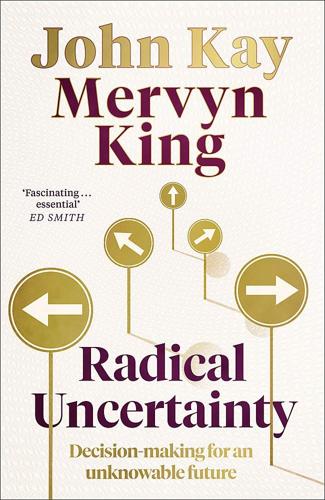
Radical Uncertainty: Decision-Making for an Unknowable Future
by
Mervyn King
and
John Kay
Published 5 Mar 2020
The underlying growth trend of the economy was interrupted from time to time by these shocks and a return to equilibrium slowed by these frictions. Of course, consumer tastes do change and respond to new products and new fashions. And productivity is affected by disruptive innovation. But there was no explanation of the sources, let alone the size and volatility, of preference shifts or disruptive innovation, nor could their incidence be characterised by any probability distribution. There was only the need for some deus ex machina to reconcile the model with observed data. 20 Productivity has been described as the measure of our ignorance. 21 The distribution of productivity shocks is then the measure of our ignorance of our ignorance.

The Misfit Economy: Lessons in Creativity From Pirates, Hackers, Gangsters and Other Informal Entrepreneurs
by
Alexa Clay
and
Kyra Maya Phillips
Published 23 Jun 2015
Wrote Zuckerberg: “We have the words ‘Done is better than perfect’ painted on our walls to remind ourselves to always keep chipping.” With Facebook claiming a hacker ethic, we can certainly see the risk of corporations who look to co-opt hacker subculture. But co-optation is only one of the ways in which the hacker movement is mainstreaming. A lot of the hacker ethic is still oriented around disruptive innovation and challenging the underlying logics and norms of the establishment, and these are the cases we’re interested in—the hackers who are changing systems. HACKING THE ESTABLISHMENT Ivan Arreguín-Toft, an expert in asymmetric conflict, analyzed battles between larger armies and their smaller adversaries in his study “How the Weak Win Wars.”17 He found that in roughly 30 percent of these asymmetrical battles over the last two hundred years, the smaller, outnumbered army prevailed.
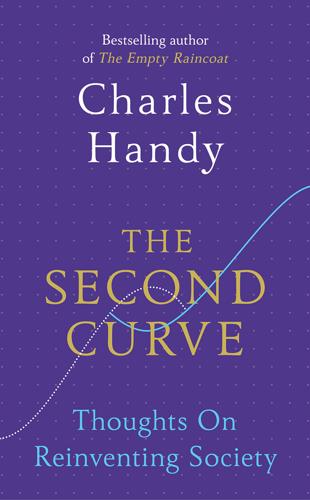
The Second Curve: Thoughts on Reinventing Society
by
Charles Handy
Published 12 Mar 2015
Only in retrospect can we look back and say, ‘That was it, that was the peak, that was when we should have started to think anew.’ Unfortunately, being wise after the event is too late to be useful. First-curve success can blind one to the possibilities of a new technology or a new market, allowing others to seize the initiative. Clayton Christensen of Harvard Business School termed it the problem of disruptive innovation, citing, among many others, the case of Kodak, who ignored the possibilities of digital photography until it was too late. They allowed outsiders to intrude and, in my words, create the new curve instead of them. New technology is offering the chance of those new curves every day. Spotting them and seizing them is the new strategic challenge for education, health and government as well as business.
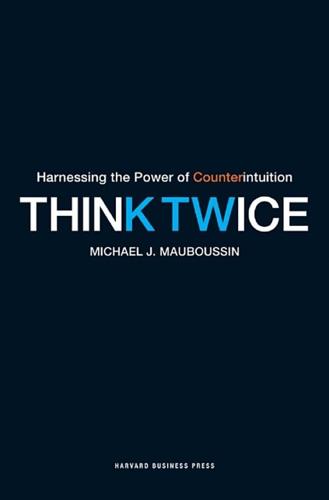
Think Twice: Harnessing the Power of Counterintuition
by
Michael J. Mauboussin
Published 6 Nov 2012
Flawed research that draws common attributes from organizations that have done well and offers those attributes as a general prescription for winning is also popular. Neither mistake properly considers decisions in context. One positive example is an exercise that Thomas Thurston, a former Intel employee, completed in 2006. Steeped in the theory of disruptive innovation, which is based on circumstances, Thurston reviewed almost fifty business plans that Intel’s new business initiatives group had funded. Applying the theory that specifies when innovations succeed, he was able to predict, without knowledge of the outcomes, a statistically significant 85 percent of successes and failures.19 Further, he was able to identify where some of the failed businesses had gone wrong.

Breathtaking: Inside the NHS in a Time of Pandemic
by
Rachel Clarke
Published 26 Jan 2021
You do realise you’re wearing one grey sock, one blue?’ He frowns, glances down, then looks up in surprise. ‘Oh dear. Am I letting the side down on compassionate excellence?’ We both crack a smile. ‘Come on,’ I admonish him. ‘At least make an effort to be half full about it. Personally, I see your socks as disruptive innovation, Sam.’ He laughs. Our hatred of NHS management jargon was spawned in our first ever hospital induction when a man in a suit told us we were not being inducted but rather ‘onboarded’ since this was no run-of-the-mill induction at all, this was something bigger, better, full of dazzle and panache – an onboarding, whatever that meant, of the newest members of the corporate family.
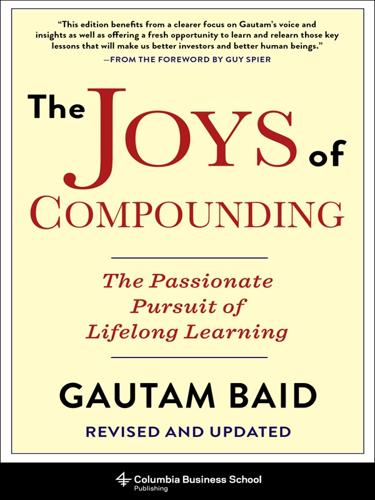
The Joys of Compounding: The Passionate Pursuit of Lifelong Learning, Revised and Updated
by
Gautam Baid
Published 1 Jun 2020
And Airbnb, the world’s largest accommodation provider, owns no real estate. Something interesting is happening. —Tom Goodwin “We are living in an ever-changing world” is both a cliché and an understatement. Regulations change all the time, new technologies emerge, unique business models evolve, and disruptive innovations take shape across all walks of life. It is an exciting time to be alive. Rockets are landing themselves, cars are driving themselves, and money is governing itself. In addition, the ongoing switch from “ownership that you purchase” to “access that you subscribe to” overruns many conventions.
…
Chan Kim, Youngme Moon, and Bruce Greenwald educated me on competitive strategy. Peter Bernstein, Howard Marks, and Seth Klarman gave me the wisdom to appreciate the role of risk and risk management. Peter Thiel taught me the significance of monopolies, power laws, and highly innovative companies. Clayton Christensen made me aware of the constant threats posed by disruptive innovation. Peter Bevelin gave me some of the finest pieces of work on multidisciplinary thinking and inversion. Thornton Oglove, Howard Schilit, and Charles Mulford educated me on how to assess the quality of reported earnings. Stephen Penman and Baruch Lev taught me the finer nuances of interpreting accounting information from the vantage point of a business analyst and a value investor.

Big Data at Work: Dispelling the Myths, Uncovering the Opportunities
by
Thomas H. Davenport
Published 4 Feb 2014
Since the exploitation of big data can involve new products and services (in addition to internal decision support), there may well need to be more integration of big data initiative targeting with product development and strategy processes. If you’re developing a new product, can there be a big data adjunct to it—perhaps in the form of a service? If you’re thinking about disruptive innovations in your industry, how might big data contribute to them? Analysts for Big Data I have largely covered this topic in chapter 4, where I discussed the human side of big data. The only issue to address here is whether smart human analysts are any more important with big data than they were with traditional analytics.

Notes From an Apocalypse: A Personal Journey to the End of the World and Back
by
Mark O'Connell
Published 13 Apr 2020
These microbes relied exclusively on anaerobic methods of respiration—until one species, the cyanobacteria or blue-green algae, began to use the Sun’s light to generate vastly more energy than its anaerobic colleagues, by which method it thrived and increased its numbers exponentially, creating via the disruptive innovation of photosynthesis an exploding surplus of oxygen in the planet’s atmosphere, toxic to almost every other living thing on Earth. This one rogue microbe changed the atmospheric constitution of the Earth, causing the obliteration of most existing life on the planet and preparing the way for the evolution of multicellular organisms such as ourselves.
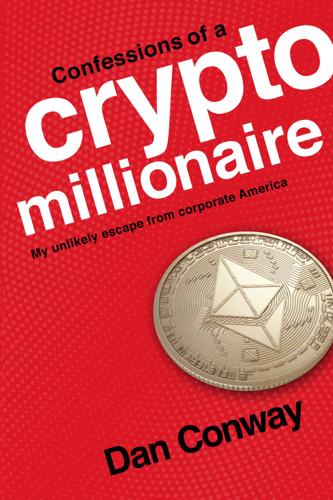
Confessions of a Crypto Millionaire: My Unlikely Escape From Corporate America
by
Dan Conway
Published 8 Sep 2019
A Forbes article on May 22 by the crypto journalist Laura Shin included what I considered the understatement of the year: “The EEA new members include both financial services incumbents and blockchain startups, and span industries, including state government, health, and entertainment. The diversity of the members in terms of industry and age suggests the possibility for disruptive innovation.” (Emphasis mine) Crypto suddenly wasn’t so weird anymore. The old-timers couldn’t believe how quickly things had changed. Even Bitcoin veterans who’d been through the explosion of interest in Bitcoin in 2013 were shocked. ETH’s sweet smile kept lighting me up. On a break, I took a cab downtown to the Freedom Tower.
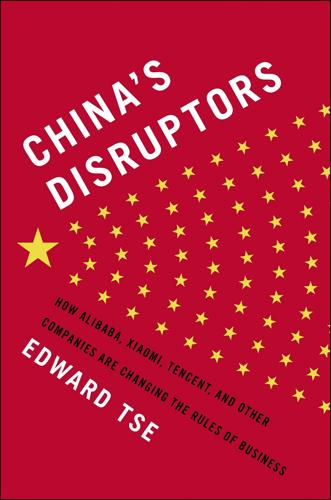
China's Disruptors: How Alibaba, Xiaomi, Tencent, and Other Companies Are Changing the Rules of Business
by
Edward Tse
Published 13 Jul 2015
Given the continuing growth and ever greater complexity of the China market and its hyperintensive competition, especially in its open sectors, he has to be on the search for new things to do and new ways of doing them that will allow them to leapfrog over others both domestically and internationally. Zhang Yue is not alone in his search for disruptive innovations. Victor Koo’s Youku Tudou also offers a glimpse of just how different China will be in the not-so-distant future. His company offers people freedom to watch videos of their choice, anytime and from anywhere. Along with all the various forms of social media and messaging apps available to people in China, plus the e-commerce option, Yukou Tudou and China’s other online video services are already watched more on mobile devices than on computers, a trend that will become more pronounced as hundreds of millions of new smartphones and tablets are sold in China in the next few years.

Blockchain Basics: A Non-Technical Introduction in 25 Steps
by
Daniel Drescher
Published 16 Mar 2017
• Tax: Calculating and collecting taxes based on transactions or on sole ownership, reducing tax avoidance,2 or double taxation. • Voting: Creating, distributing, and counting digital ballot papers. • Record management: Creation and storing of medical records. 1World Economic Forum. The future of financial services—How disruptive innovations are reshaping the way financial services are structured, provisioned and consumed. An Industry Project of the Financial Services Community, 2015; World Economic Forum. The future of financial infrastructure—An ambitious look at how blockchain can reshape financial services. An Industry Project of the Financial Services Community, 2016; Foroglou, George, and Anna-Lali Tsilidou.
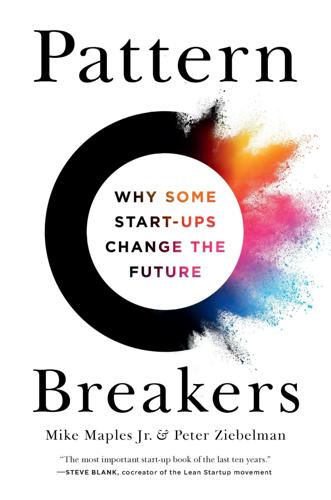
Pattern Breakers: Why Some Start-Ups Change the Future
by
Mike Maples
and
Peter Ziebelman
Published 8 Jul 2024
We also don’t claim that inflection theory is a scientific theory, like gravity or relativity. In the philosophy of science, a theory should be framed in such a way that it’s possible to disprove it with an empirical observation or experiment. We use the term “theory” in the way Clay Christensen used it when he advanced the notion of “disruptive innovation.” His theory explains how a company can start with a simpler, cheaper, or more convenient product aimed at either unserved customers or customers who are “overshot” and no longer want to pay more for increasing performance and capabilities. This theory provides an explanation for why large, successful companies can be overtaken by smaller start-ups, even when incumbents continue to innovate effectively.

Firepower: How Weapons Shaped Warfare
by
Paul Lockhart
Published 15 Mar 2021
Footnote 1 Simon Pepper and Nicholas Adams, Firearms and Fortifications: Military Architecture and Siege Warfare in Sixteenth-Century Siena (Chicago: University of Chicago Press, 1986), p. 11. CHAPTER 2 THE SHIP-KILLING SHIP Artillery had proven itself to be the most useful—and the most disruptive—innovation in military technology in the history of the West thus far, even if only the wealthy and powerful could afford to take advantage of what it had to offer. If all it could do was to bash down castle walls, it would have been enough, but creative minds found other applications in short order.
…
Even as the dynastic states of post-Renaissance Europe were already in the throes of building large and complex bureaucracies, including vast military establishments, this did not translate to government involvement in weapons technology. Ordnance officers, such as there were, inventoried weapons but did not study them. Governments did not invest in weapons research, and neither did they encourage innovation. Innovation, like all change, was disruptive. Innovation was costly. But innovation happened anyway, if unlooked-for and by accident, and the matchlock gave way to a superior ignition system. This system, the most dramatic improvement in small arms technology from the introduction of gunpowder up to that point, was already known in Europe as early as the sixteenth century.
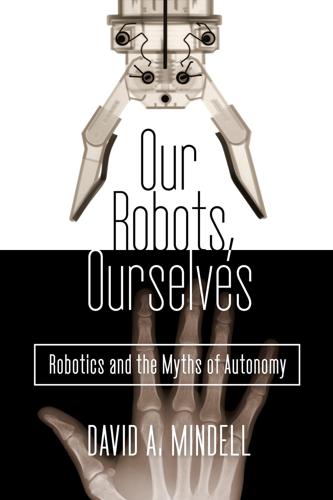
Our Robots, Ourselves: Robotics and the Myths of Autonomy
by
David A. Mindell
Published 12 Oct 2015
Ordinarily, this secretive outfit quietly took advanced, commercially available components and combined them into new systems for unique missions, usually building just a small number of any given platform. Big Safari was known for innovation, not bureaucratic skill at producing documents. It tried to normalize the program, often in conflict with the General Atomics engineers, who considered themselves disruptive innovators not answerable to military bureaucracy. The company had developed Predator largely with internal funds, so the engineers were reluctant to turn over data to the government for standardization. While some of the engineers were pilots, they tended to be from the general aviation world, flying small aircraft on weekends, rather than from the military, where aircraft needed close cooperation with larger systems.

Whiplash: How to Survive Our Faster Future
by
Joi Ito
and
Jeff Howe
Published 6 Dec 2016
The culture of creative disobedience that draws innovators to Silicon Valley and the Media Lab is deeply threatening to hierarchical managers and many traditional organizations. However, those are the ones who most need to embrace it if they are to support their most creative workers and survive the coming age of disruption. Innovators who embody the principle of disobedience over compliance do not only increase their own creativity—they also inspire others to excellence. Since the 1970s, social scientists have recognized the positive impact of “positive deviants,” people whose unorthodox behavior improves their lives and has the potential to improve their communities if it’s adopted more widely.11 Over the past two and half decades, positive deviance has been used to combat malnutrition, hospital-acquired infections, female genital mutilation, and other health and social problems worldwide.12 It’s also been used by corporations to implement successful change programs that draw on the talents of positive deviants who are already in the company, rather than attempting to impose a new discipline from above—essentially allowing others to adopt the productive disobedience of their positive-deviant colleagues, rather than requiring them to comply with an outsiders’ rules, and enabling greater creativity and innovation in the process.13 In the industrialized, mass-production society of the nineteenth and twentieth centuries, only a small number of people were supposed to be creative—the rest were simply expected to do as they were told.

100 Plus: How the Coming Age of Longevity Will Change Everything, From Careers and Relationships to Family And
by
Sonia Arrison
Published 22 Aug 2011
Terry Moe (Stanford, CA: Hoover Institution Press, 2001), 13. 20 See www.waitingforsuperman.com. 21 Howard Gardner, Five Minds for the Future (Boston: Harvard Business School Publishing, 2006). 22 Jordan Kaplan, cited in Stephanie Armour, “Generation Y: They’ve Arrived at Work with a New Attitude,” USA Today, November 6, 2005, www.usatoday.com/money/workplace/2005-11-06-gen-y_x.htm. 23 Riaz Hassan, “Social Consequences of Manufactured Longevity,” MJA 173 (2000): 601–603 (Adelaide, South Australia: Flinders University). 24 Clayton M. Christensen, Michael B. Horn, and Curtis W. Johnson, Disrupting Class: How Disruptive Innovation Will Change the Way the World Learns (New York: McGraw-Hill, 2008), 100. 25 Tom Lowry, “Extreme Experience,” BusinessWeek, August 28, 2008, www.businessweek.com/magazine/content/08_36/b4098046922925.htm?campaign_id=rss_daily. 26 Jim Oeppen and James Vaupel, “Broken Limits to Life Expectancy,” Science 296 (May 10, 2002), supplemental material, table 2. 27 Christopher F.

The Global Auction: The Broken Promises of Education, Jobs, and Incomes
by
Phillip Brown
,
Hugh Lauder
and
David Ashton
Published 3 Nov 2010
Here’s the rub, which is captured by Zeng and Williamson: “because the Chinese are using their cost advantage across a broad swath of activities, including R&D, design, and customization, not just in volume manufacturing, moving to successively higher-end segments is just as likely to result in bankruptcy as it is in salvation.”17 Hence, the widely touted view that American workers and companies can prosper in the global economy by moving up the value chain fails to understand the realities of today’s quality-cost revolution. Simply moving upmarket is based on the same residual thinking that assumed it would take China and India decades before they could compete with the West on brainpower. Whatever strategies are developed in response to this kind of disruptive innovation, they must begin from a shocking truth that in the global auction there are few places to hide from price competition. 58 The Global Auction Sustaining Asia’s Low-Cost Model A key question is whether the quality-cost equation is sustainable in the medium term; there are also questions about its impact on the jobs and incomes of American workers.
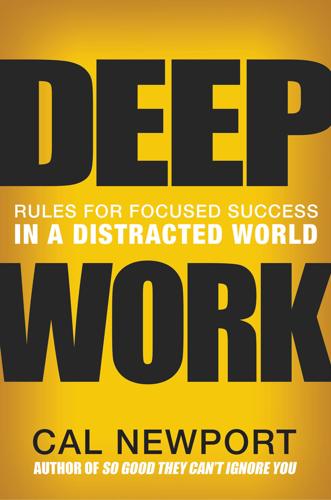
Deep Work: Rules for Focused Success in a Distracted World
by
Cal Newport
Published 5 Jan 2016
At the same time, don’t lionize this quest for interaction and positive randomness to the point where it crowds out the unbroken concentration ultimately required to wring something useful out of the swirl of ideas all around us. Execute Like a Business The story has become lore in the world of business consulting. In the mid-1990s, Harvard Business School professor Clayton Christensen received a call from Andy Grove, the CEO and chairman of Intel. Grove had encountered Christensen’s research on disruptive innovation and asked him to fly out to California to discuss the theory’s implications for Intel. On arrival, Christensen walked through the basics of disruption: entrenched companies are often unexpectedly dethroned by start-ups that begin with cheap offerings at the low end of the market, but then, over time, improve their cheap products just enough to begin to steal high-end market share.
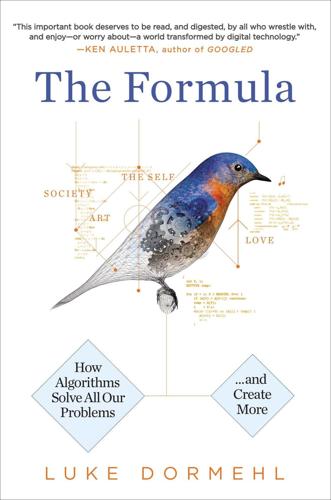
The Formula: How Algorithms Solve All Our Problems-And Create More
by
Luke Dormehl
Published 4 Nov 2014
It might not always have been exciting work, but at least it was available. Now guys like us can do a lot of that work just by using the right algorithm.” Divorce by Algorithm Business-management guru Clayton Christensen identifies two types of new technology: “sustaining” and “disruptive” innovations.19 A sustaining technology is something that supports or enhances the way a business or market already operates. A disruptive technology, on the other hand, fundamentally alters the way in which a particular sector functions. An example of the former might be something like the advent of computerized accounting systems, while the arrival of digital cameras (which famously led to the downfall of Kodak) represents the latter.

Raw Data Is an Oxymoron
by
Lisa Gitelman
Published 25 Jan 2013
Moreover, the expressive aspects of countervailance as I will outline them here serve as an important counter to the technocratic consumer rights initiatives that frame the debate in terms of property—those “MyData” initiatives that seek only to transfer ownership of data to the individual and to develop personal data banks for everyday functionality and monetization.48 There are a number of practices that have the potential for disruptive innovation vis-à-vis the new regime of dataveillance. For example, Gary Marx outlines a range of behavioral techniques and legal, economic, and technological exploits ranging from refusal to masking that work toward “neutralizing and resisting the new surveillance” system; neutralization, as he puts it, is a “dynamic adversarial social dance involving strategic moves and counter-moves and should be studied as a conflict interaction process.”49 With respect to consumer (re)targeting and behavioral profiling, a common counter-move is the design and programming of anonymizers, encrypters, distributed networks, and ad and cookie blockers.

Working in Public: The Making and Maintenance of Open Source Software
by
Nadia Eghbal
Published 3 Aug 2020
Clayton Christensen famously identifies and analyzes this problem in The Innovator’s Dilemma, the 2003 book in which he tries to understand why successful companies can be overtaken by new ones, even if they are doing well. By focusing too much on iterating upon their incumbent product, companies risk missing major opportunities for so-called “disruptive innovation,” which eventually replaces existing products.228 Similarly, state-of-the-art software, even with regular maintenance, will eventually be replaced by something else that better addresses modern user preferences. It’s easy to write off the cost of newness as unnecessary, compared to the more urgent costs of maintenance, but good stewardship of infrastructure requires the foresight of innovation.

Prediction Machines: The Simple Economics of Artificial Intelligence
by
Ajay Agrawal
,
Joshua Gans
and
Avi Goldfarb
Published 16 Apr 2018
Whether you use Google or Bing, the results from a search for “Justin Bieber” are similar. The value of a search engine is driven by its ability to give better results for unusual searches. Try typing “disruption” into Google and Bing. At the time of this writing, Google showed both the dictionary definition and results related to Clay Christensen’s ideas on disruptive innovation. Bing’s first nine results provided dictionary definitions. A key reason Google’s results were better is that figuring out what the searcher needs in an unusual search requires data on such searches. Most people use Google for both rare and common searches. Being even a little better in search can lead to a big difference in market share and revenue.
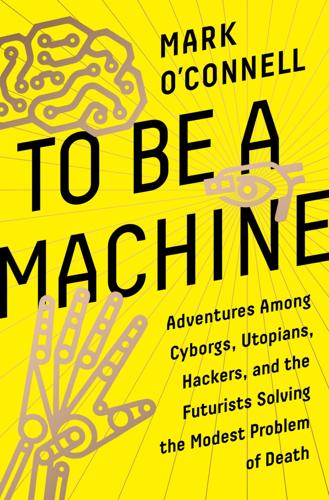
To Be a Machine: Adventures Among Cyborgs, Utopians, Hackers, and the Futurists Solving the Modest Problem of Death
by
Mark O'Connell
Published 28 Feb 2017
But Silicon Valley’s culture of radical techno-optimism had been its own sustaining force for him, and a source of financial backing for a project that took its place within the wildly aspirational ethic of that cultural context. There were people there or thereabouts, wealthy and influential people, for whom a future in which human minds might be uploaded to computers was one to be actively sought—a problem to be solved, disruptively innovated, by the application of money. One such person was Dmitry Itskov, a thirty-four-year-old Russian tech multimillionaire and founder of the 2045 Initiative, an organization whose stated aim was “to create technologies enabling the transfer of an individual’s personality to a more advanced non-biological carrier, and extending life, including to the point of immortality.”
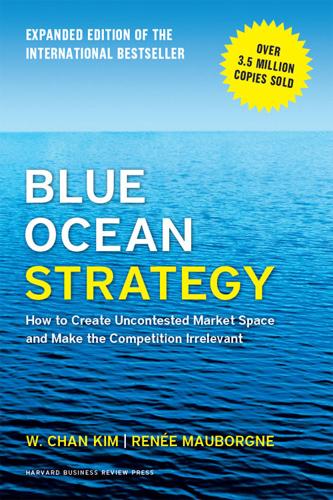
Blue Ocean Strategy, Expanded Edition: How to Create Uncontested Market Space and Make the Competition Irrelevant
by
W. Chan Kim
and
Renée A. Mauborgne
Published 20 Jan 2014
By reconstructing existing market boundaries, blue ocean strategy creates new market space within and beyond existing industries. When new market space is created beyond existing industry boundaries, as with Viagra, reconstruction tends to bring about nondestructive creation. When, on the other hand, new market space is created within an existing industry, like disruptive innovation, displacement tends to occur. However, in many cases, even when the reconstruction occurs within industries, blue ocean strategy also produces nondestructive creation. Nintendo’s Wii, for example, created a blue ocean in the video game industry. It had an element of creative destruction. However, the new market space it created of physically active, family-centered video gaming had an even larger element of nondestructive creation that complemented, more than disrupted or displaced, existing video games.

I Hate the Internet: A Novel
by
Jarett Kobek
Published 3 Nov 2016
(15) TechCrunch DISRUPT SF 2013 This billboard advertised the TechCrunch DISRUPT 2013 San Francisco conference. TechCrunch was a website that provided biased, pro-industry pseudojournalism about developments in imaginary technologies. DISRUPT was the name of TechCrunch’s many conferences, after disruptive innovation, a popular Silicon Valley concept developed by a Mormon who believed, literally, that he was in verbal communication with God. (16) The All New Droid This billboard advertised the Motorola Droid, which was a smartphone. Motorola was a company owned by Google. The brandname Droid was a trademark of LucasFilm and licensed to Motorola.

What's Wrong With Economics: A Primer for the Perplexed
by
Robert Skidelsky
Published 3 Mar 2020
He was the apostle of wealth-creation through ‘creative destruction’. Progress was not a smooth evolutionary process but a chaotic one, in which moribund giants are constantly being replaced by agile upstarts through a succession of crises. This is a concept that modern-day Silicon Valley has embraced under the softer label of ‘disruptive innovation’. For Schumpeter creative destruction is the way the capitalist system works. He would have said that it creates more ‘value’ than it destroys. The same reply is given by techno-enthusiasts. To be sure, they say, automation will destroy many existing jobs and ways of life, but in the long run all will benefit.

Tomorrow's Capitalist: My Search for the Soul of Business
by
Alan Murray
Published 15 Dec 2022
Do you choose a home based solely on a calculation of return on investment, without any regard for what it looks like, where it’s located, or whether it is arranged in a way that works for your family? Nothing in your life can be measured by a single metric; why do we think business should be different? But aren’t you worried that we will return to the economy of the 1970s, when businesses became complacent? Not really. The rapid pace of technological change and the onslaught of disruptive innovation have left most big companies anything but complacent. Regularly, I speak to companies that are more concerned with startups than with their legacy competitors. That’s a common refrain in today’s business world. We are in a period of Schumpeterian creative destruction that is driving the best big companies to transform themselves faster than ever before in their histories, or be subjected to disruption.
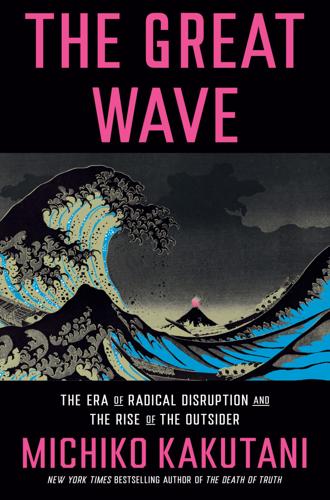
The Great Wave: The Era of Radical Disruption and the Rise of the Outsider
by
Michiko Kakutani
Published 20 Feb 2024
Digital technology, the NYU professor Clay Shirky (Here Comes Everybody) wrote, gave people the ability to take collective action “outside the framework of traditional institutions and organizations.” Investors, venture capitalists, and existing businesses started keeping an eye out for the next “disruptive innovation”—the term formulated by the late Harvard Business School professor Clayton Christensen in the mid-1990s to describe the bottom-up process whereby smaller companies can displace established businesses by creating a new market (or entering the low end of an existing market), the way, say, Wikipedia displaced Encyclopaedia Britannica or Netflix displaced Blockbuster video stores.
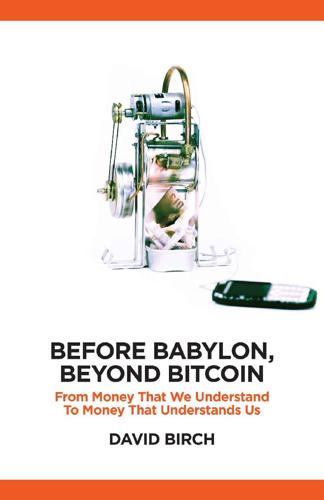
Before Babylon, Beyond Bitcoin: From Money That We Understand to Money That Understands Us (Perspectives)
by
David Birch
Published 14 Jun 2017
She is surely right to say that ‘decentralisation is an idea whose time is come’, and to identify the Internet as a new cultural technology that admits techniques such as shared ledgers. The blockchain is, as I have mentioned, only one kind of such a shared ledger, and the Bitcoin blockchain works in a very specific way. This may not be the best way to organize shared ledgers for disruptive innovation and it may not, in my opinion, point towards where the disruptive influence of shared ledger technology will deliver its biggest benefits to society. Shared ledgers Interest in shared ledger technology has been rekindled as interest in the blockchain has grown. The blockchain is the specific distributed shared ledger technology that underpins Bitcoin (Wood and Buchanan 2015), and it can be seen as a consensus database that everybody can copy and access but, by clever design, not subvert: a permanent record of transactions that no one can go back and change.
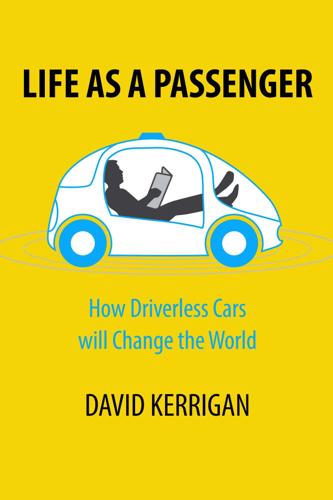
Life as a Passenger: How Driverless Cars Will Change the World
by
David Kerrigan
Published 18 Jun 2017
In May 2017, Uber’s biggest rival in the US, Lyft, announced a partnership with Waymo, just as Waymo and Uber were embroiled in a legal battle over Intellectual Property concerning LiDAR.[118] Baidu China's top online search firm Baidu said in 2015 it aims to put self-driving vehicles on the road in three years and mass produce them within five years, after it set up a business unit to oversee all its efforts related to automobiles.[119] In a surprise follow up announcement, Baidu revealed it would make its driverless cars technology, including its vehicle platform, hardware platform, software platform and cloud data services, freely available to others, particularly car manufacturers, to develop autonomous vehicles.[120] A Baidu driverless car prototype. Photo courtesy Baidu. Disruption? While the interest of technology companies in driverless cars has grabbed the headlines, it’s worth considering if these new entrants into the car market are genuinely disruptive? The theory of disruptive innovation published in the Harvard Business Review in 1995 has been frequently misquoted. In its truest form, it refers to a smaller company with fewer resources challenging an incumbent business. They usually service segments overlooked in terms of functional or price needs by established players chasing profits.

The Great Fragmentation: And Why the Future of All Business Is Small
by
Steve Sammartino
Published 25 Jun 2014
In some ways it actually faded away as a hot digital topic before it took hold the way other arenas and terminology — such as crowdfunding — did. But this doesn’t mean the predictions of what it may become were inaccurate. It was more a reflection of the diffusion of innovation rather than of it disappearing. Most disruptive innovations and technologies go through similar trajectories (see figure 14.1). Figure 14.1 expectation and utility curve: a personal variation on Gartner’s hype cycle (The underlying concept for this was conceived by Gartner, Inc.). The truth is we’re still hurtling towards a gamified future of commerce.

The End of Big: How the Internet Makes David the New Goliath
by
Nicco Mele
Published 14 Apr 2013
The Collapse of Scale Now, I can hear the skeptics: Will everyday individuals really achieve Walmart’s capacity to sell goods globally? Maxwell Wessel seems to think so. He’s part of the Forum for Growth and Innovation, a Harvard Business School think tank developing and refining theory around disruptive innovation (innovations that disrupt existing markets). Wessel argues that scale, “one of the last bastions from the competitive storm,” is no longer profitable or safe. For a long time, technology made being big very profitable and very safe—because no one else could afford to be big. If you were Ford Motor Company, no one else could afford the vast machinery needed to manufacture cars.

The Internet Is Not the Answer
by
Andrew Keen
Published 5 Jan 2015
,” Economist, January 14, 2012. economist.com/node/21542796/print. 57 Stone, The Everything Store, p. 348. 58 Joshua Cooper Ramo, The Age of the Unthinkable: Why the New World Disorder Constantly Surprises Us and What We Can Do About It (New York: Bay Back Books, 2010). 59 Paul F. Nunes and Larry Downes, “Big Bang Disruption: The Innovator’s Disaster,” Outlook, June 2013, accenture.com/us-en/outlook/Pages/outlook-journal-2013-big-bang-disruption-innovators-disaster.aspx. 60 Larry Downes and Paul F. Nunes, “Big-Bang Disruption,” Harvard Business Review, March 2013, hbr.org/2013/03/big-bang-disruption. 61 Ibid. 62 Larry Downes and Paul Nunes, Big Bang Disruption: Strategy in the Age of Devastating Innovation (New York: Portfolio/Penguin, 2014), p. 193. 63 Jason Farago, “Our Kodak Moments—and Creativity—Are Gone,” Guardian, August 23, 2013, theguardian.com/commentisfree/2013/aug/23/photography-photography. 64 George Packer, “Celebrating Inequality,” New York Times, May 19, 2013. 65 Ibid. 66 “The Onrushing Wave,” Economist, January 18, 2014, p. 25. 67 Josh Constine, “The Data Factory—How Your Free Labor Lets Tech Giants Grow the Wealth Gap,” TechCrunch, September 9, 2013. 68 David Brooks, “Capitalism for the Masses,” New York Times, February 20, 2014. 69 Ibid. 70 George Packer, “No Death, No Taxes: The Libertarian Futurism of a Silicon Valley Billionaire,” New Yorker, November 28, 2011. 71 Ibid. 72 Ibid. 73 Robert M.
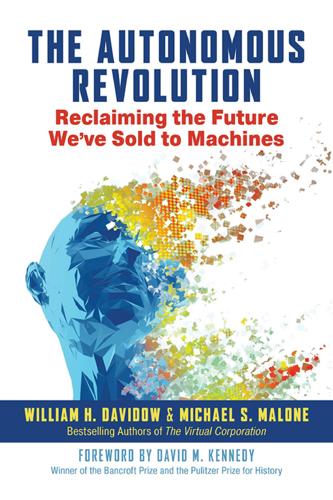
The Autonomous Revolution: Reclaiming the Future We’ve Sold to Machines
by
William Davidow
and
Michael Malone
Published 18 Feb 2020
Gesturing at an array of early-generation robots working on the assembly-line floor, Ford smugly declared that not one of those machines would ever go on strike, nor would they ever pay dues to Reuther’s union. “Maybe so,” Reuther allegedly replied, “but not one of those machines will ever buy an automobile, either.” Reuther’s riposte anticipates Davidow and Malone’s depiction of a future in which hyper-disruptive innovations such as artificial intelligence and distributed 3-D printing will have solved the ancient problem of how to make things, even while raising an urgent new problem of who will buy those things, and what they will offer for them in exchange. This is but one example of the countless visions of the future that readers will encounter in The Autonomous Revolution. ——— While historians have long been preoccupied with change, they have been especially so since the eighteenth-century Enlightenment—not surprisingly, since they have lived in an environment where time itself seems to have been dramatically sped up by the engines of the great revolutions—political and industrial—with which the eighteenth century came to a climax.

Listen, Liberal: Or, What Ever Happened to the Party of the People?
by
Thomas Frank
Published 15 Mar 2016
Collaborations such as “Startup NY,” a program that uses public universities and tax breaks as entrepreneur bait; it is, Cuomo tells us, “a game-changing initiative” that works by making public universities “into tax-free communities that attract new businesses, venture capital, start-ups, and investments from across the world.”4 There is also a version that comes from sky-blue Delaware, where Democratic governor Jack Markell—a man much beloved of the East Coast banking and telecom communities—has tried to privatize the Port of Wilmington, has done battle with public workers, and has fashioned a role for himself as an info-age thought-leader. Toward the end of 2014, Markell traveled to Stanford University, the center of the knowledge economy, to speak about “Disruptive Innovation,” meaning, in this case, web-based companies that displace an existing personal service. The question before policymakers like him, Markell said (according to his prepared text) was “how we can facilitate the success of these innovations.” He further wondered how Delawareans might “switch our schools” in order to produce the kind of workforce that innovative companies want and even how they might consult with the “business community to make curricula relevant.”5 If you think this is about bowing down before the One Percent, you’ve got Markell all wrong.

The Digital Party: Political Organisation and Online Democracy
by
Paolo Gerbaudo
Published 19 Jul 2018
They adopt a philosophy of ‘distributed organising’, to use the terms of Sanders’ staffers Becky Bond and Zack Exley10 to tap into the political labour of their diffuse support base, much in the same way in which social media companies extract value from the ‘free labour’ of their dispersed user base. However, this organisational revolution cannot be understood as stemming merely from strategic and economic considerations, as a translation of the ‘lean management’ and the ‘disruptive innovation’ philosophy adopted by several Silicon Valley firms to the political arena. Rather, it is also premised on, and justified by, the utopian vision of an online democracy using digital technology as a means to extend and deepen political participation, reintegrate in the polity many citizens who have for a long time been distant from the political arena and allow them to have a more direct and meaningful intervention in the political process.
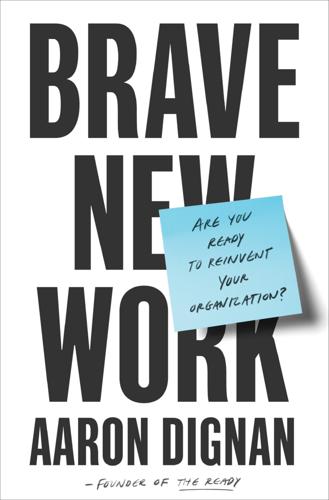
Brave New Work: Are You Ready to Reinvent Your Organization?
by
Aaron Dignan
Published 1 Feb 2019
Use them to provoke a conversation about what is present and what is possible. What is our philosophy on innovation? Where, when, and how does innovation happen? Who participates in innovation? Who has the right to innovate? How do we approach incremental and disruptive innovation? What is the role of failure and learning in innovation? How do we evaluate new ideas, approaches, and products? How do we balance the short term and the long term? How do we manage our portfolio of ideas, prototypes, and products? What does it mean to be People Positive about innovation?
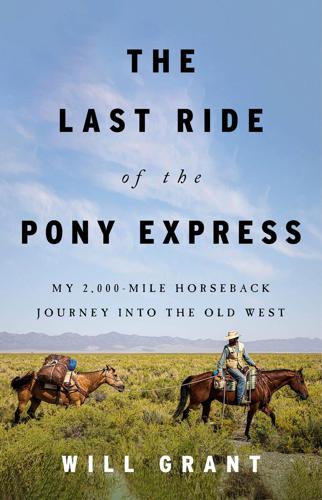
The Last Ride of the Pony Express: My 2,000-Mile Horseback Journey Into the Old West
by
Will Grant
Published 14 Oct 2023
A former Mormon dean of the school, Kim Clark, led the program until he was recalled by the head of the church to lead Brigham Young University-Idaho in 2005. When asked if it was a difficult decision to leave Cambridge for Idaho, Clark replied that a phone call from the head of the church was as good as a phone call from a prophet.10 Clayton Christensen, a church leader who developed the theory of disrupted innovation and authored the book The Innovator’s Dilemma: The Revolutionary Book That Will Change the Way You Do Business, is a star business school professor for the Mormons. Another star is Mitt Romney, who graduated from Brigham Young University in 1971 and then attended Harvard Business School. A common track for entrepreneurial Mormons is to attend Brigham Young University, which costs church members half of what it does everyone else, the BYU Marriott School of Business, and then Harvard Business School.11 From there, Goldman Sachs will be ready to talk.

Rule of the Robots: How Artificial Intelligence Will Transform Everything
by
Martin Ford
Published 13 Sep 2021
This gaping chasm between predictions—with multiple researchers anticipating human-level AI within a decade or two, whereas others think it could be centuries—is, I think, a vivid illustration of just how unpredictable the future of artificial intelligence is likely to be. THE QUEST TO build human-level AI is, I think, the single most fascinating topic in the field of artificial intelligence. Someday it may well result in humanity’s most consequential and disruptive innovation. In the meantime, however, artificial intelligence as a practical tool will remain relatively narrow, and in many ways quite limited. To be sure, AI systems designed to solve real-world problems will be continuously upgraded as research at the very frontier of the field is incorporated, but for the foreseeable future, the power of this new technology will be delivered not by a single, highly flexible machine intelligence, but rather by an explosion of specific applications that are already beginning to scale across nearly every aspect of industry, the economy, society and even culture.
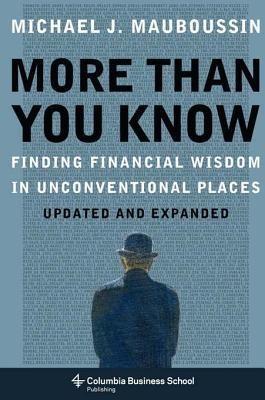
More Than You Know: Finding Financial Wisdom in Unconventional Places (Updated and Expanded)
by
Michael J. Mauboussin
Published 1 Jan 2006
Classify the phenomena into categories based on similarities. Categorization simplifies and organizes the world so as to clarify differences between phenomena. An example of categorization in physics is solids, liquids, and gases. In innovation research—Christensen’s specialty—the categories are sustaining and disruptive innovations. Investing has many variations of categorization, including value versus growth stocks, high risk versus low risk, and large- versus small-capitalization stocks. These categories are deeply ingrained in the investment world, and many investment firms and their products rely on these categories. 3.

There's Got to Be a Better Way
by
Nelson P. Repenning
and
Donald C. Kieffer
Published 26 Aug 2025
Many of the organizations we have discussed so far emerged from their efforts to use dynamic work design with a better track record of innovation and more ability to respond to unanticipated changes. Faster, more focused processes staffed by people comfortable with surfacing problems and making adjustments provide a powerful platform for both doing the disruption (innovating) and responding to competitive threats. That said, the emergence of COVID-19 in early 2020 put this argument to the test in a way that we could never have anticipated. It also provides a definitive demonstration of the dynamic work design approach and principles in action. “DO WE EVEN DO THIS?”

The Impulse Society: America in the Age of Instant Gratification
by
Paul Roberts
Published 1 Sep 2014
And these are only previews for the automation blockbusters said to be just around the corner, as the exponential rise in computing power, sensor technologies, and Big Data pushes the economy, and the job market, into entirely new territory. This isn’t supposed to worry us, though. As members of an educated, technologically savvy, postmaterialist society, we’re supposed to understand that even truly disruptive innovations and the enormous new efficiencies they bring make us better off. And historically, that’s been absolutely the case. Innovation has been very good for us and very good for the job market. By allowing us to increase our output and reduce our costs, each new increment of efficiency-enhancing innovation—our laborsaving machines, our higher-volume factories, our more meticulous management strategies—though they might bring temporary “dislocations,” eventually meant more jobs and better jobs, with higher wages and safer conditions.

No Ordinary Disruption: The Four Global Forces Breaking All the Trends
by
Richard Dobbs
and
James Manyika
Published 12 May 2015
Increasingly affordable genetic sequencing combined with big data analytics will allow rapid diagnosis of medical conditions, pinpointing of targeted cures, and potentially even the creation of customized organisms through synthetic biological methods, with applications in agriculture, food, and medicine. Advances in materials science are another disruptive innovation. The process of manipulating materials at the molecular level has made nanomaterials possible. Such breakthroughs have already transformed ordinary materials such as carbon and clay to take on surprising new properties—greater reactivity, unusual electrical properties, and greater strength.

The Book of CSS3
by
Peter Gasston
Published 14 Apr 2011
Although some firm opposition seems to coming from within the CSSWG, two competing proposals have been put forth. The first was created by Daniel Glazman, co-chairman of the CSS Working Group, and Dave Hyatt, a leading light at WebKit, so this proposal has a pretty good pedigree. Their concept for CSS Variables (http://www.disruptive-innovations.com/zoo/cssvariables/) is notionally similar to the example I used in the introduction to this section and is persuasively simple. The first step is to use the new @variables at-rule to define string and value pairs: @variables { exampleColor: #F00; exampleLength: 10em; } These strings can then be used as values in the var() notation, applying the value to relevant properties: E { background-color: var(exampleColor); width: var(exampleLength); } The second proposal, CSS Constants (http://fantasai.inkedblade.net/style/specs/constants/), was created by another CSS Working Group member and is more flexible, allowing for three different types of constants: values, style-sets, and selectors.
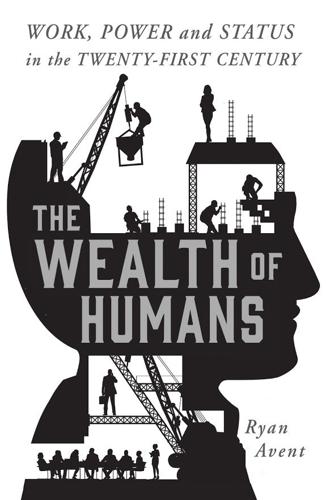
The Wealth of Humans: Work, Power, and Status in the Twenty-First Century
by
Ryan Avent
Published 20 Sep 2016
The information-processing role of the firm can help us to understand the phenomenon of ‘disruption’, in which older businesses struggle to adapt to powerful new technologies or market opportunities. The notion of a ‘disruptive’ technology was first described in detail by Clayton Christensen, a scholar at Harvard Business School.4 Disruption is one of the most important ideas in business and management to emerge over the last generation. A disruptive innovation, in Christensen’s sense, is one that is initially not very good, in the sense that it does badly on the performance metrics that industry leaders care about, but which then catches on rapidly, wrong-footing older firms and upending the industry. Christensen explained his idea through the disk-drive industry, which was once dominated by large, 8-inch disks that could hold lots of information and access it very quickly.

The Connected Company
by
Dave Gray
and
Thomas Vander Wal
Published 2 Dec 2014
Amazon can expect that the level of change on the web is likely to remain volatile for some time. Constant innovation in online services will cause customer expectations to evolve accordingly. So it makes sense for Amazon’s web-development approach to be highly adaptive and flexible, with lots of room for creative experiments and innovation. But radical, disruptive innovations on the fulfillment side of Amazon’s business are less likely. It’s reasonable to predict that customers will continue to want fast, efficient delivery, and that warehousing, shipping, and logistics, because they involve large investments and existing physical infrastructure (ships, trucks, planes, railroads, and so on), won’t change anywhere near as rapidly as online services.

Disrupted: My Misadventure in the Start-Up Bubble
by
Dan Lyons
Published 4 Apr 2016
Thirteen The Ron Burgundy of Tech Imagine Joel Osteen pumped up on human growth hormone. Imagine there’s a secret government lab where scientists have blended the DNA of Tony Robbins with the DNA of Harold Hill, the aw-shucks shifty salesman from The Music Man. Imagine a grizzly bear in a pinstriped suit, standing on his hind legs and talking about changing the world through disruptive innovation and transformation. If you can imagine those things then you can almost imagine the horror of seeing Marc Benioff, the billionaire founder and CEO of Salesforce.com, on stage at his company’s annual conference, Dreamforce. It’s November 2013, and that’s where I am, along with Cranium and Spinner and a bunch of other HubSpotters, sitting through Benioff’s three-hour keynote speech on the opening day of the conference.
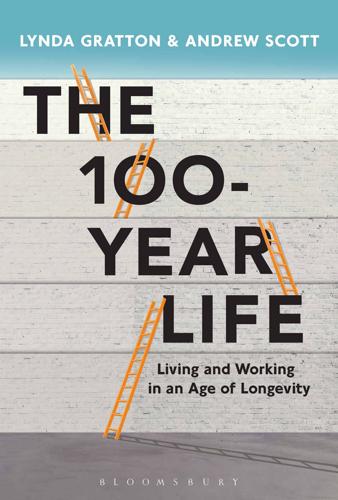
The 100-Year Life: Living and Working in an Age of Longevity
by
Lynda Gratton
and
Andrew Scott
Published 1 Jun 2016
In order to support those destined to live long lives, the agenda faced by educational institutions is fourfold: how to incorporate new learning technologies and experiential learning; how to break down boundaries between age groups; how to think more deeply about ways to teach creativity, innovation, humanity and empathy; and how to rapidly expand practical specialisms in order to ensure that education wins in its race against technology. It is no surprise therefore that Harvard Business School Professor Clayton Christensen argues that technology makes education ripe for ‘disruptive innovation’, and that this will have a positive impact on lifelong learning. Investments in digital innovations will transform the classroom, with online teaching, MOOCs, digital degrees and certifications with new providers and new entrants. Looking forward, Jane and her cohort will find an ever-increasing array of options for how, what and where they study, and at what price.

The Age of Stagnation: Why Perpetual Growth Is Unattainable and the Global Economy Is in Peril
by
Satyajit Das
Published 9 Feb 2016
Industrial revolution 3 emphasizes disruptive technologies, a term associated with Harvard professor Clayton Christensen and his influential 1997 book The Innovator's Dilemma. It differentiated between sustainable innovations, which improve products and make valuable changes for a firm's current customers, and disruptive innovations—cheaper, poorer-quality products that initially target less profitable customers so as to undercut existing businesses, with the object of eventually dominating the industry. In a vituperative exchange characteristic of academic cloisters, historian Jill Lepore criticized Christensen's heavily marketed and promoted thesis, arguing that his hand-picked case studies did not support the theory.

The End of Accounting and the Path Forward for Investors and Managers (Wiley Finance)
by
Feng Gu
Published 26 Jun 2016
More recently, research on capitalized development costs (the “D” of R&D), mandated by the international accounting rules (IFRS), substantiated that these capitalized R&D values are indeed recognized by investors as valuable assets, on par with physical and financial assets.15 Even the oft-mentioned abnormally high uncertainty associated with intangibles, and R&D in particular, to justify their immediate expensing, is a gross generalization. A recent study documented that, in general, R&D risk is no higher than that of tangible assets, except for the risk posed by the infrequent and transformative disruptive innovations.16 Summarizing, given the compelling logic of capitalizing intangible investments—as well as the partial R&D capitalization already required by the international accounting rules (IFRS), and the capitalization of intangibles in the national income accounts, what else, we wonder, is required to convince US accounting regulators to scuttle the dated intangibles expensing rule and move accounting to the twenty-first century?

Alpha Girls: The Women Upstarts Who Took on Silicon Valley's Male Culture and Made the Deals of a Lifetime
by
Julian Guthrie
Published 15 Nov 2019
She then got a summer job teaching kids how to program in LOGO. She attended Duke because the university had a grant from IBM for two big computer labs. She had worked at Microsoft for nine years and loved her job. “I’ve always been interested in how tech serves all of society,” Melinda said. “I am a big believer in disruptive innovation. But if we want more innovation and better products, we’ve got to put more money behind women and minorities.” Theresia was impressed by Melinda, finding her engaging, impassioned, and down-to-earth. Theresia offered her ideas on how to increase the number of women in tech in general as well as women investors and women founders.

What Algorithms Want: Imagination in the Age of Computing
by
Ed Finn
Published 10 Mar 2017
Algorithmic Labor: Cloud Warehouses While the interface economy supports many human-to-human interactions where consumers and contractors operate on relatively equal footing, there is another sphere of algorithmic arbitrage where human labor is almost entirely obscured behind the veil of computation. The disruptive innovations that upended traditional blue-collar industries have changed the fundamental assumptions of many corporations around their business operations. All of the algorithmic businesses we have discussed so far—companies like Zynga, Uber, Google, and Apple—depend on a massive infrastructure for distributed, global computation: millions of servers running around the clock in vast warehouses, processing and managing tremendous data stores.

Uberland: How Algorithms Are Rewriting the Rules of Work
by
Alex Rosenblat
Published 22 Oct 2018
First, as Uber enters a new space, it takes a direct-to-consumer approach, bypassing potential barriers, like regulations or political opposition, by winning over consumers with its effective app. It cautions opponents that might try to constrain some of its practices by conveying the message, “Be grateful for the disruptive innovation we bring, because what we offer is superior to the regulations that would hold us back” (what I refer to as “gratitude logic”). Because of its size and influence, it simply shrugs off regulation that it doesn’t like. Then, Uber shifts and reshifts its identity, trying to find exploitable cracks and inconsistencies between various systems of rules and laws.

The New Gold Rush: The Riches of Space Beckon!
by
Joseph N. Pelton
Published 5 Nov 2016
A few years back, the author wrote a book called e-Sphere : The Rise of the Worldwide Mind. This book is about e-Space, a new age of human expansion into a cosmic world and New Space economy that transcends the world as we know it today. “E-Space” will become a new reality within the next half century. It seems that only major disruptive innovations variously described as “the singularity,” (Kurzweil) “abundance,” (Diamandis) etc., can alter humanity’s future evolutionary course, or we are indeed headed into some major global troubles. These global problems include such challenges as climate change, overpopulation, intensive urban crowding, lack of potable water and a host of other problems related to over consumption of resources.

The Meritocracy Trap: How America's Foundational Myth Feeds Inequality, Dismantles the Middle Class, and Devours the Elite
by
Daniel Markovits
Published 14 Sep 2019
The same decade also saw steep declines in other clerical jobs: employment for telephone operators, typists and word processors, travel agents, and bookkeepers fell by 64, 63, 46, and 26 percent respectively. See Andrew Leonard, “The Internet’s Greatest Disruptive Innovation: Inequality,” Salon, July 19, 2013, accessed November 18, 2018, www.salon.com/2013/07/19/the_internets_greatest_disruptive_innovation_inequality/. These job losses add up, so that since 2007, the United States has lost more than two million clerical jobs in total. Quoted in Robin Harding, “US Has Lost 2m Clerical Jobs Since 2007,” Financial Times, April 1, 2013, accessed November 18, 2018, www.ft.com/content/37666e6c-9ae5-11e2-b982-00144feabdc0.
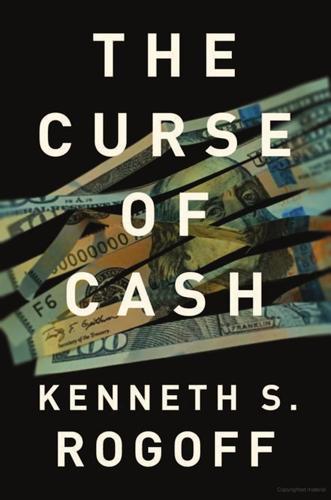
The Curse of Cash
by
Kenneth S Rogoff
Published 29 Aug 2016
Plenty of other targets in the transaction ecosystem in theory could be overtaken by digital currencies, even after adjusting to regulation. The huge fees collected by credit card agencies, wire services, and other extant electronic transaction technologies make these media extremely vulnerable to disruptive innovators. Already, digital currencies are far cheaper for transmitting money internationally than wire services, where the charges can often run as much as 10–15% of the amount transmitted. And some applications of distributed-ledger technology offer the promise of cutting out intermediaries in transactions between, say, two banks.
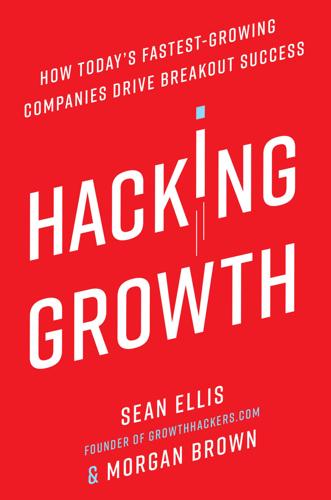
Hacking Growth: How Today's Fastest-Growing Companies Drive Breakout Success
by
Sean Ellis
and
Morgan Brown
Published 24 Apr 2017
Other major brands the authors identify as having suffered stalls include 3M, Apple, Banc One, Caterpillar, Daimler-Benz, Toys “R” Us, and Volvo. Though one might think that such abrupt reversals must be due to some dramatic disruption in the market, the study showed that often stalls are not caused by the entrance of a bold new competitor or a disruptive innovation, like smartphones, but by chronic failures on the part of companies to closely monitor customer satisfaction and to zealously look for early warning signs of disaffection. Often, erosion of customer loyalty has been going on for years but the company has failed to perceive it—until it’s too late.
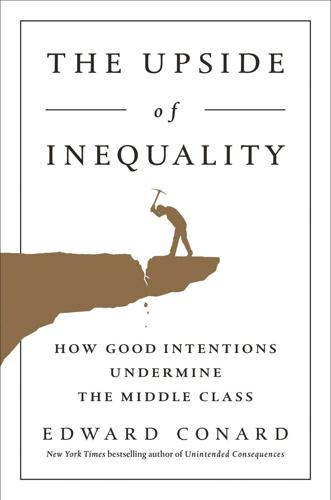
The Upside of Inequality
by
Edward Conard
Published 1 Sep 2016
The threat of technological disruption may be too high for companies with valuable franchises, like Google, to close off their options by using all their cash, whether for investment or distributions to shareholders. If companies are hoarding cash to protect themselves from emerging technologies, it indicates that the risk of loss from unexpected disruptive innovation is high. It’s also possible that entrepreneurialism has grown so prevalent that companies like Google and Facebook—with limited upside to their market value—can no longer attract the most productive innovators. That would be consistent with the opening of a broad window of investment opportunities, albeit opportunities that disrupt existing businesses.

Servant Economy: Where America's Elite Is Sending the Middle Class
by
Jeff Faux
Published 16 May 2012
Also prominent is a group of wealthy hedge fund operators and investment bankers, who in 2005 started Democrats for Education Reform in order to convince Democrats to embrace the traditional Republican education agenda. Echoing the management styles that have pervaded the U.S. corporate sector for the past twenty years, business-model reformers urge “disruptive innovation”: schools that are not performing should be shut down, have their teachers replaced en masse, or be privatized. In response, states and cities deliberately hired education chancellors with no teaching experience and, in some cases, former corporate executives with no education experience at all.
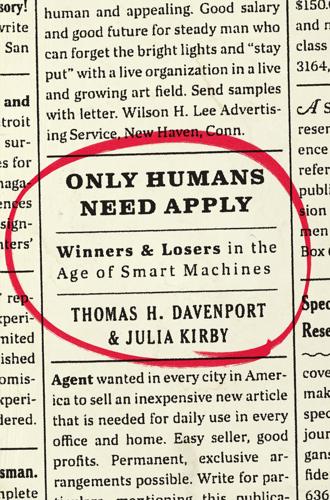
Only Humans Need Apply: Winners and Losers in the Age of Smart Machines
by
Thomas H. Davenport
and
Julia Kirby
Published 23 May 2016
Mike Batty and Alice Kroll, “Automated Life Underwriting: A Survey of Life Insurance Utilization of Automated Underwriting Systems,” prepared for the Society of Actuaries, 2009, file:///C:/Users/jkirby/Downloads/research-life-auto-underwriting.pdf. 14. Thomas Arnett, “How Technology Displaces Teachers’ Jobs,” Clayton Christensen Institute for Disruptive Innovation, November 19, 2014, http://www.christenseninstitute.org/how-technology-displaces-teachers-jobs/#sthash.PyjrVrNk.dpuf. 15. David Port, “Reckoning with Robo-Advisors,” LifeHealthPRO, December 31, 2014, http://www.lifehealthpro.com/2014/12/31/reckoning-with-robo-advisors. Chapter 4: Stepping Up 1.
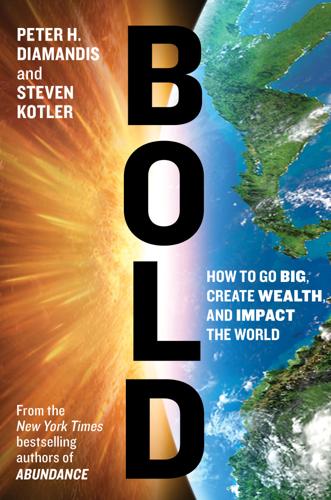
Bold: How to Go Big, Create Wealth and Impact the World
by
Peter H. Diamandis
and
Steven Kotler
Published 3 Feb 2015
Or see http://www.kodak.com/ek/US/en/Our_Company/History_of_Kodak/George_Eastman.htm. 2 See http://www.kodak.com/ek/US/en/Our_Company/History_of_Kodak/George_Eastman.htm. 3 Ibid. 4 See “Kodak Moments: Steve Sasson, Digital Camera Inventor,” https://www.youtube.com/watch?v=wfnpVRiiwnM. 5 John Pavlus, “How Steve Sasson Invented The Digital Camera,” Fast Company, April 12, 2011, http://www.fastcodesign.com/1663611/how-steve-sasson-invented-the-digital-camera-video. 6 Steve Sasson, “Disruptive Innovation: The Story of the First Digital Camera,” Linda Hall Library Lectures, October 26, 2011. 7 Andrew Martin, “Negative Exposure for Kodak,” New York Times, October 20, 2011, http://www.nytimes.com/2011/10/21/business/kodaks-bet-on-its-printers-fails-to-quell-the-doubters.html?pagewanted=all. 8 Pavlus, “How Steve Sasson Invented The Digital Camera.” 9 Gordon E.
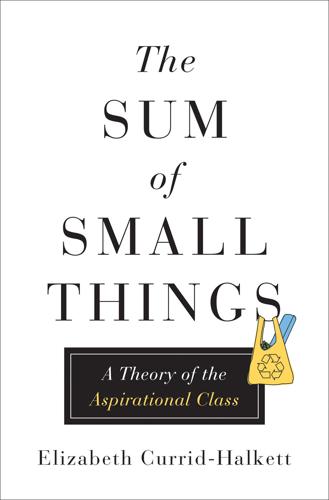
The Sum of Small Things: A Theory of the Aspirational Class
by
Elizabeth Currid-Halkett
Published 14 May 2017
Thorstein Veblen and the institutionalists: A study in the social philosophy of economics. Boulder: Colorado Associated University Press. Second wind. (2014, June 14). Economist: Schumpeter. Retrieved from http://www.economist.com/news/business/21604156-some-traditional-businesses-are-thriving-age-disruptive-innovation-second-wind. Segran, E. (2016, March 16). Why clothing startups are returning to American factories. Fast Company. Retrieved from https://www.fastcompany.com/3057738/most-creative-people/why-clothing-startups-are-returning-to-american-factories. Shapiro, S. M. (2012, May 23). Mommy wars: The prequel.
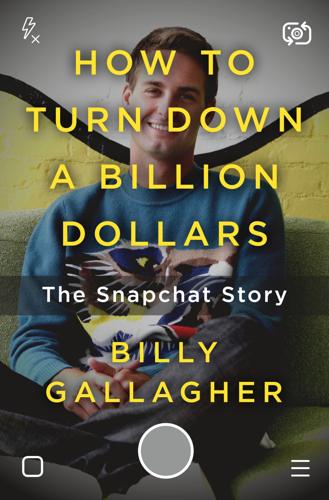
How to Turn Down a Billion Dollars: The Snapchat Story
by
Billy Gallagher
Published 13 Feb 2018
Things that don’t stay relevant don’t even get the luxury of leaving ruins. They disappear. Like any good religion, the cult-like startup world has a holy scripture: The Innovator’s Dilemma, a 1997 book by Harvard Business School professor Clayton Christensen. Christensen wrote the book before “disruptive innovation” was a punchline on the HBO comedy Silicon Valley, and it has managed to maintain its revered status for two decades. We can see the core concept of The Innovator’s Dilemma at work in Snapchat’s story: a new entrant makes a product that is so far beneath what an incumbent does that it seems silly—why would we waste our time down there?

Revolution Française: Emmanuel Macron and the Quest to Reinvent a Nation
by
Sophie Pedder
Published 20 Jun 2018
A private individual, who struggled to reveal anything intimate in his autobiographical book, he sought the most publicly scrutinized office of state. An unworldly teenager, he won over a drama teacher (now his wife) 24 years his elder. A provincial outsider, he is the embodiment of the French metropolitan elite. A personality with unusual private empathy, he has trouble persuading the French that he likes them. A disruptive innovator, he has ended up strengthening the institutions he used to stage his insolent revolt. This book is an attempt, after his first year in office, to make sense of Emmanuel Macron, his contradictions, and his ambition to remake France. How did a political novice manage to defy the unwritten rules of the Fifth Republic, and secure the presidency at his first attempt?

Rocket Billionaires: Elon Musk, Jeff Bezos, and the New Space Race
by
Tim Fernholz
Published 20 Mar 2018
Blue Origin’s ambitions to build out the lunar economy are, in turn, very much in the vein of Jeff Bezos’s approach to business: envision something entirely fantastic—like an invisible store where you can buy everything, or mining water to produce energy on the moon—and figure out how to make it real. As always, however, they find a way to converge: both companies are focusing their next-generation rocket engines to be built to run on natural gas, not only because of its power but also because scientists believe it could be manufactured in space, unlike kerosene. “If you don’t have disruptive innovation in your DNA, you’re not going to understand space resources,” Sercel says. Still, there are skeptics who question whether all this effort will catalyze ambitious space projects. “This is our third wave of launch developers, but we’ve never seen them with pockets like this, and we’ve never seen them with business experience like this—that’s different,” Carissa Carlson, an economic analyst who specializes in space business, told me.

Reimagining Capitalism in a World on Fire
by
Rebecca Henderson
Published 27 Apr 2020
Incremental innovation—innovation that improves one particular piece of the puzzle—is often harder to deliver than it sounds, but it’s usually easy to see that it must be done, and it doesn’t threaten the status quo. Nike under Phil was an expert incremental innovator, introducing significantly improved running shoes year after year. “Radical” or “disruptive” innovation tends to get most of the attention. These are innovations that make old ways of doing things completely obsolete. Think of digital photography or of the new drugs that stimulate the patient’s own immune system to fight cancer. But while radical innovation presents a profound challenge to successful organizations, it’s a challenge whose scope is immediately clear.

Utopia Is Creepy: And Other Provocations
by
Nicholas Carr
Published 5 Sep 2016
And around and around it goes until a perfect stasis between self and expression is achieved. The thing that you once called “you” will be entirely out of the loop at this point, of course, but that’s for the best. Face it: You were never really very good at any of this anyway. UNDERWEARABLES December 8, 2013 IF THERE’S ONE PRODUCT category ripe for disruptive innovation, it’s lingerie. So it comes as little surprise that Microsoft has developed a prototype of a smart bra. The self-tracking undergarment is designed, its creators explain, to “perform emotion detection in a mobile, wearable system” as a means of triggering “just-in-time interventions to support behavior modification for emotional eating.”

Augmented: Life in the Smart Lane
by
Brett King
Published 5 May 2016
So unless we create entirely new industries based on demand for services that don’t exist today, it’s likely that we’ll see significant issues with employment growth. What sort of disruption to employment and wealth will come over the next 20 to 30 years as we emerge into a new age? ____________ 1 The term “disruption” is often overused today. When we refer to “disruption”, we generally refer to disruptive innovations that fill unmet or future needs or created entirely new markets, and in doing so displace incumbents who fail to adapt (see Clayton Christensen’s The Innovator’s Dilemma). 2 In this case, until 25 per cent adoption in the US economy 3 “This is the best iPhone yet!” All Apple® and iPhone® trademarks are the property of Apple Inc. 4 “Cramming more components onto integrated circuits” by Gordon E.

The End of Doom: Environmental Renewal in the Twenty-First Century
by
Ronald Bailey
Published 20 Jul 2015
That would not be too cheap to meter, but it would cost far less than any of the current forecasts for fossil fuel electric power generation technologies. Of course, this rough projection does not take into account the huge issue of intermittency (the sun doesn’t always shine) that makes solar power problematic as a baseload source of electricity. However, potentially disruptive innovations like the solar subcell developed by German Fraunhofer Institute for Solar Energy Systems that can turn 44.7 percent of sunlight that strikes it into electricity or Sakti3’s new high-capacity battery that the Michigan-based company claims offers double the energy density of current lithium-ion technology at a fifth the cost could accelerate the wider adoption of solar power.
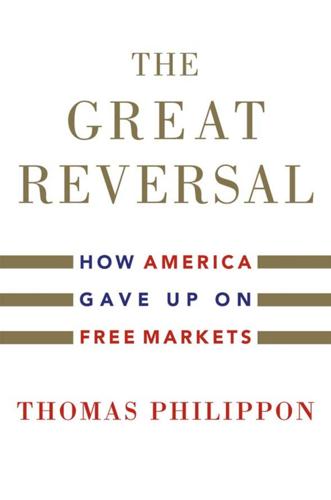
The Great Reversal: How America Gave Up on Free Markets
by
Thomas Philippon
Published 29 Oct 2019
For instance, the cost of sending $200 in the World Bank sample of forty-eight sending countries has fallen from 9.8 percent to 7.1 percent over the past decade. Of course, 7.1 percent is still expensive. But at least the trend is in the right direction. For fintech to really succeed, however, regulations must be adapted. As in other industries, fintech startups propose disruptive innovations for the provision of specific services. The key advantages of incumbents are their customer base, their ability to forecast the evolution of the industry, and their knowledge of existing regulations. The key advantage of startups is that they are not held back by existing systems and are willing to make risky choices.

A World Without Work: Technology, Automation, and How We Should Respond
by
Daniel Susskind
Published 14 Jan 2020
Economists who worry about “nothing but high prices and restrictions of output” are missing the bigger picture, he said: economic dominance by any company is not a permanent state of affairs. In time, today’s monopolies will be blown away by the “perennial gale of creative destruction.” New ones will inevitably take their place, but only temporarily, for they, too, would eventually be broken up by the same storms.23 These are the intellectual origins of the idea of “disruptive innovation,” so popular today among management theorists and strategy consultants. And Schumpeter was right: time and again, companies that seemed to be permanent fixtures of economic life have faded away. Take the Fortune 500, an annual list of the five hundred largest corporations in the United States, which together make up about two-thirds of the American economy.

Drunk: How We Sipped, Danced, and Stumbled Our Way to Civilization
by
Edward Slingerland
Published 31 May 2021
If pubs and cafés are crucibles of innovation, we should see their replacement with sterile teleconferencing causing the same stagnation in collective creativity that followed the imposition of Prohibition in the early-twentieth-century United States.40 People working from home, interacting with colleagues only through video chat and email and text, have felt not only more alienated and disconnected, but have also likely experienced fewer creative insights, lacking the stimulus of meandering, unpredictable, and therefore potentially innovative discussions. Video meetings are probably more efficient; but efficiency, the central value of Apollo, is the enemy of disruptive innovation. The pub doesn’t just make us feel better; used properly, it makes us, in the long run, work better. Those aspects of our chimpanzee or wolf nature that keep us narrowly on task and alienated from one another—goal orientation, self-control, self-interest—are most effectively and thoroughly cast aside by throwing people together in person, surrounding them with multi-sensory distractions, and allowing them to gradually but steadily downregulate their PFCs with intoxicants.
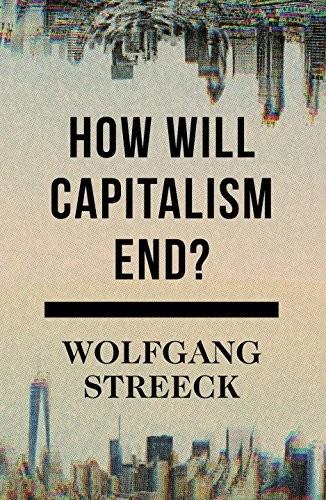
How Will Capitalism End?
by
Wolfgang Streeck
Published 8 Nov 2016
It is therefore doomed to be overtaken in the competitive struggles of the contemporary marketplace, where it is not enough for something to work if something else promises higher profits. Disruption may be considered the neoliberal version of ‘creative destruction’: more ruthless, more out-of-the-blue, and less willing to take prisoners or accept delay in order to be ‘socially compatible’. While for those at the receiving end disruptive innovation can be catastrophic, regrettably they have to be sacrificed as collateral damage on the Darwinian battlefield of global capitalism. Resilience is the other term on the rise, having recently been imported into social science and policy from bacteriology, engineering and psychology.63 In the political economy literature the term is, confusingly at first glance, used both for the capacities of individuals and groups to withstand the onslaught of neoliberalism,64 and for the ability of neoliberalism as a social order, or disorder, to persist in spite of its theoretical poverty and practical failure to prevent or repair its own collapse in 2008.65 While the two meanings may seem to be opposed to each other, this may not necessarily be so, as the practices that make it possible for individuals to survive under neoliberalism may also help neoliberalism itself to survive.
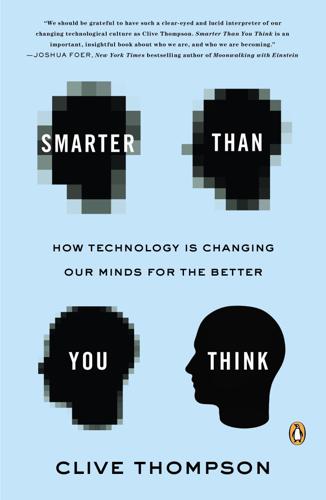
Smarter Than You Think: How Technology Is Changing Our Minds for the Better
by
Clive Thompson
Published 11 Sep 2013
Michele Hilmes and Jason Loviglio (New York: Routledge, 2002), 41–62; Michael Haworth and Stephanie Hopkins, “On the Air: Educational Radio, Its History and Effect on Literacy and Educational Technology,” ETEC540 Community Weblog, accessed March 24, 2013, blogs.ubc.ca/etec540sept09/2009/10/28/on-the-air-educational-radio-its-history-and-effect-on-literacy-and-educational-technology-by-michael-haworth-stephanie-hopkins/. computers have been the most successful in infiltrating classrooms: The sixty-billion-dollar estimate comes from Clayton M. Christensen, Michael B. Horn, and Curtis W. Johnson, Disrupting Class: How Disruptive Innovation Will Change the Way the World Learns (New York: McGraw-Hill, 2008), 11–12; Matt Richtel’s story on Apple is “Silicon Valley Wows Educators, and Woos Them,” The New York Times, November 4, 2011, accessed March 24, 2013, www.nytimes.com/2011/11/05/technology/apple-woos-educators-with-trips-to-silicon-valley.html; the ratio of computers is in Christensen et al., Disrupting Class, 2–3.

The Blockchain Alternative: Rethinking Macroeconomic Policy and Economic Theory
by
Kariappa Bheemaiah
Published 26 Feb 2017
Patrick O'Sullivan, The Philosophy, Politics and Economics of Finance in the 21st Century: From Hubris to Disgrace (pp. 370-391). Routledge. WEF. (2015). Deep Shift Technology Tipping Points and Societal Impact . Davos: World Economic Forum - Global Agenda Council on the Future of Software & Society. WEF. (2015). The Future of Financial Services- How disruptive innovations are reshaping the way financial services are structured, provisioned and consumed . Davos: World Economic Forum. World Bank. (2015). Remittance Prices WorldWide - Issue Number 15 . World Bank. Yurcan, B. (2016, May 23). What Banks and Fintech Need to Ponder Before They Partner . Retrieved from American Banker: http://www.americanbanker.com/news/bank-technology/what-anks-and-fintech-need-to-ponder-before-they-partner-1081139-1.html?
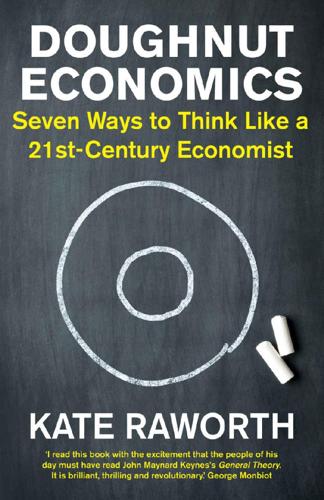
Doughnut Economics: Seven Ways to Think Like a 21st-Century Economist
by
Kate Raworth
Published 22 Mar 2017
, Guardian, 24 November 2012, available at: https://www.theguardian.com/environment/2012/nov/24/growing-food-in-the-desert-crisis 36. Lacy, P. and Rutqvist, J. (2015) Waste to Wealth: The Circular Economy Advantage. New York: Palgrave Macmillan, pp. 79–80. 37. Muirhead, S. and Zimmermann, L. (2015) ‘Open Source Circular Economy’, The Disruptive Innovation Festival 2015. 38. Open Source Circular Economy: mission statement. https://oscedays.org/open-source-circular-economy-mission-statement/ 39. Personal communication with Sam Muirhead, 27 January 2016. 40. Apertuso https://www.apertus.org/ 41. OSVehicle https://www.osvehicle.com/ 42. Sénamé Kof Agbodjinou and the W.
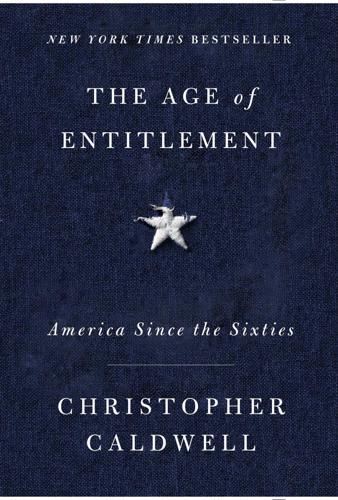
The Age of Entitlement: America Since the Sixties
by
Christopher Caldwell
Published 21 Jan 2020
Democrats were three times as likely (51 percent) as Republicans (17 percent) to support its goals. The Movement for Black Lives (M4BL) called for an “end to the war on Black trans, queer and gender nonconforming people.” Travis Gosa, an Africana studies professor at Cornell and the author of Remixing Change: Hip Hop and Obama, likened it to the Silicon Valley philosophy of disruptive innovation and called the movement “digital.” There was a place in Black Lives Matter for the Democratic donor class, too. Across the country you could see rainbow flags flying alongside Black Lives Matter posters in rich and academic neighborhoods—and only in those neighborhoods. The antithesis between “the regime” and “the street” was fading.
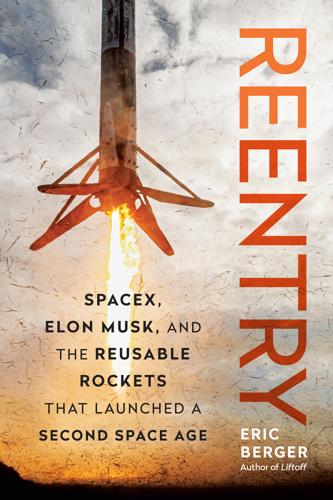
Reentry: SpaceX, Elon Musk, and the Reusable Rockets That Launched a Second Space Age
by
Eric Berger
Published 23 Sep 2024
It is important for SpaceX and the Mars vision that this continues. The Falcon 9 is the most reliable, advanced, and cost-effective rocket in the world. And yet Musk is pushing his engineering teams every day to obsolete it as rapidly as possible with Starship. An established company does not do that. But a disruptive, innovative one does. To remain on a glidepath for success, therefore, Musk faces huge challenges in the years ahead. He must remain an agent of change and disruption, while not becoming an agent of chaos and distraction. He must avoid the path of Howard Hughes, an American aerospace engineer who half a century ago descended from magnificent entrepreneurship into eccentric madness.

How the Other Half Banks: Exclusion, Exploitation, and the Threat to Democracy
by
Mehrsa Baradaran
Published 5 Oct 2015
MARKET INNOVATIONS These market answers to the problem of banking the poor have involved pressing mainstream banks into lending small-dollar loans, targeting neglected communities through the CRA, or employing grassroots community solutions such as ShoreBank and microcredit. Today, many claim that the answer to banking the unbanked lies in yet-to-be-developed technology. These “disruptive innovators” can use new technology to underprice banks. As self-described “visionaries,” these innovators view the issue of reaching the unbanked as a specific market problem.62 A venture capitalist who funded companies trying to offer services to the unbanked explained to Bloomberg News that he saw the unbanked as a “tremendous market opportunity” for his firm to invest in and claimed that the answer to banking the unbanked lies in technology creating new products.

Machine, Platform, Crowd: Harnessing Our Digital Future
by
Andrew McAfee
and
Erik Brynjolfsson
Published 26 Jun 2017
He maintained that smaller, younger, more entrepreneurial firms—companies that had no interest in maintaining the status quo—were more likely to come up with truly novel goods and services. As he put it, “In general it is not the owner of stage coaches who builds railways.” And indeed, Clay Christensen’s landmark work on disruptive innovations showed that disruptions rarely came from successful industry incumbents and, in fact, often took them very much by surprise. Another powerful line of research on innovation emerged from the work of our MIT colleague Eric von Hippel, who highlighted the large role that “lead users” play in coming up with innovations in many domains.

Radical Technologies: The Design of Everyday Life
by
Adam Greenfield
Published 29 May 2017
Even the enthusiasts and true believers have started to reckon with its many limitations, tiptoeing warily right up to the cusp of confessing its failure. Confronted with empirical evidence of the network’s concentration, or the declining interest in accepting Bitcoin at retail, they’ve started to bruit about instead the notion that electronic cash was never really the point at all, that the genuinely disruptive innovation is blockchain applications. (Depending on what exactly they mean by “blockchain,” they may even be right.) Most of the remaining Bitcoin-specific buzz you hear is merely the sound of giant institutions hedging their bets—and if they can eke a tenth of a point here or there in the meantime, by moving private bank liabilities or other debt obligations across the blockchain, so much the better.
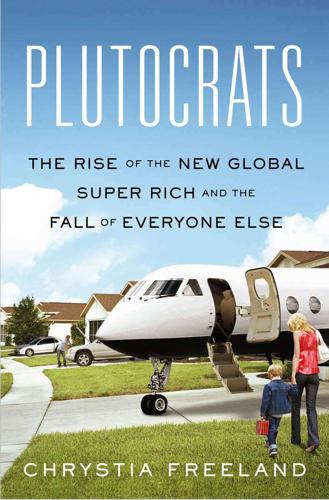
Plutocrats: The Rise of the New Global Super-Rich and the Fall of Everyone Else
by
Chrystia Freeland
Published 11 Oct 2012
He believes that the global economic change we are living through today is unprecedented in its scale and impact. “Britain’s classic industrial revolution is far less impressive than what has been going on in the past thirty years,” he told me. The current productivity gains are larger, he explained, and the waves of disruptive innovation much, much faster. Joel Mokyr, an economist at Northwestern University and an expert on the history of technological innovation and on the industrial revolution, agrees. “The rate of technological change is faster than it has ever been and it is moving from sector to sector,” Mokyr told me.
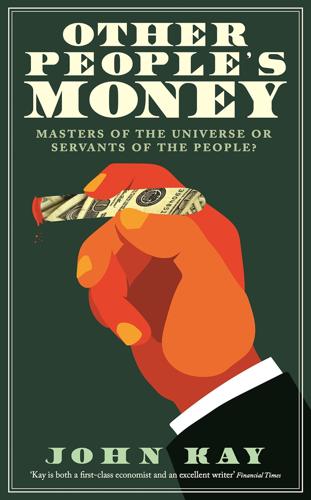
Other People's Money: Masters of the Universe or Servants of the People?
by
John Kay
Published 2 Sep 2015
I once joked with beginning students that money existed because when a pipe burst it took too long to find a plumber in need of economics lectures – but today it is possible to locate that plumber. It is improbable that in fifty – perhaps twenty – years from now the deposit channel will have the central role in the financial system that it has occupied for centuries by virtue of its link to payments. The payment system is ripe for disruptive innovation, but to date entrants – such as PayPal, Square and, most recently, Apple Pay – have preferred to shelter under the umbrella of the high charging structure established by inefficient incumbent banks. This cautious sharing of oligopoly profits will not persist indefinitely, and in time the payment system will become an inexpensive utility distinct from the deposit channel.
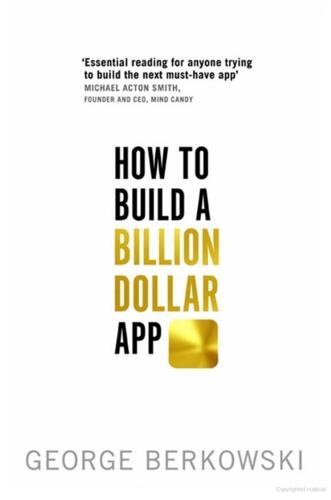
How to Build a Billion Dollar App: Discover the Secrets of the Most Successful Entrepreneurs of Our Time
by
George Berkowski
Published 3 Sep 2014
• Along with systematic acquisition and retention, you need to make sure that you have great communication channels with users to make sure the app is evolving with their needs and desires. Business model • Your business model is going to require consistent tuning no matter what stage you’re at. At this scale, small fraction-of-a-percentage-point improvements are going to translate into big profits. • At the same time, be on the lookout for disruptive innovations, to make sure that you’re ahead of the pack and aware of precisely everything your competitors are doing. Valuation • Once again, at this scale pretty much everything goes out of the window. If you keep your eyes on growth, profits and great product, you’re going to drive valuation. Investment • In terms of investment, things stay the same.
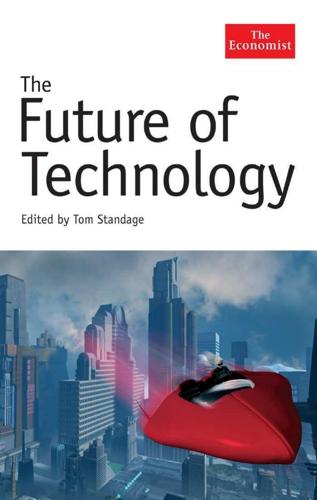
The Future of Technology
by
Tom Standage
Published 31 Aug 2005
.; wireless technology competitors 202–3 concepts 147, 200, 202–32 future prospects 202–3 hard disks 204–8, 219–20 iPod music-players ix, 99–100, 102, 172, 192, 203, 204, 207–8, 219–29 media hubs 202–3 music 204, 207–8, 219–29 PCs 202–3 UWB 96–7, 214–19 Wi-Fi 34–5, 66–7, 93, 95–7, 153, 203, 209–18 digital immigrants 81, 93, 109 digital natives 81, 93 digital video recorders (DVRs) 205–6 direct-sequence ultrawideband (DS-UWB) 215–17 disaster-recovery systems 43–4 Dish Network 205 Disney 168 disruptive innovations, concepts 107–10, 200, 326 Diversa 253–4 DNA 236–41, 243–4, 247, 250, 262, 265, 312, 328 Dobbs, Lou 144 Dobkin, Arkadiy 130, 142 Dolly-the-sheep clone 256, 268 Donaldson, Ken 317 Dorel Industries 140 dotcom boom vii, 19, 37–9, 66, 79–81, 90, 92, 162, 309, 322, 339 double-clicking dangers, viruses 59–60 Dow 259–60, 263 DreamWorks 186 Drexler, Eric 316 DS, Nintendo 191–3 DS-UWB see direct-sequence ultrawideband INDEX Dun & Bradstreet 126 DuPont 259–60 DVD technology 203, 214, 224, 315 DVRs see digital video recorders E E*Trade 37 e-commerce 14, 71, 113 see also internet e-homes see digital homes e-mail viii, 42–57, 59–60, 99, 101, 104–6, 150, 156–7, 180 see also internet historical background 106 eBay 37, 91 economics, cutting-edge economics 17 The Economist x, 7, 66 Edison, Thomas Alva 82–3, 289 eDonkey 229 EDS 19–20, 60, 88, 120, 126, 134 Eigler, Don 310 electric cars 284, 290, 291–8 Electric Power Research Institute (EPRI) 285–9, 290, 295–6 electricity fuel cells 274–9, 280–1, 289–90, 297–8, 301, 315, 325 green buildings 233, 299–304 hybrid cars 233, 284, 291–8 hydrogen 233, 262–4, 271, 274–9, 289–90, 297–8 lithium-ion batteries 233, 280–4 micropower concepts 289 nanotechnology 314–15 power grids 233, 285–90 storage problems 275–6, 289–90 electrification age ix, 5, 19, 23, 39, 82, 83, 84, 134 Electronic Arts 187, 190 electronic-manufacturing services (EMS), mobile phones 155–6, 159–60 electrons 307 Eli Lilly 44 Ellison, Larry 5, 21–2, 38–40 embryonic stem cells 268–9 EMI 222–9 Emotion Engine chips 199–200 Empedocles, Stephen 321 employees future job prospects 136–9, 144–6 office boundaries 80–1, 94 outsourcing viii, 112–46 resistance problems 31 security threats 58–63, 69 VOIP 104–6 EMS see electronic-manufacturing services encryption 53–4, 86–7 energy internet 285–90 energy technology ix–x, 233, 274–304, 314–15 alternative production-methods 275–6, 286, 289 concepts 274–304, 314–15 demand forecasts 277–9 fuel cells 233, 262–4, 271, 274–9, 280–1, 289–90, 297–8, 301, 315, 325 green buildings 233, 299–304 hybrid cars 233, 284, 291–8 hydrogen 233, 262–4, 271, 274–9, 289–90, 297–8 lithium-ion batteries 233, 280–4 nanotechnology 314–15 power grids 233, 285–90 production costs 275–6 renewable energy 275–6, 286, 289, 300 Engelberger, Joe 334 enterprise consumers 94–7 enterprise software 20, 35 Environmental Defence 319 enzymes, biotechnology 258–64 Epicyte 256–7 EPRI see Electric Power Research Institute Eralp, Osman 225 Ericsson 155–6, 158, 171 ETC 317–18 Ethernet 210–11 Europe see also individual countries fuel cells 274 mobile phones 163–9, 174 outsourcing 140–6 EV-DO see CDMA...
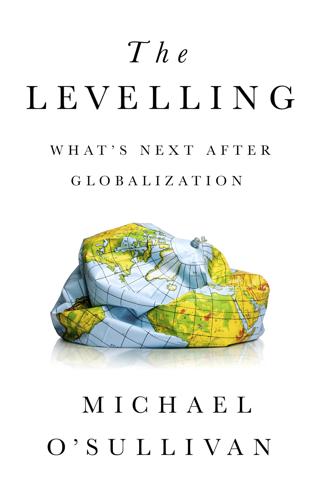
The Levelling: What’s Next After Globalization
by
Michael O’sullivan
Published 28 May 2019
In more detail, 257 women stood for congressional seats in 2018, as compared to only 48 in 1978. These new candidates so far are disparate, mostly suburban-based, and with a “pop-up,” social media–driven quality. They represent both frustration at the current political system and the first stages of a response to it through political entrepreneurship. Disruption Innovation and disruption characterize many industries and many walks of life. There is no reason why politics should be exempt. Take business as an analogy: new companies and ventures often succeed because of a new technology or a shift in consumer behavior. Of the top ten companies by market capitalization in the United States, eight did not exist twenty years ago.
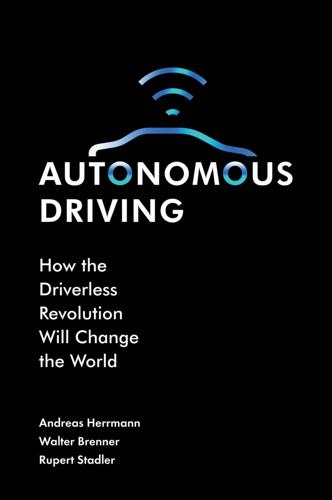
Autonomous Driving: How the Driverless Revolution Will Change the World
by
Andreas Herrmann
,
Walter Brenner
and
Rupert Stadler
Published 25 Mar 2018
Automotive incumbents operate according to a rich legacy of conventions and adhere to rigid, rigorous, and unique product-development practices. The culture of the car manufacturers requires consistency, quality and the minimisation of all kinds of risks, and promotes incremental hardware innovations. On the other hand, technology companies prefer an experimental, rapidly moving culture, which rewards disruptive innovations and risk taking. Carmakers reengineer their core products approximately every seven years, with facelifts every three or four years, but do not update existing products. Tech players replace their products about every two years, carry out substantial updates every two months, and provide continual updates for existing products.

These Strange New Minds: How AI Learned to Talk and What It Means
by
Christopher Summerfield
Published 11 Mar 2025
Many have a personal stake in the success of AI – they work for frenetic new start-ups, own equity in tech multinationals, or have invested heavily in bitcoin. Many are just a little bit too enamoured of Elon Musk. Many live around the Bay Area, which has long fostered an excitable culture of disruptive innovation, and remains the beating heart of progress in AI. Most are young and affluent, and would personally benefit from lower taxes, or a bonfire of business regulations. So techno-utopianism may be a convenient philosophy for well-heeled young tech entrepreneurs to buy into – it is an elite form of populism, like Breitbart for the blockchain classes.[*3] But there is no doubt that many genuinely do believe that AI is going to save us all, and that, in the final words of the manifesto, ‘it’s time to build’.

Blockchain Revolution: How the Technology Behind Bitcoin Is Changing Money, Business, and the World
by
Don Tapscott
and
Alex Tapscott
Published 9 May 2016
Instead of putting the taxi driver out of a job, blockchain puts Uber out of a job and lets the taxi drivers work with the customer directly.”27 Rewiring the Financial System for Speed and Inclusion The financial services industry makes our global economy hum, but the system today is fraught with problems. For one, it is arguably the most centralized industry in the world and the last industry to feel the transformational effect of the technological revolution. Bastions of the old financial order such as banks go to great lengths to defend monopolies and often stymie disruptive innovation. The financial system also runs on outmoded technology and is governed by regulations dating back to the nineteenth century. It is rife with contradictions and uneven developments, making it sometimes slow, oftentimes insecure, and largely opaque to many stakeholders. Distributed ledger technology can liberate many financial services from the confines of old institutions, fostering competition and innovation.

Destined for War: America, China, and Thucydides's Trap
by
Graham Allison
Published 29 May 2017
As China’s economy has gotten bigger, its guns and tanks—and their twenty-first-century equivalents—have gotten better, and allowed for a new level of competition with other great powers, especially the United States. Just as technology start-ups like Facebook and Uber have used the concept of disruptive innovation to upend previously dominant firms, the Chinese military is developing new technologies that can counter ships, planes, and satellites that the US has developed over decades—and for a fraction of the cost. Today, states playing catch-up need not replicate investments that their competitors made in hardware and other “legacy” platforms.
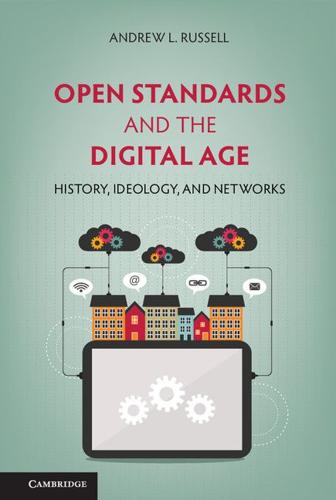
Open Standards and the Digital Age: History, Ideology, and Networks (Cambridge Studies in the Emergence of Global Enterprise)
by
Andrew L. Russell
Published 27 Apr 2014
Eventually, they also learned that standards – if they were published and maintained in a more open and public process – also could undermine proprietary interests and hierarchical control. Conclusions By design, the architects of the modern Bell System did not pursue a breakneck pace of development in the telephone art. AT&T managers since the 1890s tempered their company’s utilization of radical or disruptive innovations in favor of a more incremental approach. The most influential engineers of the early Bell System, including Edward Hall, John Carty, Frank Jewett, and particularly Bancroft Gherardi, used standardization as the centerpiece of this incremental approach to maintaining and improving the Bell System.

The Future of Ideas: The Fate of the Commons in a Connected World
by
Lawrence Lessig
Published 14 Jul 2001
Leading companies within a particular market will outperform others in perfecting the technology that defines their existing market. They will consistently develop superior products for continuing the development of their product line. What these companies can't do is identify and develop disruptive technologies. (As David Isenberg puts it, “[T]he milk of disruptive innovation doesn't flow from cash-cows.”)16 And this is not because a company is irrational or because it doesn't understand the nature of the market. The blindness that keeps the company fixed in a dying path is actually its clear understanding of probable returns. It sees real revenue from existing customers who need marginally better technology.
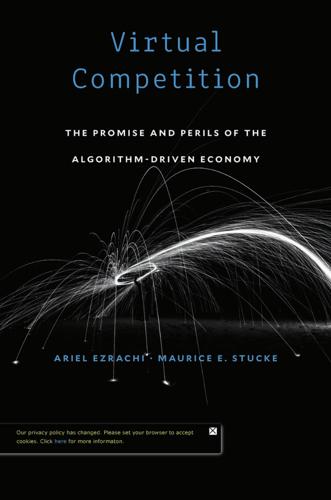
Virtual Competition
by
Ariel Ezrachi
and
Maurice E. Stucke
Published 30 Nov 2016
Our concerns are not with technological advances or successful online businesses. Our concerns go deeper, to the core of the new market dynamics—where entry is possible, but expansion will likely be controlled by super-platforms; where choice is ample, but competition is limited; and where disruptive innovative threats emerge, but are eliminated through acquisitions or exclusionary practices. The competitive façade masks the wealth transfer, and the targets of anticompetitive practices—the buyers—are often unaware of the extent of the manipulation. Thus, the competition agency must look beyond the façade to see whether competitors are racing to the bottom in finding new ways to exploit us.
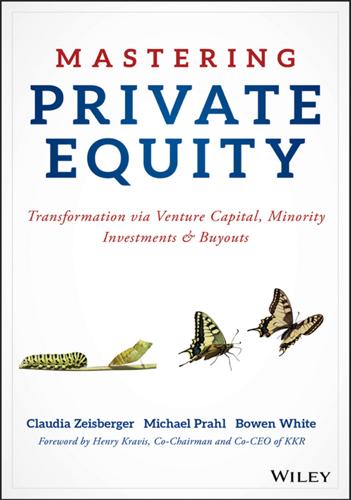
Mastering Private Equity
by
Zeisberger, Claudia,Prahl, Michael,White, Bowen
,
Michael Prahl
and
Bowen White
Published 15 Jun 2017
Corporate venture capital (CVC) is created by business entities not usually engaged in financing and investing; INTEL Capital, Unilever Ventures and Google Ventures are among the most prominent. These investors often leverage the expertise of their parent organizations and invest in industries where the parent is active. The main incentive to start a CVC program is to gain early access to disruptive innovations that may help (or hinder) the strategic goals of the parent company, with financial returns often a secondary consideration. Closing Fast-growing companies, incubated around a creative idea on how to solve a problem or explore an opportunity, are not a coincidence. Big successes require a meeting of minds between a skilled founding team and investors providing funding and mentorship to offer advice if and when needed.

Super Continent: The Logic of Eurasian Integration
by
Kent E. Calder
Published 28 Apr 2019
Although containerization was an earlier development, technologies 86 chapter 4 in the latter areas, especially intermodal transfer, have been evolving rapidly over the past decade and promise to evolve still further with the introduction of Internet of Things (IoT) and 5th-Generation (5G) wireless network technology, giving promise of further disruptive innovation in the coming years. IoT allows, for example, the real-time monitoring of goods as well as assets from individual cases to the whole company. It also allows organizations to automate procedures that were previously manual and to optimize how multiple logistics systems work together. Such innovations lead to higher utilization of existing assets, smart inventory management, and high-quality predictive maintenance, as well as accurate end-to-end tracking of high-value goods.
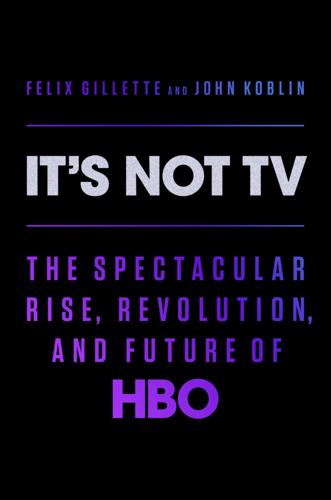
It's Not TV: The Spectacular Rise, Revolution, and Future of HBO
by
Felix Gillette
and
John Koblin
Published 1 Nov 2022
Years later, they would look back on 2006 and 2007 as the time when HBO failed to seize control of the streaming era of home entertainment, ultimately giving Netflix a huge head start. “It was a major wasted opportunity,” Moloshok says. “HBO probably would have destroyed Netflix, which is what big companies do when they buy disruptive innovators,” Penney says. “But on the other hand, who knows?” Of HBO’s three new co-presidents, it was Richard Plepler whose job description was changing the most. In addition to running HBO’s communications, he would now be overseeing HBO’s programming decisions. He would be helped on the West Coast by Michael Lombardo, a lawyer who had joined HBO in the 1980s and spent much of his career working on business affairs.
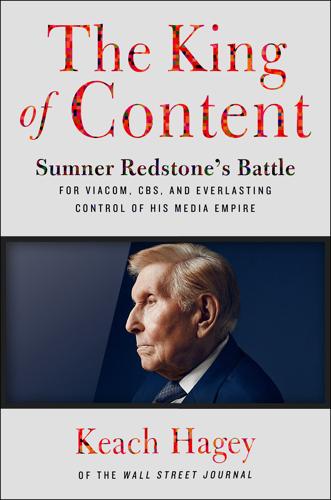
The King of Content: Sumner Redstone's Battle for Viacom, CBS, and Everlasting Control of His Media Empire
by
Keach Hagey
Published 25 Jun 2018
The idea was deceptively simple: take the free promotional videos that bands were making to help sell their albums and string them together on a television channel aimed at twelve- to thirty-four-year-olds, a demographic that mainstream television executives more or less ignored at the time. MTV launched on August 1, 1981, with the Buggles’ paean to disruptive innovation, “Video Killed the Radio Star.”16 One of Pittman’s first hires was Freston. Tall and wild-haired with deep-set blue eyes, Freston arrived at the countercultural idea factory of MTV with the least traditional background of all, having spent most of the last decade running a clothing company in Afghanistan and India.
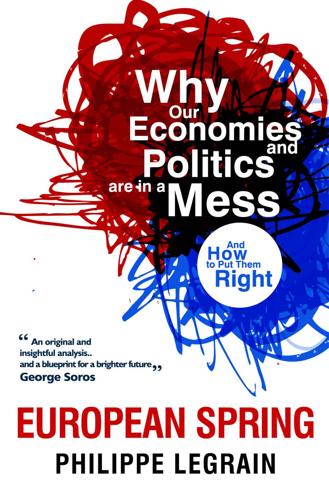
European Spring: Why Our Economies and Politics Are in a Mess - and How to Put Them Right
by
Philippe Legrain
Published 22 Apr 2014
What really matters are the process and outcomes: how new ideas come about and how they shake up the economy to make people better off. A fundamental fallacy of orthodox economics is viewing economies as computable machines that tend towards a steady state. A theoretical framework that suggests economies naturally settle down is going to find it hard to explain disruptive innovation and enterprise as anything more than a contrived device. But in fact, economies are dynamic organisms that are forever evolving in unpredictable ways as the millions of human beings within them interact. As people spark off each other, they generate lots of new ideas. Enterprising individuals, businesses and organisations try some of them out.
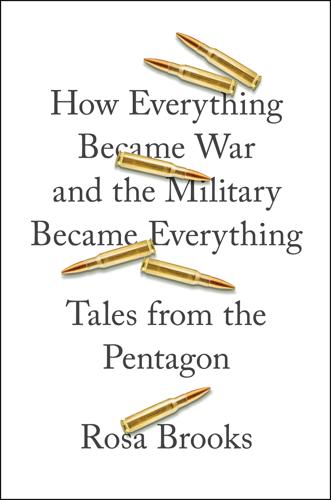
How Everything Became War and the Military Became Everything: Tales From the Pentagon
by
Rosa Brooks
Published 8 Aug 2016
“Attack of the Drones,” Economist, September 03, 2009, accessed January 22, 2016, www.economist.com/node/14299496; Dan Parsons, “Air Force F-35s, Drones May Square Off in Budget Battle,” National Defense Magazine, February 2012, www.nationaldefensemagazine.org/archive/2012/February/Pages/AirForceF-35s,DronesMaySquareOffinBudgetBattle.aspx; Deloitte, “Public Sector, Disrupted: How Disruptive Innovation Can Help Government Achieve More for Less,” accessed January 22, 2016; “AeroWeb | AGM-114 Hellfire Missile,” AeroWeb, accessed January 22, 2016, www.bga-aeroweb.com/Defense/AGM-114-Hellfire-Missile-System.html; “Air Force’s Newest Fighter Jet, F-22 Raptor Makes Combat Debut,” PBS, accessed January 22, 2016, www.pbs.org/newshour/rundown/air-forces-newest-fighter-jet-f-22-raptor-makes-combat-debut/. 19.

Connectography: Mapping the Future of Global Civilization
by
Parag Khanna
Published 18 Apr 2016
“Economic Interdependence and War: A Theory of Trade Expectations.” International Security 20, no. 4 (Spring 1996). Copetas, A. Craig. Metal Men. HarperCollins, 1986. The Costs of the Israeli-Palestinian Conflict. Rand, 2015. Cottrill, Ken. “Transforming the Future of Supply Chains Through Disruptive Innovation.” MIT Center for Transportation and Logistics, Working Paper, Spring 2011. Craven, Paul, and Barry Wellman. “The Network City.” Sociological Inquiry 43, no. 3–4 (July 1973). Crowston, Kevin, and Myers, Michael D. “Information Technology and the Transformation of Industries: Three Research Perspectives.”

Behemoth: A History of the Factory and the Making of the Modern World
by
Joshua B. Freeman
Published 27 Feb 2018
Imitation, licensing, and theft have allowed each wave of factory developers to incorporate past innovations, as industrial giantism leapt across oceans and political divides. But if resilient and durable as a totality, industrial giantism in any given place has proven unsustainable. Specific communities have experienced the giant factory not as a continuity of progress but as an arc of disruptive innovation, growth, decline, and abandonment. As historians Jefferson Cowie and Joseph Heathcott wrote in a book about American deindustrialization, “the industrial culture forged in the furnace of fixed capital investment was itself a temporary condition. What millions of working men and women might have experienced as solid, dependable, decently waged work really only lasted for a brief moment.”4 Especially in areas dominated by a single industry, when the cycle of factory giantism moved on, prolonged devastation resulted, even as somewhere else on the globe giant factories were creating new possibilities and wealth.

Daemon
by
Daniel Suarez
Published 1 Dec 2006
It felt good to be among them again. His depression had almost swallowed him whole when his first job was sent offshore. Then his second job. Then his third. Not much call for project managers in the States anymore. But now he understood again. The world made sense again—and he was still all for progress. Disruptive innovation, they called it. Change was good. Painful, but good. It made you stronger. When you stopped changing, you started dying. For the first time in years, he knew his situation was secure. He knew he could afford rent—even in his price-inflated neighborhood. That he could dress and live in a style befitting a man of his intelligence and education.

Capitalism in America: A History
by
Adrian Wooldridge
and
Alan Greenspan
Published 15 Oct 2018
He acquired coke-oven works to guarantee his carbon supply, iron mines to secure his ore, and railroads and shipping lines to ensure the steady flow of raw materials to his mills and finished products to his customers. Carnegie established an enduring advantage by moving first and building solid defenses. Yet he was always on the lookout for disruptive innovations that might threaten his mastery of the industry. In 1883, he bought his biggest rival, the Homestead Steel Works, which included a huge plant served by tributary coalfields and iron fields, a 425-mile-long railway, and a line of lake steamships. The bigger he got, the more he could reduce costs.
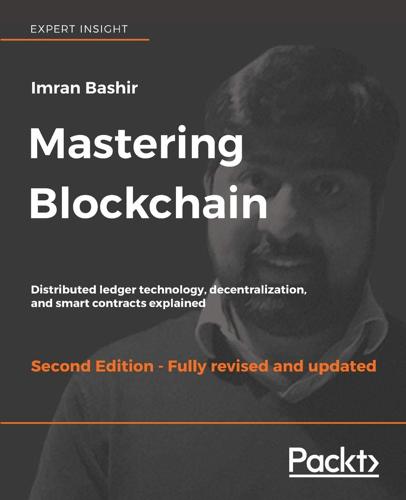
Mastering Blockchain, Second Edition
by
Imran Bashir
Published 28 Mar 2018
This poses a serious challenge and it seems that some regulation and control is beneficial in this scenario, but how can a blockchain be regulated? That is another critical question. It may not be prudent to create the regulatory laws first and then see if blockchain technology adapts to that because it might disrupt innovation and progress in this technology. It would be more sensible to let the blockchain technology grow first, just like the internet and when it reaches a critical mass then governing bodies can call for applying some regulation around the implementation and usage of blockchain technology. There are various examples where the Dark Web is used in conjunction with bitcoin to perform illegal activities.
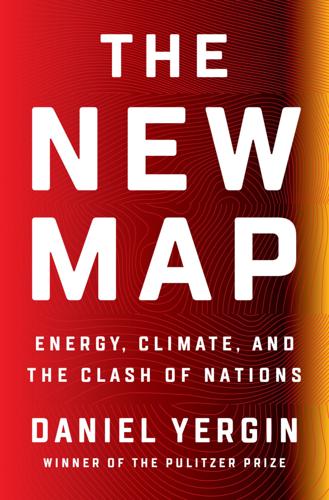
The New Map: Energy, Climate, and the Clash of Nations
by
Daniel Yergin
Published 14 Sep 2020
Once, GM’s then-CEO Rick Wagoner and Burns had got to talking about the fact that while many other industries had changed over a hundred years, the basic model of the auto industry was the same as it had been since Henry Ford’s Model T—“gas-fueled, run by an internal combustion engine, rolling on four wheels.” “What’s the car of the next hundred years going to look like?” Wagoner asked Burns. “If the automobile were being invented today, then what form would it take?” Burns reflected that “there haven’t really been any disruptive innovations in that time.” And he kept thinking, “That’s true of very few industries.” Autonomous cars could be a big part of the answer to Wagoner’s question—if they could work. Burns was also gripped by what he saw as the “most important sustainability issue faced by automobiles”—not energy or emissions, but a deadly epidemic in which 1.2 million people a year globally died in auto accidents.
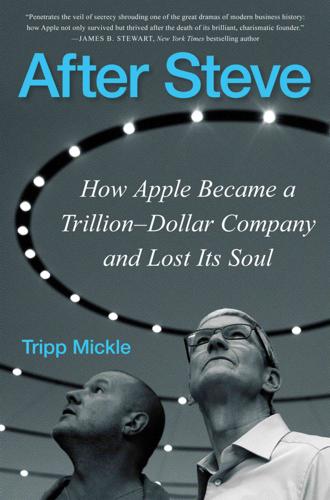
After Steve: How Apple Became a Trillion-Dollar Company and Lost Its Soul
by
Tripp Mickle
Published 2 May 2022
And loyal customers were concerned about the future of a beloved product innovator. A decade later, its share price was at a record high. Its market value had risen more than eightfold to about $3 trillion, and its dominance of the global smartphone market continued unabated. It had become the darling of Wall Street, even as it had lost some of its glimmer as a disruptive innovator. Most important, it hadn’t become the Sony, Hewlett-Packard, or Disney that Jobs had once feared. Its endurance and financial success were a testament to the men Jobs had deputized to lead the company forward. Cook, the operator, showed artistry in expanding Apple’s empire into China and services, while navigating the diplomatic headaches that confronted the corporate nation-state he built.
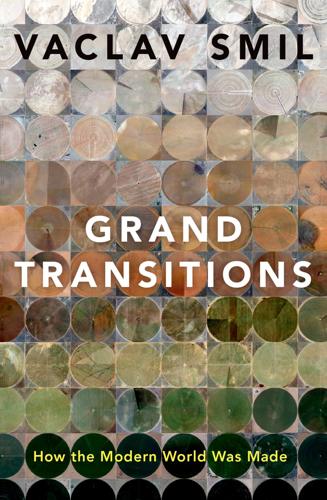
Grand Transitions: How the Modern World Was Made
by
Vaclav Smil
Published 2 Mar 2021
This reduction, from two-thirds to only about one-tenth of the global population, is another impressive illustration of an existential shift that has not received sufficient recognition, particularly when that shift is compared to those incessant professions of admiration and awe reserved for ephemeral electronic toys and for such “disruptive innovations” as repackaging Chinese manufactures into American cardboard boxes and selling them on Amazon. Rising per capita intakes of animal foodstuffs have provided more protein during childhood and adolescence and have resulted in taller bodies, first in North America, Europe, and Japan, and later also in many countries of Latin America and Asia.

Year's Best SF 15
by
David G. Hartwell; Kathryn Cramer
Published 15 Aug 2010
I spent fifteen years covering chip tech in Route 128 in Boston. When the almighty dollar ruled the tech world, I was glad that I’d made those connections. But times do change. Nations change, industries change. Industries change the times. Massimo had just shown me something that changes industries. A disruptive innovation. A breaker of the rules. “This matter is serious,” I said. “Yes, Olivetti’s people do read my weblog—they even comment there. But that doesn’t mean that I can leak some breakthrough that deserves a Nobel Prize. Olivetti would want to know, they would have to know, the source of that.” He shook his head.

Fantasyland: How America Went Haywire: A 500-Year History
by
Kurt Andersen
Published 4 Sep 2017
But by the time Luther launched the Reformation in 1517, sixty years later, twenty million books had been printed—and more of them were Bibles than anything else. Print it, and they will come. During the century after printed English Bibles appeared, the literacy rate among English people tripled. Now millions of Christians were able to make good on Luther’s DIY Christianity. The Catholic Church and its priestly elite were disintermediated. Disruptive innovation? No new technology, during the thousand years between gunpowder and the steam engine, was as disruptive as the printing press, and Protestantism was its first viral cultural phenomenon. Apart from devolving religious power to ordinary people—that is, critically expanding individual liberty—Luther’s other big idea was that belief in the Bible’s supernatural stories, especially those concerning Jesus, was the only prerequisite for being a good Christian.
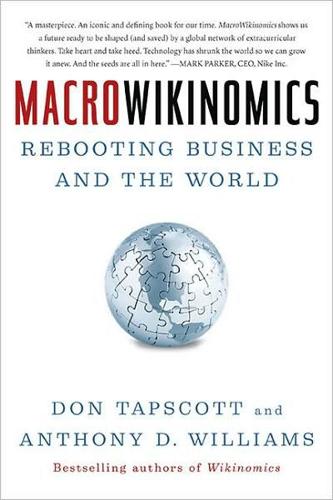
MacroWikinomics: Rebooting Business and the World
by
Don Tapscott
and
Anthony D. Williams
Published 28 Sep 2010
R&D departments are discouraged from investigating alternative technologies and so channel their resources into refining components, adding new features, or tweaking their existing product architectures. This strategy of marching down a well-defined product road map may pay dividends for some time. But complacency creates enormous vulnerability when disruptive innovations emerge that may threaten the product road map itself. It’s this vulnerability that the X Prize Foundation is trying to exploit by offering a financial incentive and a platform on which new entrants can successfully launch disruptive automotive solutions. Moving the Needle Another advantage of the contest model is that you only pay the winner.
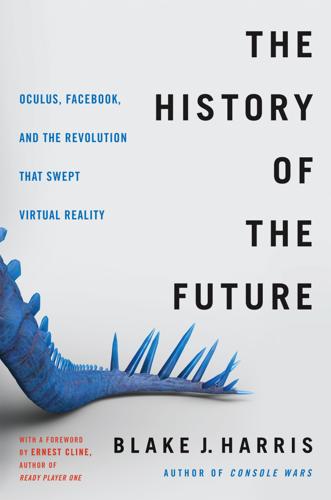
The History of the Future: Oculus, Facebook, and the Revolution That Swept Virtual Reality
by
Blake J. Harris
Published 19 Feb 2019
Within days of receiving that first demo at the Hilton, Nate Mitchell and Brendan Iribe determined that, for Oculus to succeed, they had to do more than just sell a product. This is true of selling any disruptive technology to consumers (and, of course, is true of all advertising to some degree as well). But what made this proposition even more difficult for Mitchell and Iribe was that unlike most disruptive innovations—be it a car, television, or smartphone—the Oculus Rift wasn’t an immediate upgrade over something similar that had come before. There was no horse and carriage to point to and say: Wouldn’t you prefer to ride in a car? Nothing like that could be said because nobody had ever tried to sell a mass-market virtual reality headset before, at least not in the past twenty years.

The Third Pillar: How Markets and the State Leave the Community Behind
by
Raghuram Rajan
Published 26 Feb 2019
INDUSTRY DOMINANCE AND MARKET POWER The benign view of an industry dominated by a few large firms has much to do with the Austrian economist Joseph Schumpeter. He believed that competitive discipline did not come from existing competitors in the market at a point in time, but from the disruptive innovator who would strike “not at the margins of the profits and their outputs of the existing firms but at their foundations and their very lives.”3 Schumpeter’s view was that a monopoly firm’s paranoia about possible future threats to its monopoly profits would be the spur to innovation, and the reason it would give its customers a good deal.
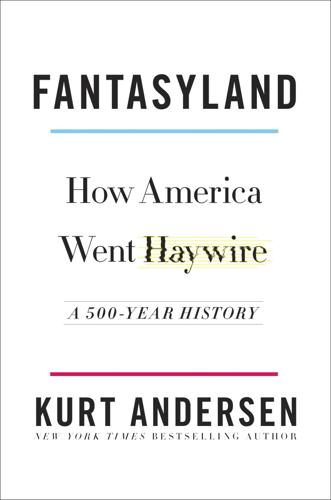
Fantasyland
by
Kurt Andersen
Published 5 Sep 2017
But by the time Luther launched the Reformation in 1517, sixty years later, twenty million books had been printed—and more of them were Bibles than anything else. Print it, and they will come. During the century after printed English Bibles appeared, the literacy rate among English people tripled. Now millions of Christians were able to make good on Luther’s DIY Christianity. The Catholic Church and its priestly elite were disintermediated. Disruptive innovation? No new technology, during the thousand years between gunpowder and the steam engine, was as disruptive as the printing press, and Protestantism was its first viral cultural phenomenon. Apart from devolving religious power to ordinary people—that is, critically expanding individual liberty—Luther’s other big idea was that belief in the Bible’s supernatural stories, especially those concerning Jesus, was the only prerequisite for being a good Christian.

Architects of Intelligence
by
Martin Ford
Published 16 Nov 2018
The biggest risk/opportunity of this technology is that it will take a lot of jobs that are currently being done by humans and have those be taken over to a lesser or greater extent by machines. There are social obstacles to adoption in many cases, but as robust increased performance is demonstrated, it will follow the standard disruptive innovation cycle. It is already happening to paralegals and cashiers at the supermarket, and it will soon happen to the people who stack the shelves. I think that all of that is going to be taken over in five or ten years by robots or intelligent agents. The question is to what extent can we carve out meaningful jobs around that for humans to do.

Blueprint: The Evolutionary Origins of a Good Society
by
Nicholas A. Christakis
Published 26 Mar 2019
In fact, as a species, humans have evolved to have these higher-order needs, including even for transcendence (which can involve our sense of duty to our social groups and the sense of meaning we derive from such selflessness), precisely in order to allow us to more efficiently satisfy the basic needs of life. Engineering New Social Worlds An understanding of, and respect for, our social blueprint is valuable for coping with radical new technologies that give humans entirely new powers to intervene in their social world. Of course, humans have had to cope with disruptive innovations with relevance to social organization in the past. For instance, the invention of cities, with the imposition of a less nomadic existence and a higher population density, affected social interactions. Humans responded to this both as individuals who live in this new way and also as a species, possibly evolving new capacities (such as resistance to the different kinds of urban-facilitated infections).

The Bill Gates Problem: Reckoning With the Myth of the Good Billionaire
by
Tim Schwab
Published 13 Nov 2023
Gladwell recounts how a single informal dinner involving eight of IV’s big-idea men led to thirty-six different invention ideas that might be patented. Though Gladwell didn’t seem to recognize it, his profile of IV essentially described a boys’ club of never-ending bull sessions, where self-styled polymaths came up with a lot of big ideas … but little more. Gladwell imagined that IV, in the decade ahead, would be a major disruptive, innovative, and revolutionary force driving social progress—the way, say, Alexander Graham Bell had been, changing the world with his telephone. Today, IV claims to have launched more than fifteen companies, but, oddly, its website names only eleven—none of which appears particularly consequential to humanity or the economy.
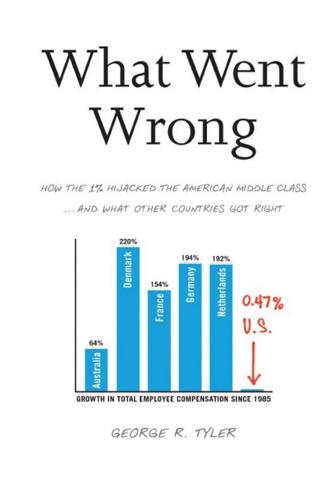
What Went Wrong: How the 1% Hijacked the American Middle Class . . . And What Other Countries Got Right
by
George R. Tyler
Published 15 Jul 2013
Judy Estrin, chief technology officer at Cisco, for example, notes that basic technologies for the iPad or the Facebook social network are increasingly being developed abroad, shrinking the stock of innovation in the domestic pipeline now.45 These trends have helped propel Chinese scientists to author the second highest number of peer-reviewed papers in international journals, and to trail only innovators in America, Japan, and Germany in filings with the Munich-based European Patent office in 2011.46 Here is how the Economist described this new world: “The world’s creative energy is shifting to the developing countries, which are becoming innovators in their own right rather than just talented imitators…. Emerging economies are not merely challenging that lead in innovation. They are unleashing a wave of low-cost, disruptive innovations that will, as they spread to the rich world, shake many industries to their foundations.”47 Technology transfer from the United States in combination with indigenous R&D explains how China has been able to export more high-technology goods than the United States since 2004. In a 2009 Harvard Business Review article, Gary Pisano and Willy Shin reviewed that process.

The Power Law: Venture Capital and the Making of the New Future
by
Sebastian Mallaby
Published 1 Feb 2022
In contrast, the United States has allowed national R&D expenditure to hover between 2.5 and 2.8 percent of GDP.[62] But on the negative side, China’s authoritarian political culture is ultimately at odds with freethinking entrepreneurship: a government with a vested interest in the status quo won’t risk upsetting the apple cart by unleashing disruptive innovation. A vivid illustration of this tension surfaced in the fall of 2020. In September, Alibaba signaled China’s remarkable technological progress by unveiling the Hanguang 800, a machine-learning chip that outclassed western competitors. Given that semiconductor design had hitherto been a Chinese weak spot, the announcement was a wake-up call to U.S. chip makers.
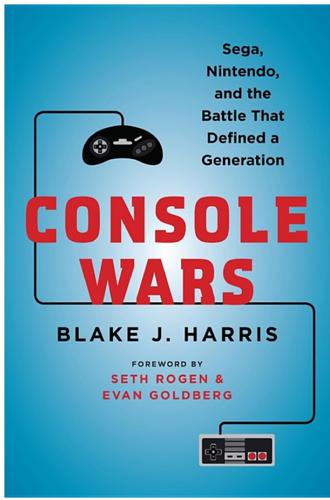
Console Wars: Sega, Nintendo, and the Battle That Defined a Generation
by
Blake J. Harris
Published 12 May 2014
Next it was getting rid of December 10 billing, which, once again, I get. You sell us something, you expect us to pay for it right away; that makes sense. So does North Bend, to a certain extent.” “North Bend” referred to Nintendo’s newly opened distribution center in North Bend, Washington, which was the latest disruptive innovation from Minoru Arakawa. In a pattern that could be traced back to his engineering roots, Arakawa was forever seeking ways to improve efficiency. As physical proof of this obsession, he carried around a thick tan Ultrasuede portfolio that was always overflowing with cost sheets, inventory reports, and all sorts of additional data that would put most company presidents to sleep.
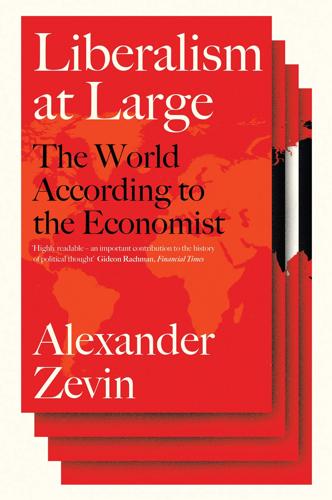
Liberalism at Large: The World According to the Economist
by
Alex Zevin
Published 12 Nov 2019
As May’s ‘strong and stable leadership’ campaign faltered, the Economist switched horses in mid-stream, advising a vote for the Liberal Democrats that June as a ‘down-payment’ on a future ‘party of the radical centre’ – à la France, where Emmanuel Macron had demolished old left-right oppositions with En Marche, inspiring ‘France, Europe and centrists everywhere.’11 At one moment ‘Bagehot’ bitterly compared Britain’s political class to a second-rate cricket team whose best batter was ‘a crypto-communist who has never run anything but his own mouth’; the next, he paid Corbyn a compliment, saluting him as a disruptive innovator.12 Months earlier in Italy, a similar schizophrenia was on display. When Prime Minister Matteo Renzi, a devotee of Blair’s third way, submitted constitutional changes designed to entrench him in power, the Economist came out against them. This provoked consternation from its own correspondent in Rome, who ventilated it off the record to La Repubblica.
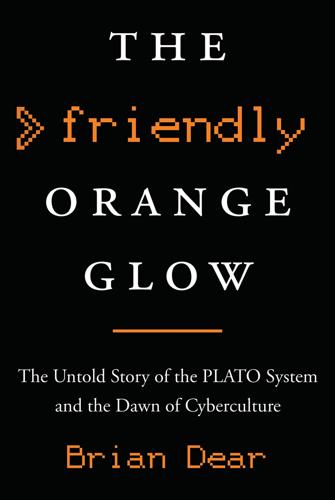
The Friendly Orange Glow: The Untold Story of the PLATO System and the Dawn of Cyberculture
by
Brian Dear
Published 14 Jun 2017
Unpublished essay, 2011. Cherian, M. From PLATO to Podcasts: Fifty Years of Federal Involvement in Educational Technology. Center on Education Policy, 2009. Chesnel, M. J. “A PLATO Lesson on Information Structures,” UIUC, 1974. Christensen, C. M., M. B. Horn, and C. W. Johnson. Disrupting Class: How Disruptive Innovation Will Change the Way the World Learns. New York: McGraw-Hill, 2008. Ciraolo, M. Adventures On-line. ANTIC magazine, March 1984, 19. Coulson, J. E. “A Computer-Based Laboratory for Research and Development in Education,” in Programmed Learning and Computer-Based Instruction: Proceedings of the Conference on Applications of Digital Computers to Automated Instruction, October 10–12, 1961, J.
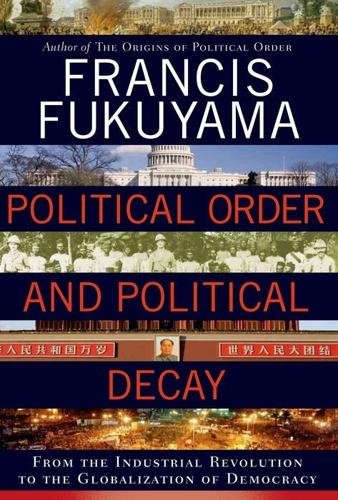
Political Order and Political Decay: From the Industrial Revolution to the Globalization of Democracy
by
Francis Fukuyama
Published 29 Sep 2014
All fixed, fast-frozen relations, with their train of ancient and venerable prejudices and opinions, are swept away, all newly-formed ones become antiquated before they can ossify. All that is solid melts into air, all that is holy is profaned, and man is at last compelled to face with sober senses, his real conditions of life, and his relations with his kind. Silicon Valley thinks that it invented “disruptive innovation,” but in fact the rate of social change across Europe and America was if anything higher at the time that Marx wrote than it is in the early twenty-first century. Social mobilization creates political change by creating new groups that demand participation in the political system. Throughout industrializing Europe and America in the late nineteenth century, workers began to join together in trade unions and pushed for higher wages, as well as better and safer working conditions.

Growth: From Microorganisms to Megacities
by
Vaclav Smil
Published 23 Sep 2019
Documented, historically embedded facts come first—cautious conclusions afterward. This is, of course, in contradistinction to many recent ahistoric forecasts and claims that ignore long-term trajectories of growth (that is, the requisite energetic and material needs of unprecedented scaling processes) and invoke the fashionable mantra of disruptive innovation that will change the world at accelerating speed. Such examples abound, ranging from all of the world’s entire car fleet (of more than 1 billion vehicles) becoming electric by 2025 to terraforming Mars starting in the year 2022, from designer plants and animals (synthetic biology rules) making the strictures of organismic evolution irrelevant to anticipations of artificial intelligence’s imminent takeover of our civilization.

Digital Empires: The Global Battle to Regulate Technology
by
Anu Bradford
Published 25 Sep 2023
In Europe, failure is viewed as a “personal tragedy,” whereas in Silicon Valley failure is seen as a badge of honor or rite of passage, leading to the mantra of “fail fast, fail often.”46 Instead of celebrating—or even merely accepting—failure, Europeans value stability, which cultivates a mentality that is antithetical to disruptive innovation.47 Finally, the innovation deficit in Europe can be partly attributed to the EU’s inability to attract the world’s best innovative talent through a proactive migration policy. In comparison, the US technology sector relies heavily on its ability to attract immigrants. Looking at the founders of the most successful US tech companies reveals a powerful story of the role of immigration behind these tech companies.